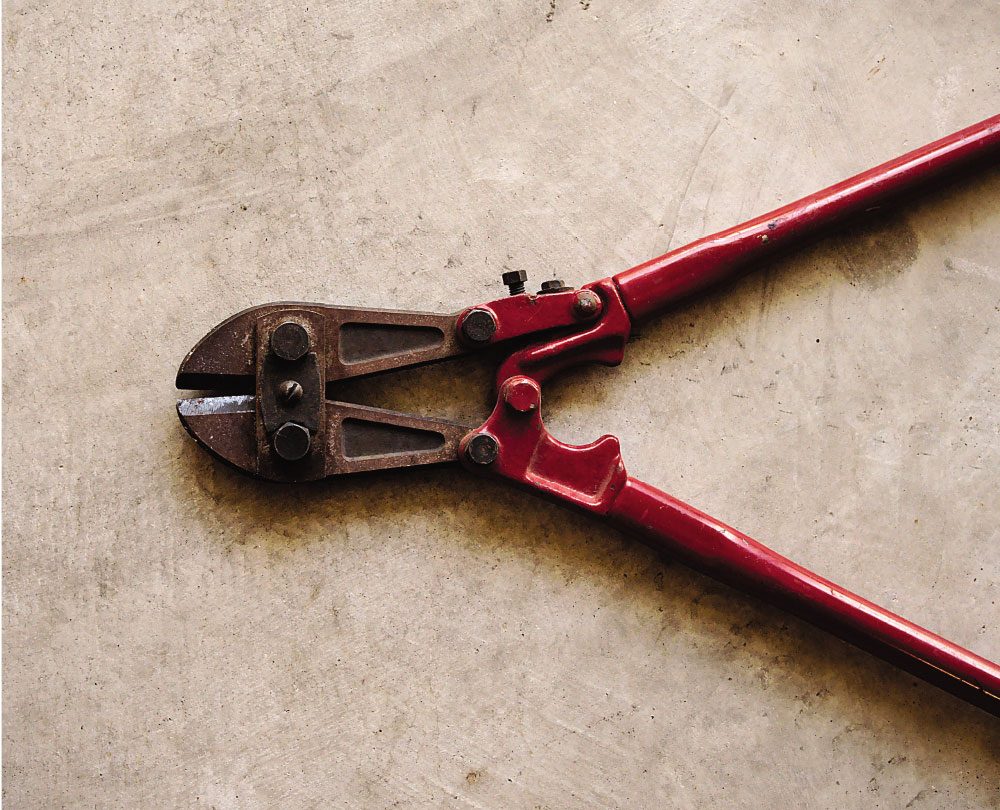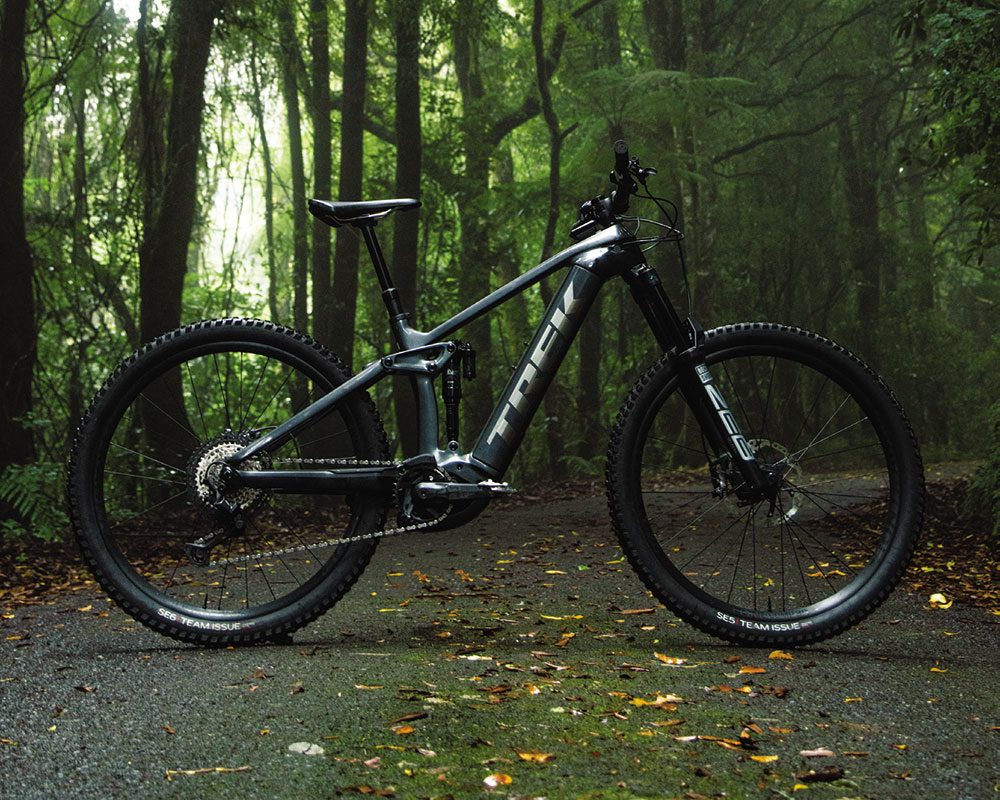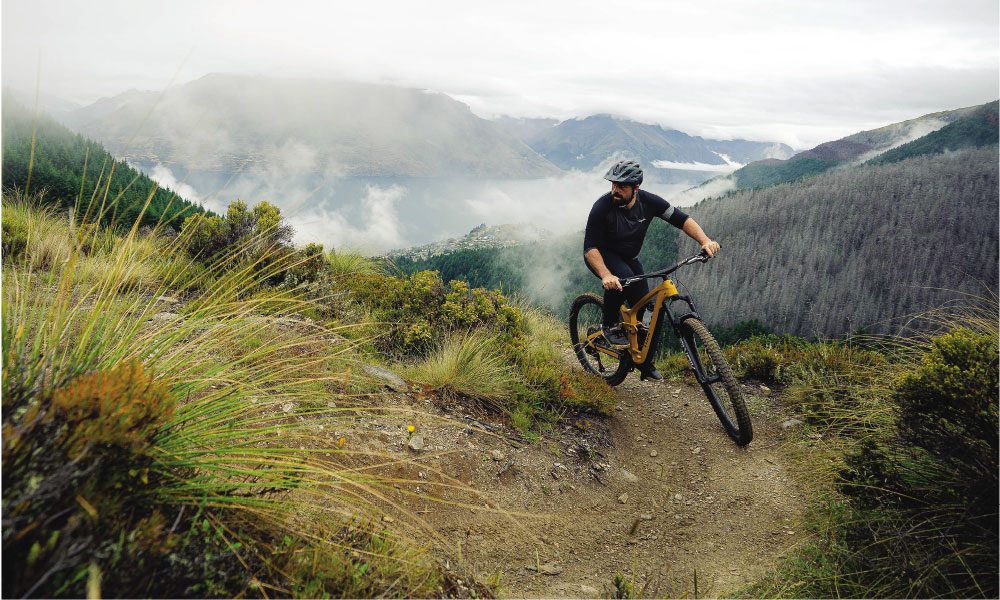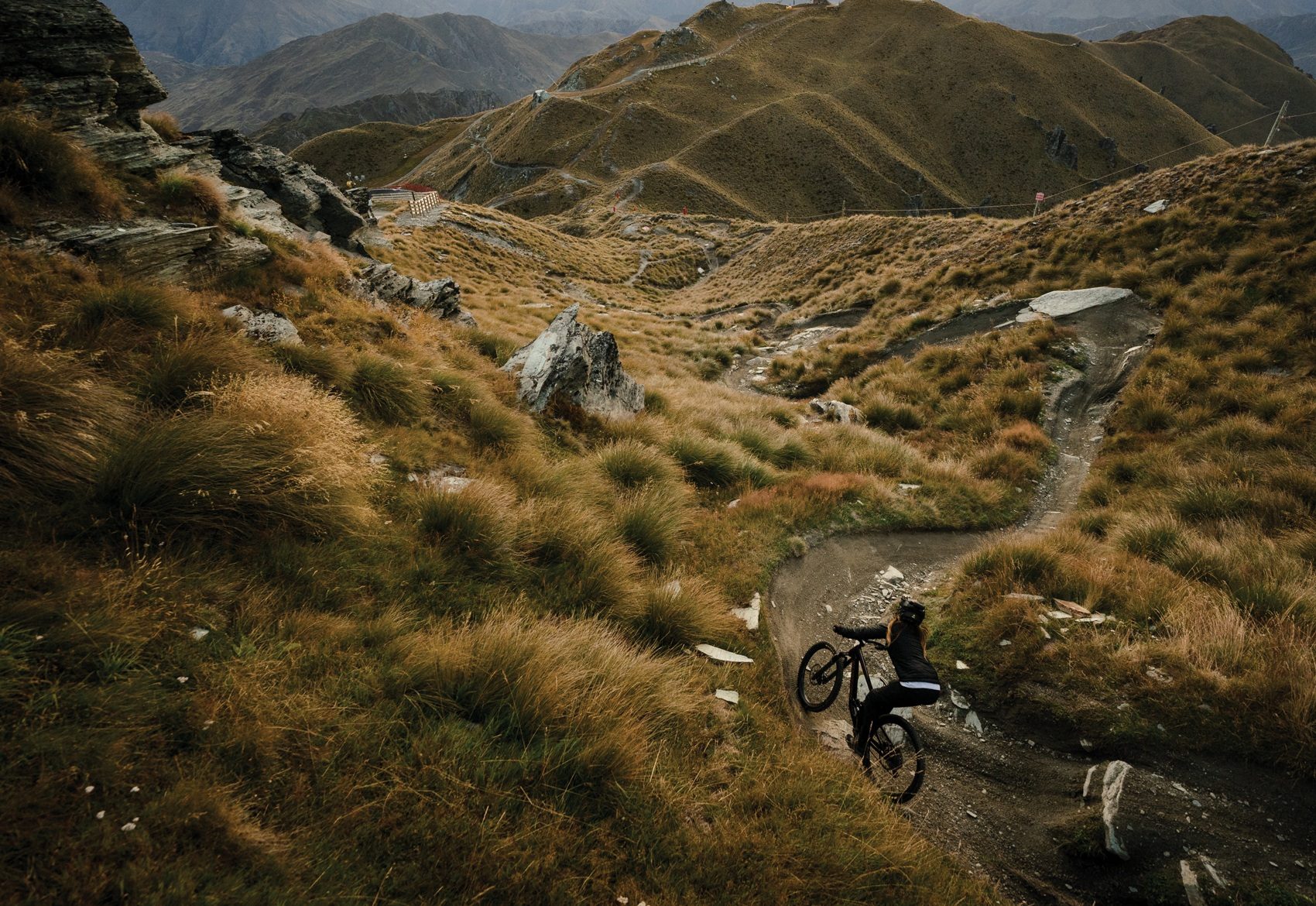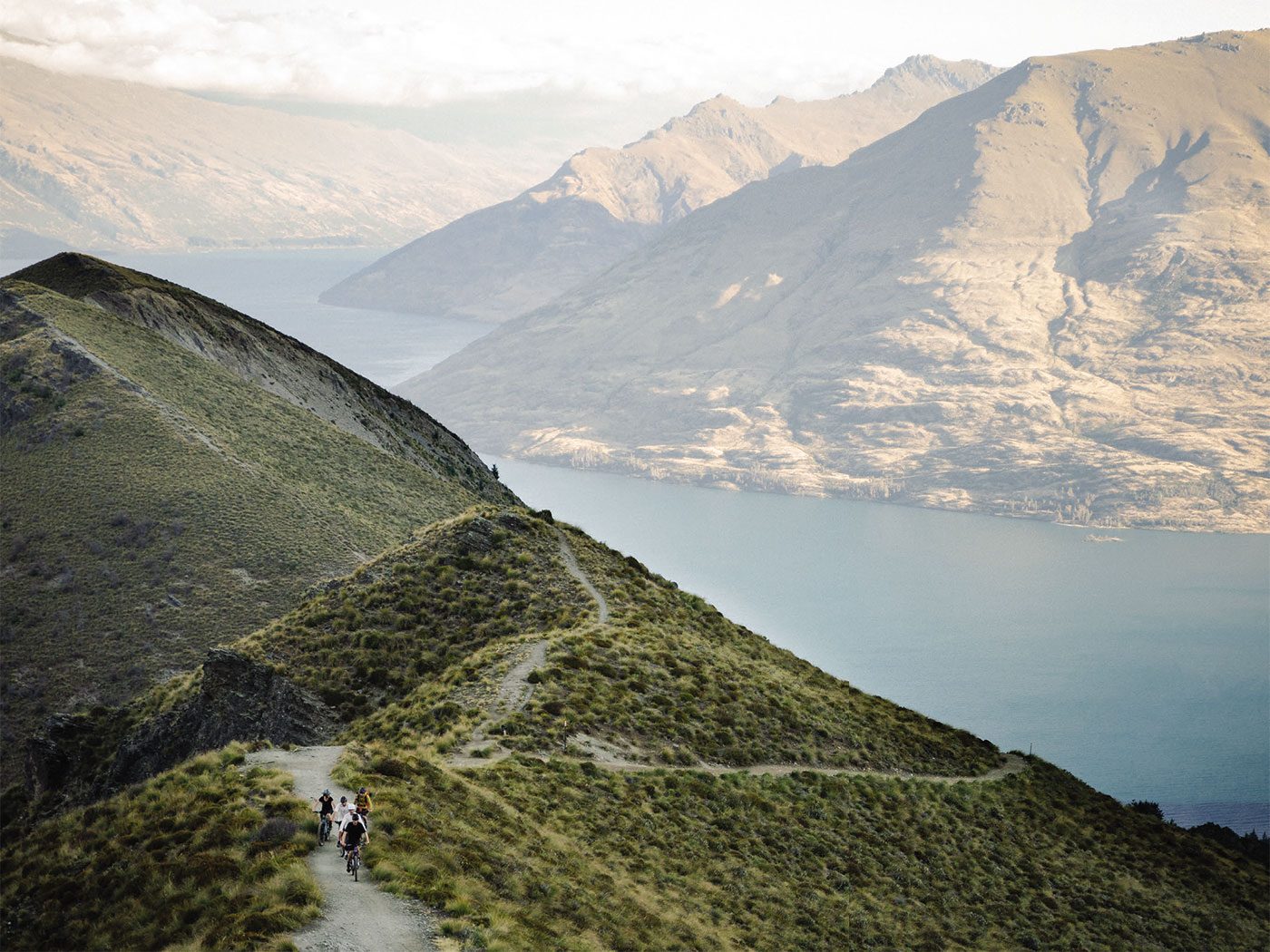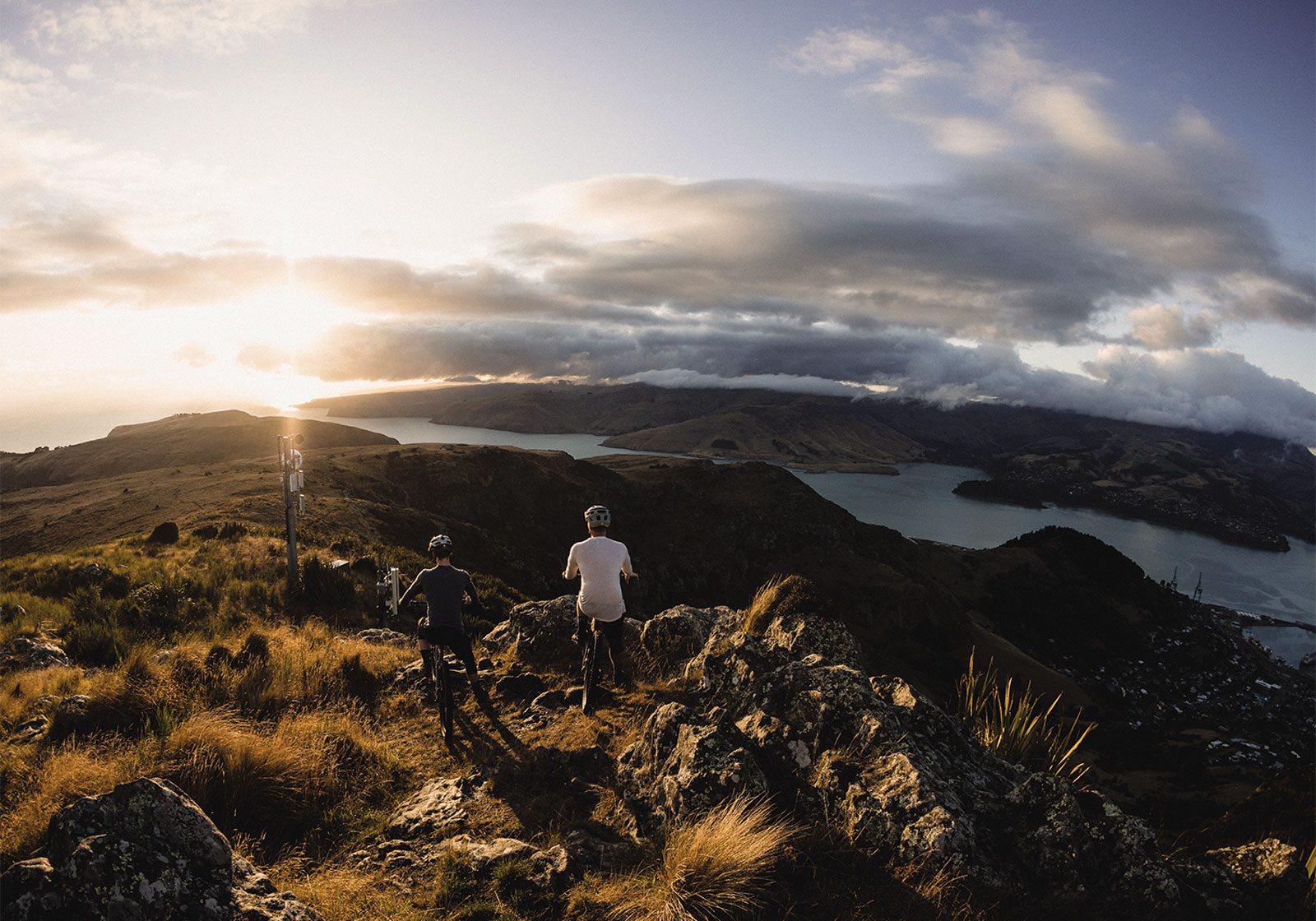Musings Issue 110
Words and illustration by Gaz Sullivan
“What I saw when we went for a day in Taupo was mind-boggling…”
We live in Rotorua. We came here for the forest, the trails, the lakes, and the space. It’s great to be able to go to the trails whenever the mood strikes me, which is most of the time. Many visits to the same place do not take the shine off – for me, anyway.
Even so, sometimes it’s good to go somewhere else and, for us, that is often Taupo.
Just north of town is a small, but beautifully formed, mountain bike park everybody calls Craters.
The trails surround a thermal area that was created as a side effect of the bores that drive the Wairakei thermal power station. It is called Craters of the Moon, and that is a fair sort of description of the place.
We have been riding there since the late 1980s, and the trails have evolved, slowly increasing in length and variety.
Craters has a character of its own. With a few exceptions, the trails are narrow and have a carpet of pine needles that results from fairly light traffic. There is not much elevation available, but the builders have been very creative with their use of what they have.
The thing that sets Craters apart for me, is the connectivity of the place and the way it is integrated with the trails that run along both sides of the Waikato River. A rider can set out from town – and I mean the centre of Taupo city – and ride singletrack to the mountain bike park. Then, they can ride trails for hours without having to ride any forestry road at all. The trails are not very technical, but they are fun – and there are places hidden away in Craters that are downright amazing.
A trail drops into a tight little canyon with a waterfall tumbling out from under a tangle of huge boulders, and I take the same photo of my bike parked next to it every time I visit. Can’t help myself. Another follows a different canyon past cliffs on one side and a precipitous drop to a thermally heated stream on the other. Climbing singletrack rewards riders with big views of mountains and lake. It’s easy to clock up 50 kilometres of continuous trail in an outing, maybe many more. I always run out of gas before I run out of options.
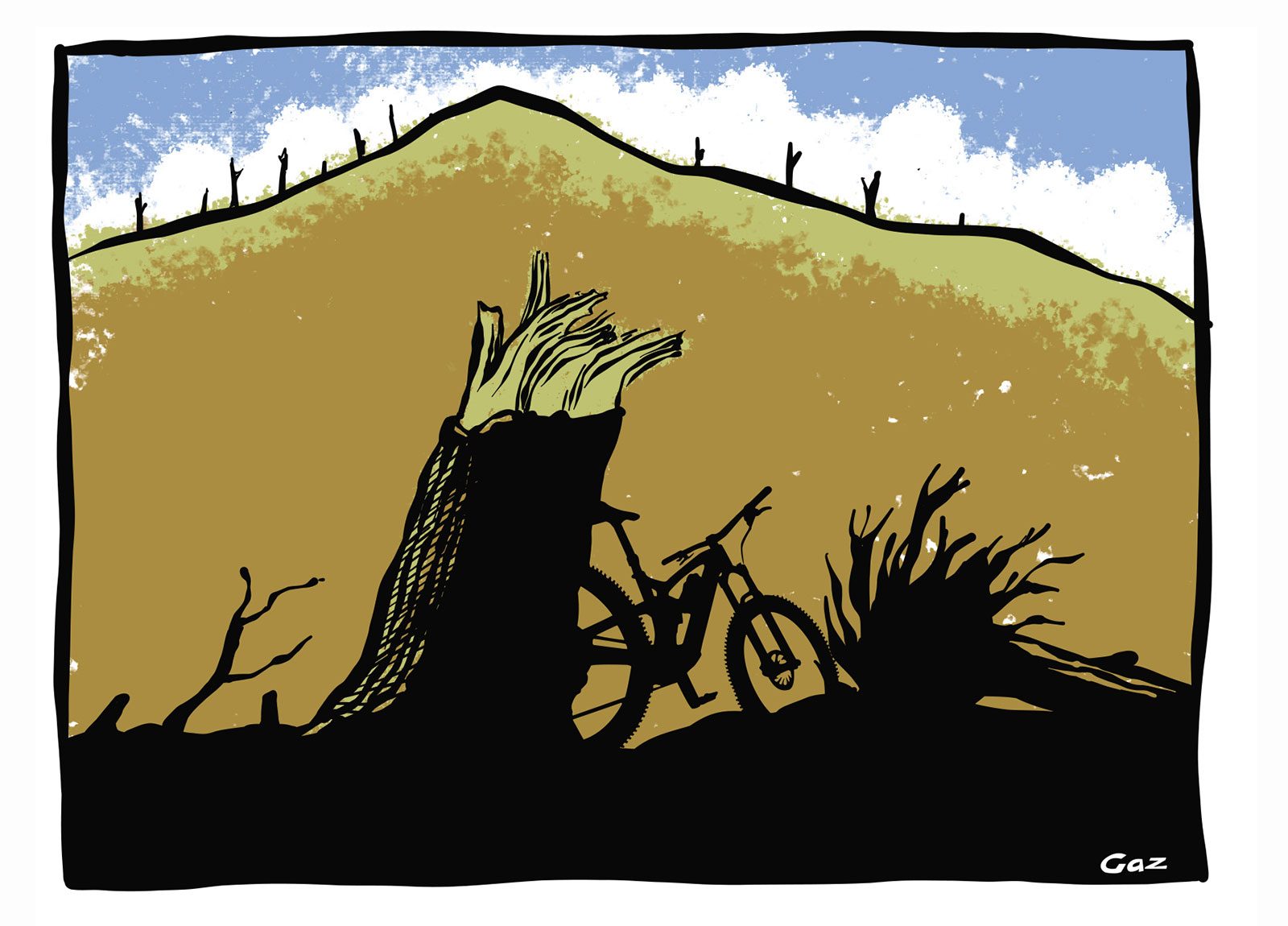
The Hub is a well-designed carpark with a cafe directly opposite. It sits one flat white and a muffin from town, and has a nifty underpass taking riders under the main road into Taupo – and the trails beyond.
Well, it did until Cyclone Gabrielle visited. The underpass is there, but Craters is closed. The carnage and heartbreak caused by that storm is well documented, and it may sound petty to be talking about the damage to a mountain bike park when so many people have lost everything, but what I saw when we went for a day in Taupo was mind- boggling. For those of us who dodged any of the serious effects of Gabrielle, it is a sobering snapshot of what happened.
The park was closed when we visited, and it will be for a long time. Could be six months, maybe more. The friendly woman in the Hub Cafe reckoned there were 15,000 trees down. The hill that is visible from the Hub looked like an active logging site, nearly every tree on the exposed slope facing the highway was laying on the ground. Areas further south had trees uprooted, trees snapped off halfway up, or split down the middle. It is an unbelievable mess, and under it all is a lovingly nurtured network of trails.
The ride down the river, past Huka Falls to Aratiatia and back along the other side, has reopened and so that is where I went. It’s bizarre how some trees stand, completely undamaged, right next to a tangle of trunks and branches that are torn and smashed.
Like most places we ride, the trails at Craters didn’t make themselves. They were built by the usual combination of passionate volunteers, people drafted in to help passionate volunteers, and – on a few sections – commercial trail builders. It took decades of applied enthusiasm because, while new stuff was being created, the existing stuff had to be maintained. Again, like most places we go to ride.
Some of the places we go, that are shared with commercial foresters, get periodically wrecked by harvesting – but that is the deal. We know that going in. We try to get started in young trees, to get maximum bang out of our thinly stretched buck.
When a weather system lays waste to a whole trail system in one go, those plans become meaningless. The work in front of the Taupo team is huge – a restoration job that won’t really start until the forestry crews have done what they can to make the place safe to enter.
One thing you can be sure of: it will re-open. The same enthusiasm that built Craters, will rebuild it.
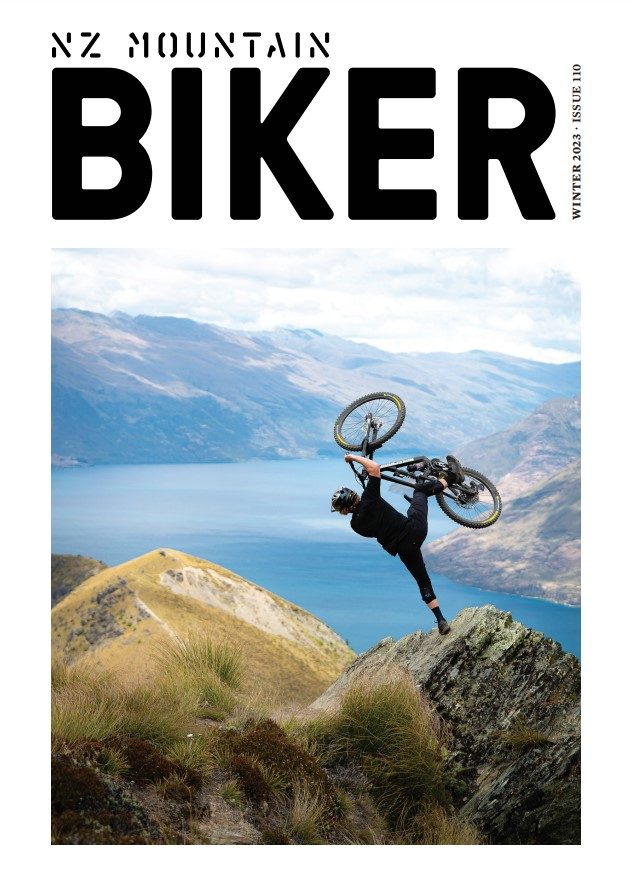
Bosch eBike systems take digital theft protection to a new level
Words: Alex Stevens
Ebike sales have been on the rise for the last few years and, unfortunately, so have eBike thefts. Chances are you saw the recent story about one particular enthusiast who was so keen to get his hands on his dream bike that he broke into his local store and pedalled away on a $17,000 rig.
Once upon a time, a lock and chain used to be enough to deter potential thieves. Now it seems our prized possessions are not safe even when locked away inside a shop with a burglar alarm system. The bike thief did forget one important thing: the charger. The store owner is hopeful this might be his downfall and buying a new one might be how he gets caught. Fingers crossed.

There is actually one system which could have helped save the day here, or at least led to a speedy retrieval of the stolen bike. Bosch’s new eBike Alarm function provides more safety and better protection. The alarm is able to tell users the location of their eBike and sounds an alarm in the event of suspicious movements.
We tested it and can confirm that ‘suspicious movements’ include moving the bike just a couple of centimetres when you’re in the middle of servicing it and forget that the alarm is enabled. We were treated to an ear-piercing screech that would surely be enough to deter even the most determined thief. If, however, the eBike is stolen, you would receive a push notification on your smartphone along with location tracking via the eBike Flow app.
After a one-time installation via the eBike Flow app, your smartphone serves as a digital key. If you switch off your eBike, eBike Alarm activates automatically. There’s a two-stage system to the alarm and the smart motion detector can tell whether your eBike has been moved a little or a lot. In the case of slight movements, the eBike system emits several short warning tones as a deterrent.
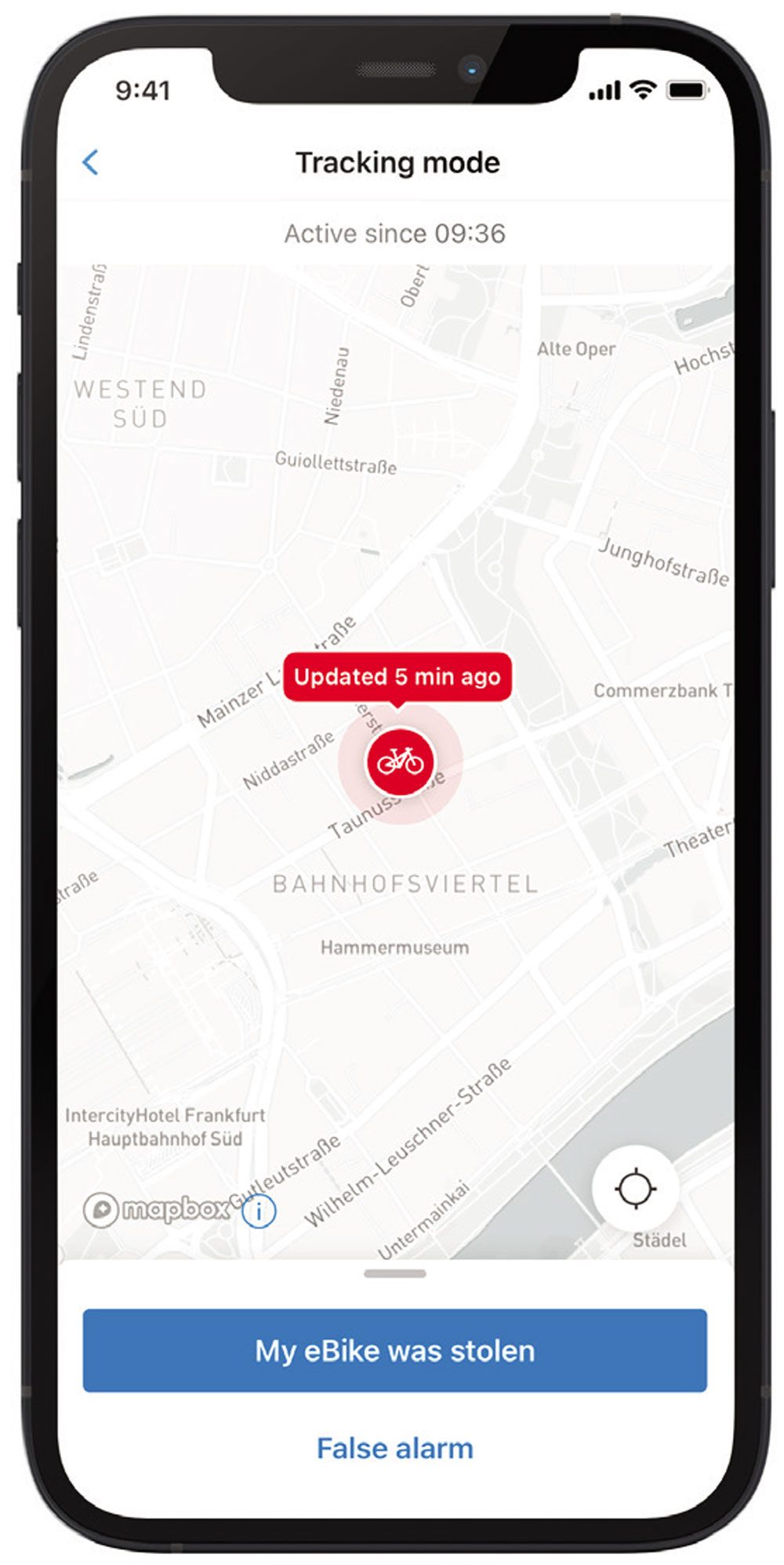
If the eBike is moved a lot and the matching digital key, i.e. your smartphone, is not nearby, it sends out a loud alarm tone as well as a notification to the smartphone. To use eBike Alarm, the eBike Lock feature must be activated in the eBike Flow app and the new ConnectModule installed on the eBike by a specialist dealer. It can be installed on any Bosch Smart System-equipped bike. The paid component is installed on the eBike and contains a radio and GNSS module, a separate battery and various sensors. You can only use eBike Alarm after installing this component.
Users who decide to purchase a ConnectModule, receive eBike Alarm for twelve months at no additional cost. After that, they can decide whether they want to continue using the digital service at a fee – eBike Alarm is not charged for automatically.
After the free trial year, the feature costs 4.99 euros per month or 39.99 euros per year. The subscription is charged in euros since Bosch is based in Germany, but the service is available further afield, including Aotearoa.
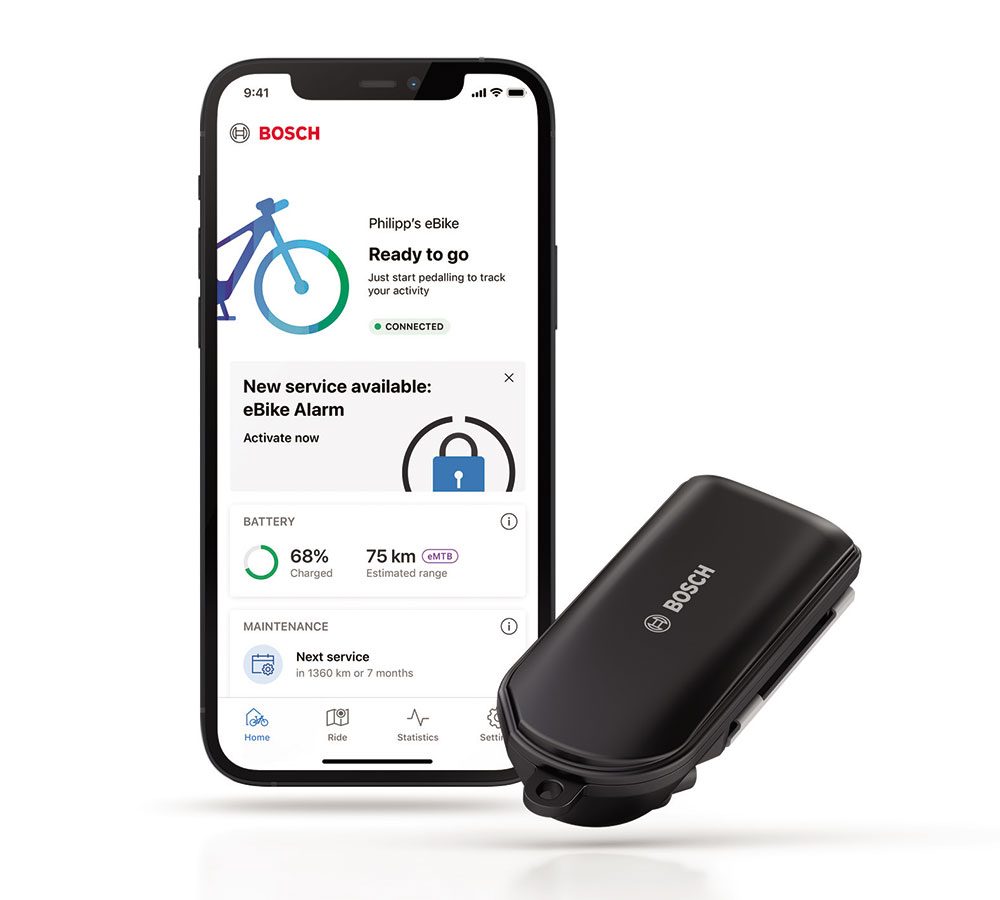

Bike Review: Trek Rail 9.8
WORDS: GAZ SULLIVAN
DISTRIBUTOR: TREK NZ
RRP: $12,999
I am not privy to the think tank at the centre of Trek Bikes, so what follows is pure guesswork, but here goes: Nearly two decades ago, Trek broke ranks and named their flagship trail bike after the top category of that very American petrol-head sport of drag racing. From its very beginnings, in the 1940s, the simple competition between two vehicles over a standing start quarter mile has been a technical arms race. And, the first thing those early hot rodders did to get an advantage over the guy in the other lane, was to figure out how to use something more volatile than pump petrol into the engine.
The stuff they focused on is nitromethane. Various amounts of it definitely makes more horsepower. Mixed with a number of other ingredients to make engines start reliably and not tear themselves apart immediately, nitro was called ‘the poor man’s supercharger’. Then they added superchargers, and squeezed phenomenal power out of a V8 motor.
To differentiate the entrants running on regular petrol from the engines running on anything else, a category was added to racing classes called ‘Fuel’.
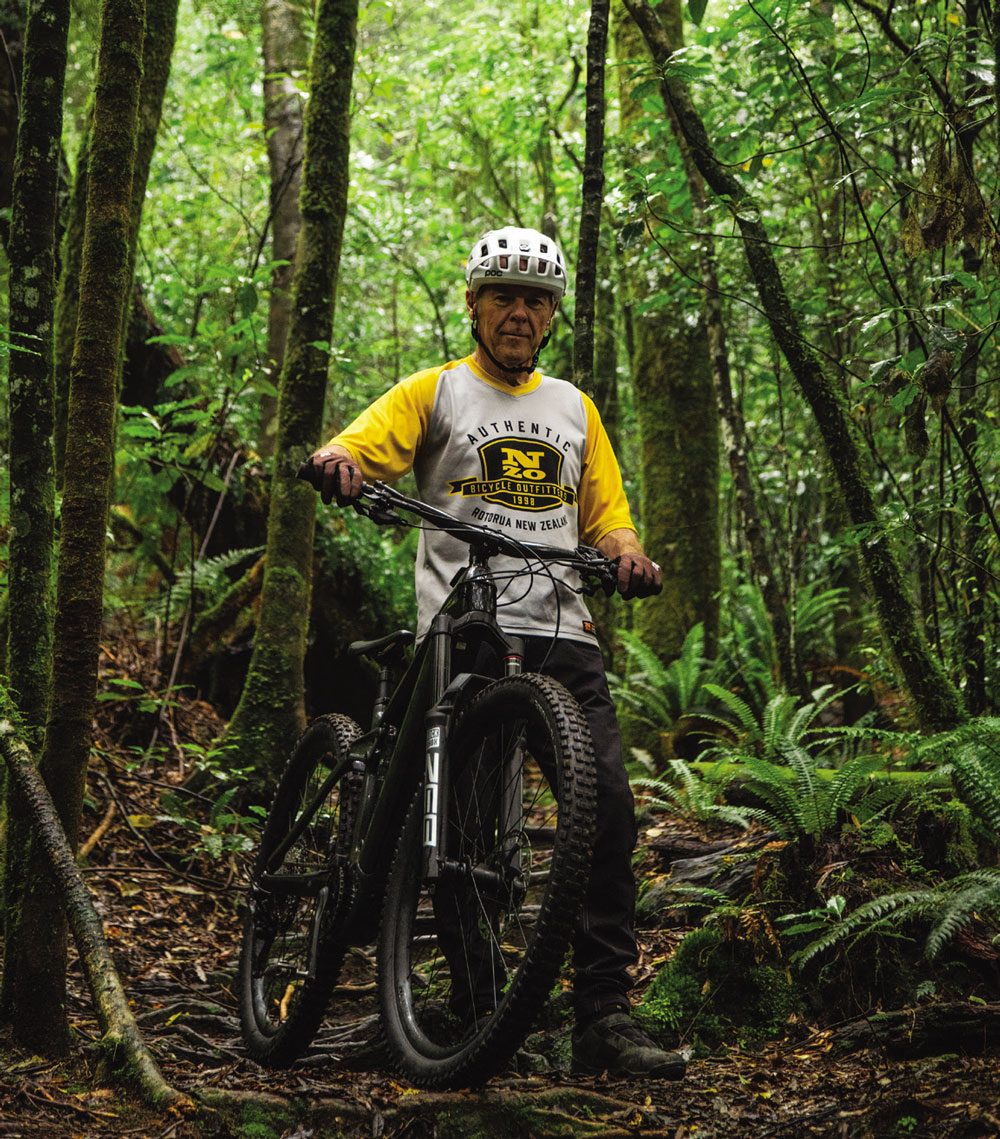
If there was any doubt that Trek was referring to nitro when they named the Fuel line, they dispelled that by adding a model called Top Fuel a few years later: that is the name of the blue ribbon event of drag racing, the fastest, most explosive, and most specialised class of the sport.
The first dragsters were simple contraptions, usually a 1930s Ford with the body removed and the engine set back toward the rear of the vehicle, and some sort of crude accommodation for the driver, aft of the engine. Because the main members of the chassis were frame rails, the cars become known as ‘rails’. As things got more sophisticated, and custom-made machines were fabricated from lightweight tubing, the name stuck. The fastest things on a drag strip were rails.
When Trek launched its flagship eBike, they slapped the name ‘Rail’ on the top tube, further cementing my belief that any other possible meaning associated with the name could be ignored: it was another tip of the hat to the dragsters.
The latest incarnation of the Trek Rail is the third iteration of a simple design, based on the time-proven system shared by the Fuel and the Slash. Like its four-wheeled namesake, the design is fairly brutal and unapologetic. No attempt is made to hide the Bosch power plant, and the Rail 9.8’s massive 750 watt battery is an obvious part of the bike’s architecture, not really hidden in the gargantuan down tube. It’s an obvious eBike, and wears its heart on its sleeve.
To further connect the bike to its hot rod DNA, is a sparkly metallic ‘prismatic’ paint job and big decals that look like chrome.
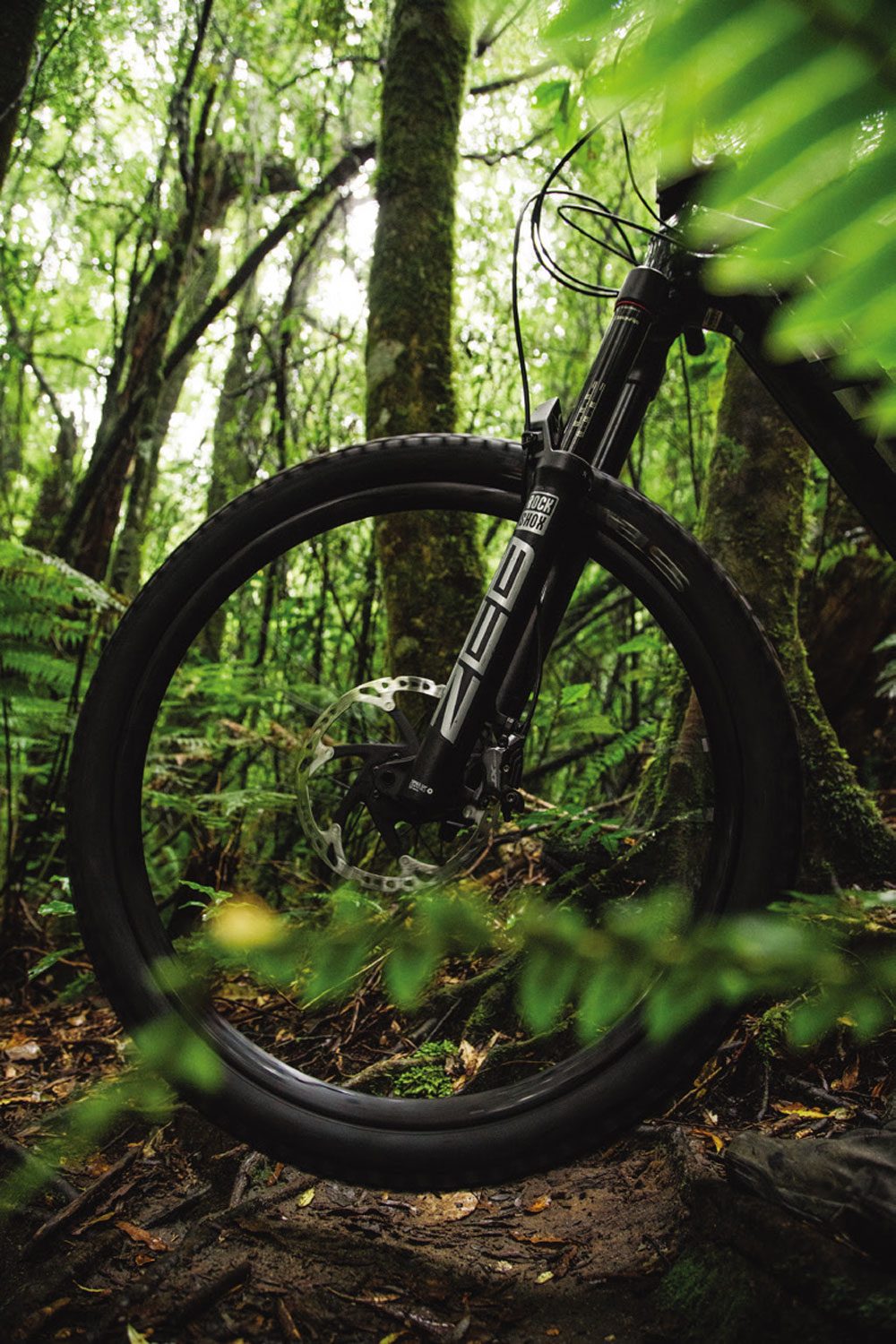
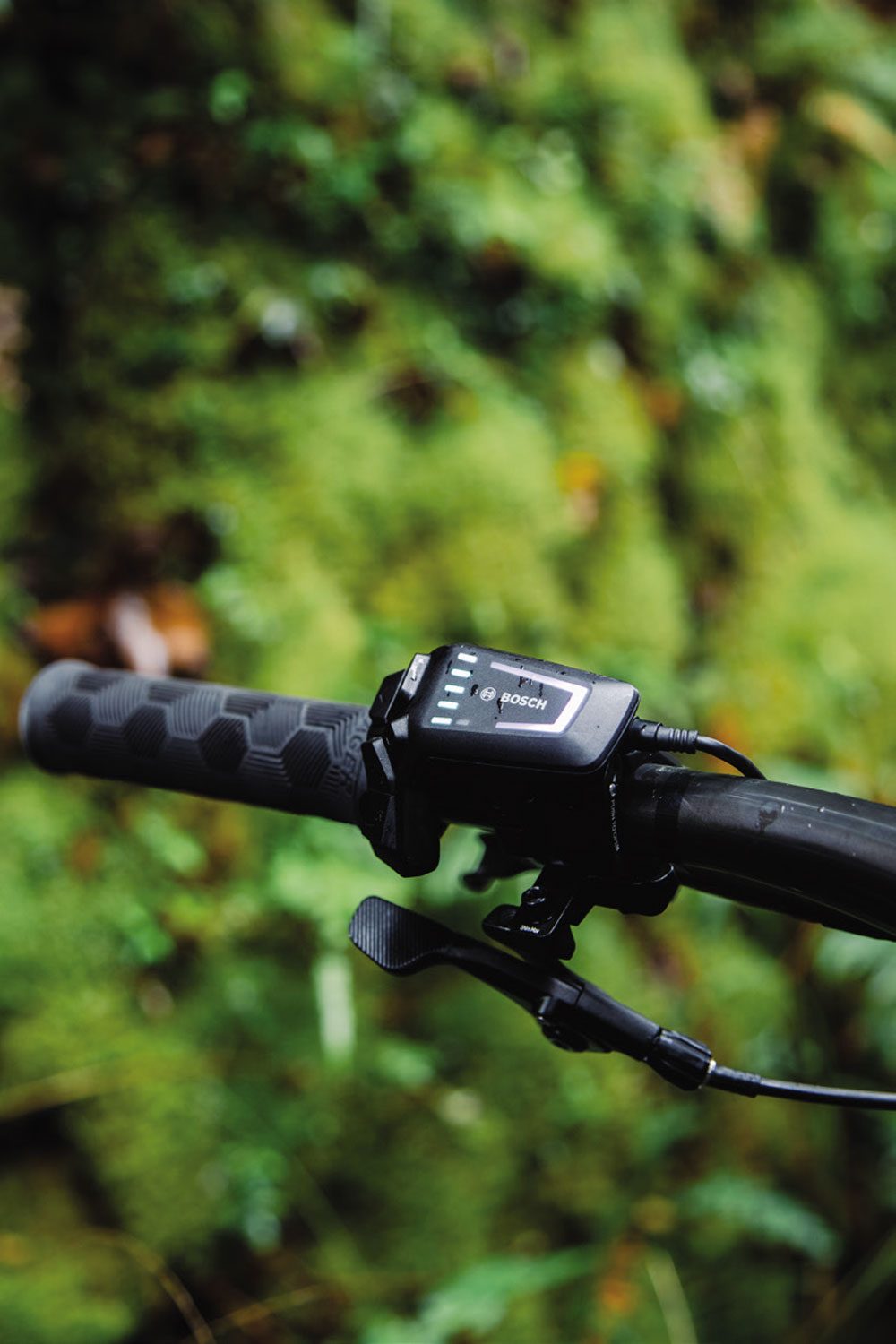
Out of the box, the 9.8 has an epic set-up. A full carbon frame offers 150mm travel and is teamed up with a RockShox Zeb fork, providing 160mm travel up front. It comes with a tough Bontrager 29 inch wheelset that stayed true and gave no trouble over a three month review period where I clocked up over 1100kms on the bike. It is possible to mulletise the bike with the assistance of a Trek dealer to make the necessary adjustments to the Bosch system for correct speed readings and power output. Mostly Bontrager components wear a full set of Shimano XT shifters, drivetrain and brakes.
Geometry is aimed at going fast on trails: a head angle of 64.2 degrees in the low setting of the adjustable rear suspension flip chip Trek calls a ‘Mino-Link’, and a longish frame reach of 45.2 cm.
The Bosch Performance CX Line motor has a reputation for reliability and, on the trail, it was surprisingly quiet compared to other eBikes I have shared rides with. The Bosch motor does emit a fair amount of clatter on downhills, however.
The details are nicely handled, a removable battery has a pop-out handle for carrying it indoors for charging, or to keep it safe while your sled is hanging on the back of the truck. You can access the internal cable routing while the battery is out. The bike has a neat little flap over a charging port on the seat tube, so you can charge it while the battery is installed.
Charging takes quite a few hours from low to full charge, but is worth the wait once you get on the trail. The battery is a seriously well-endowed source of grunt.
Last year, I was lucky enough to write up a NZ Mountain Biker review of the Trek Fuel EX e, and I was amazed by how much I liked the e-assist. I reckoned the Fuel EX e was the ideal bike for a mountain biker, with a bit of fitness and experience, looking to go a bit further or squeeze more trail out of a busy schedule. Now I can directly compare the EX e to the Rail, and I think that still holds true.
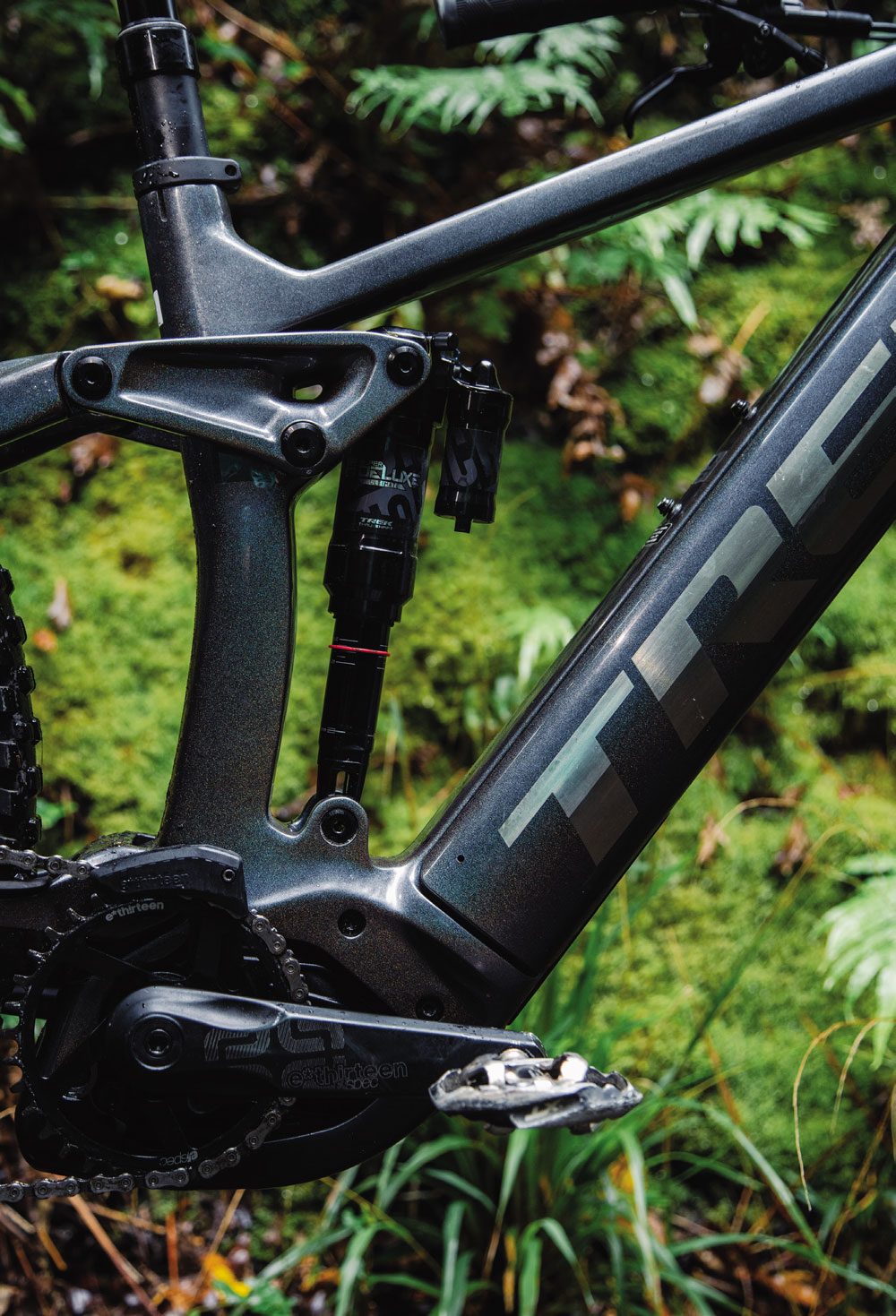
The Rail can take anybody to the top of just about any climb with comparative ease. But, put it in the hands of a rider with a bit of fitness and experience, and riding it becomes a different sport.
The brute power of the bike is amazing. I found myself looking for very steep things to ride up. At 85nm of torque it isn’t the most powerful bike available, but I am not sure more power would be much use – it’s fun figuring out how to dole out the horses without overcooking the available traction.
The range of the bike is equally impressive. My last outing before the sad day I had to hand it back was a case in point.
I rode 62.6kms, climbed almost 2000m, and averaged over 20km/hr. Most of that was on-trail. There is no way I would have chosen the route I took on my pedal bike, and if I did I would have been out for a very long time.
The Bosch Smart System – which the 9.8 shares with the XTR 9.9 Model – is a slick and feature-packed interface with the bike’s power system. A clear readout panel sits on the top tube. A neat little cluster of buttons sits out by the left grip, with on/off on top of the cluster, two buttons for moving through the display options, an ‘ok’ button – which also acts as a scrolling button for the display screen – and two buttons for choosing the power mode. In addition, the control cluster has a colour-coded LED graphic that lets you know what power mode you are in. More on that later!
There is a lot of information available via the display. The first screen shows battery percentage, power mode and current speed. Toggle the selector through the screens and you get similar info in more detail: larger readouts of battery level, distance covered this ride, distance remaining at current power mode, current and average speed, current and average cadence, and much more.
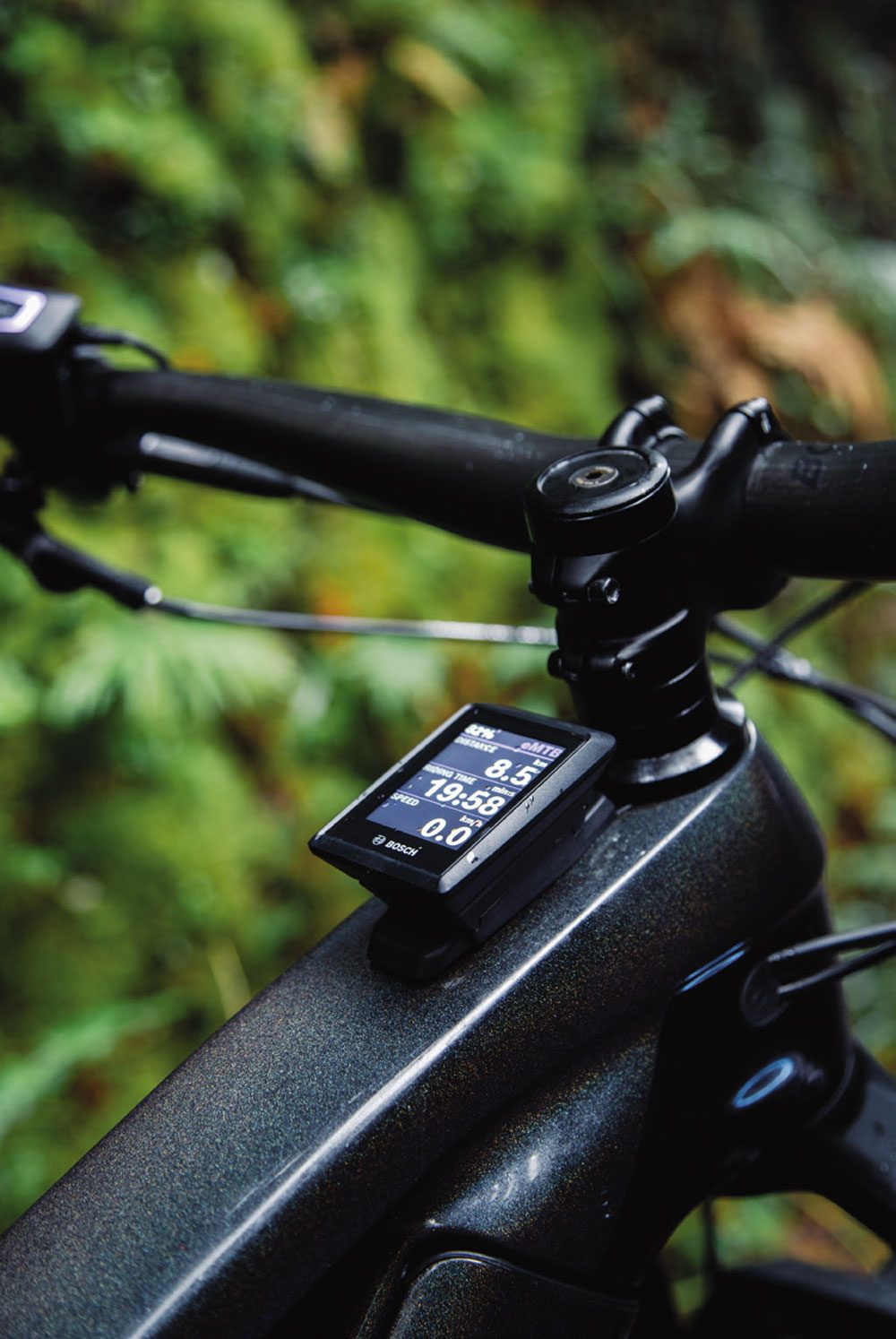
The system integrates with an app available for a more modern phone than the vintage iPhone I was using at the time of the review, so I can’t say how that works. Based on how slick the system is in use, I expect it is good.
The modes of power available on the 9.8 are the same as the rest of the Trek Rail line. You have Eco, Tour, Emtb, and Turbo. In my dozens of rides aboard the Rail, I can’t say I ever used Eco. I am sure it would be useful for something, when that mode is selected the range claim is over 100 kilometres. But, seriously folks, this thing is an eBike, so why not E the snot out of it?
The ride I mentioned earlier, that covered a good chunk of my local patch and included some very hard climbing, was completed in Emtb all the way.
Emtb is the sweet spot. It is intuitive, an attempt by Bosch to determine what the rider is trying to do, dishing out power as optimally as the onboard computing can deliver. Like the other modes, it measures the watts the rider is putting in and multiples them, but it also responds to short and extreme bursts by continuing to supply power if the rider backs off briefly, making short work of tricky root sections on steep climbs. Once a rider becomes accustomed to this delivery of extra power it is really useful for conquering technical climbs.
I tried Tour mode from time to time on rides, and noted that the assist is similar to Emtb but gentler, and the range is increased. Turbo is full power, but Emtb has the same power when you need it and just feels better and more natural.
The extra weight of the bike is only really apparent when lifting it into the van, or if it ends up on top of you – which, I confess, happened to us a few times. On the trail, the e-assist easily overcomes the 23.4kilograms of heft, and I think the extra weight down low makes going downhill on the bike a lot of fun.
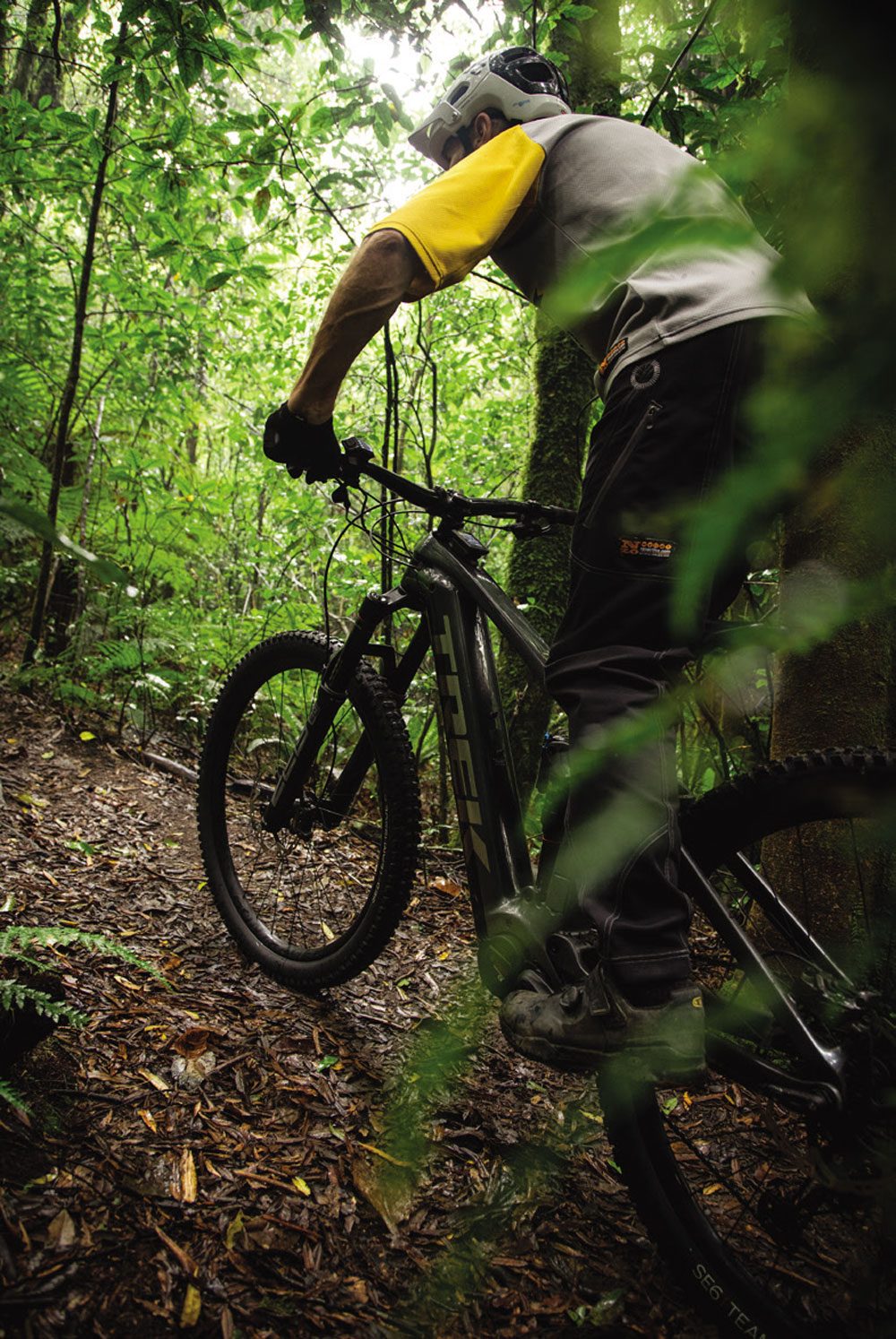
The suspension design of the bike teams up with the RockShox dampers to deliver a well-balanced ride. The Zeb fork is a good partner for a big bike like the Rail, with stiff 38mm legs keeping the front wheel going where you point it. The custom-tuned Super Deluxe shock out back has a thrust-shaft design that provides a very supple feel.
The generally-downhill-oriented geometry of the bike makes hauling ass a lot of fun on any trail, and I was surprised how often I came up against the only minor riding niggle I experienced with the Rail. It is speed-limited at 32kph for the New Zealand market. At that speed, the power simply stops being delivered. On the EX e that speed-limiting factor was easy to ignore because the power system is disengaged from the pedal power of the bike. The Rail has a different approach, so when the motor stops assisting, you are driving the motor with the pedals. It goes from punching you forward to feeling like a real drag on the pedals, instantly.
The Rail is a bike that I liked immediately, and grew to like even more as the test period extended. Because the bike was in the shed, and I knew at some point it wouldn’t be, I rode it almost exclusively. Switching back to the pedal bike was tough, because the power of the Rail is so front-and-centre of the ride experience. Getting used to the speed of the bike on all sorts of terrain made getting aboard a plain old mountain bike feel very slow and drab.
A couple of rides on the regular bike removed that feeling, and all was well with the world – but the rides that are on tap with the Rail make a strong case for having one in the rack.

Product Review: Wheelworks TrailLite Carbon & TrailLite Alloy
WORDS: LANCE PILBROW
DISTRIBUTOR: WHEELWORKS
RRP: $3350 WHEELSET
Wheelworks has been at their game for 20 years, and their trademark ‘Wheelworks’ rim decals have become something of an icon in the New Zealand cycling scene.
“They cost how much?!” My mother-in-law gasped as I revealed the price of the latest Wheelworks carbon wheels I had hanging from the wall in my garage workshop. My mother-in-law is a casual cyclist, eBikes opening said door, but the idea of anyone spending $3350 on a pair of wheels seemed, at the very least, bizarre in her mind.
“What exactly do they do?” she asked.
“Well, I guess they roll like any wheel”, I replied. “But they’re also very light; they’re made of carbon fibre, and they’re built right here in New Zealand. They’ve got an amazing warranty, unlike anything else really,” I replied.
Yes, these were probably the most expensive hula hoops either of us had laid eyes on, let alone touched. “And people buy these?” she asked again. “Yes,” I said, enthusiastically. I felt like arguing the merits and value of these shiny new wheels – that I had been drooling over ever since they arrived –was not something even my persuasive self could achieve, so I quickly steered the conversation back towards the firm favourites of most parents-in-law: politics, Jacinda, COVID, the usual.
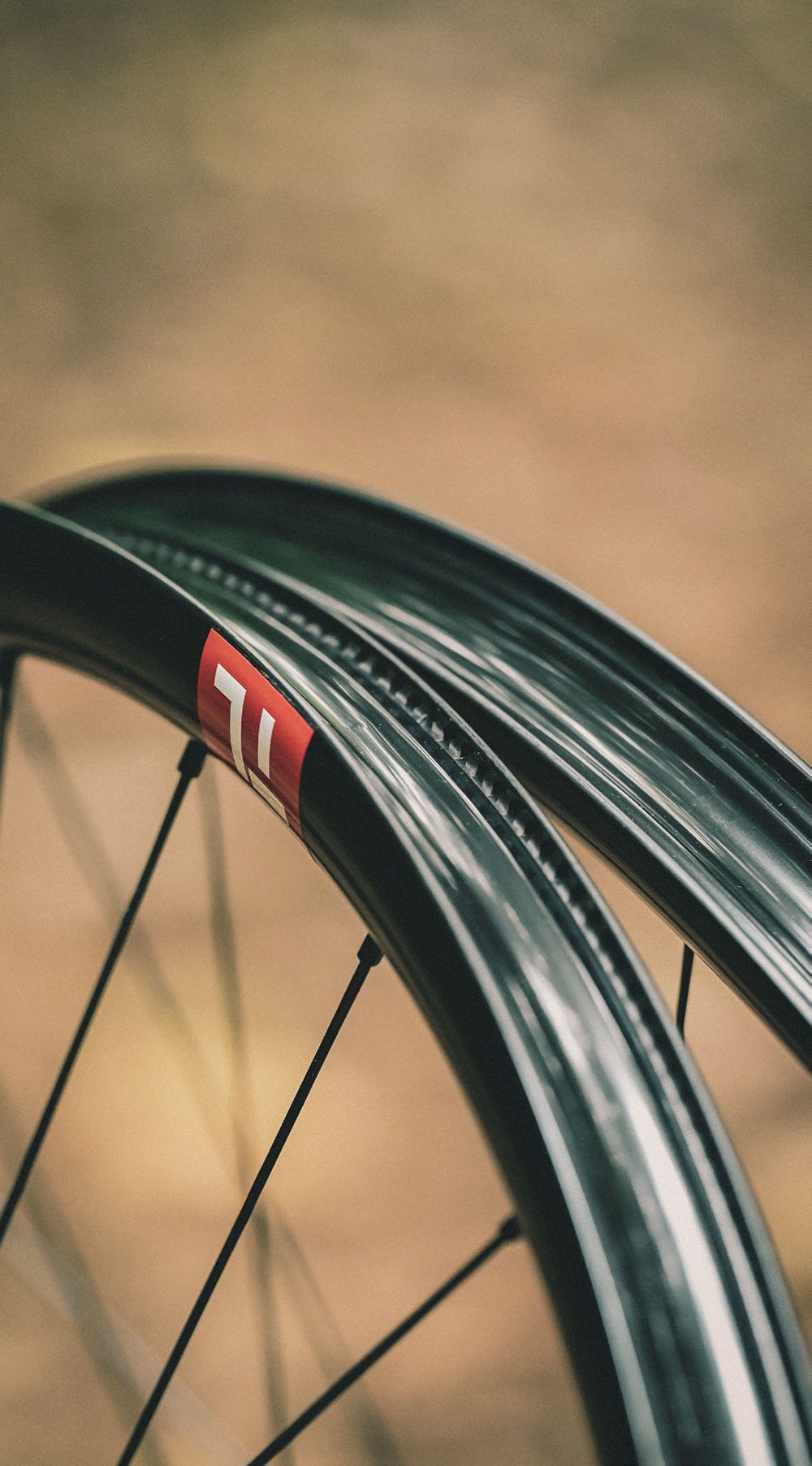
What is value in our sport? It is something I have been mulling over, particularly as I’ve had these Wheelworks wheels on review for the past few months; undoubtedly the most expensive single ‘component’ I’ve reviewed in my fifteen or so years working as a writer in the mountain bike industry. Pulling up at the trailhead, I felt a little like how the owner of a Ferrari or a Lamborghini might feel as they pull up in the parking lot, with people actually saying out loud to me, “nice wheels!” Yes, yes they are very, very nice wheels.
Before we get too deep into philosophical discussions about value, let’s talk a little about wheels and why Wheelworks, a small New Zealand company based out of Willis St, Wellington, sent me their latest creations. Wheelworks has been at their game for 20 years, and their trademark ‘Wheelworks’ rim decals have become something of an icon in the New Zealand cycling scene. With a small team, they have been able to focus on doing what they do – building the best quality wheels they can, slowly iterating and improving their products – to carve out a niche in the marketplace. Over the years, their own in-house products have been designed with the typical Wheelworks attention to detail, and they’ve become renowned for their exceptional quality and strength. They’re the kind of company that, when you ask around about them, you don’t hear anything but good reviews.
A recent overhaul of their products led to something of a streamlining of options, and I was lucky enough to be asked to review and compare their new TrailLite Carbon and TrailLite Alloy wheels.
So, a quick overview. The TrailLite Carbon wheelset comes in at 30mm internal / 36mm external width and it runs 28mm high. The carbon rims were matched to Wheelwork’s own Dial hubs and laced with DT Swiss Aerolite spokes. For comparisons sake, I was also sent a set of new TrailLite Alloy wheels as well, the same build but with an alloy rim instead of carbon.
Both sets came with red decals on the hubs, a small red ‘TL’ (TrailLite) icon, and a larger silver Wheelworks logo that follows the arc of the rim. These are all customisable to match whatever colourway your bike is – because you know we like to be all matchy matchy. They came pre-taped and with valves installed.
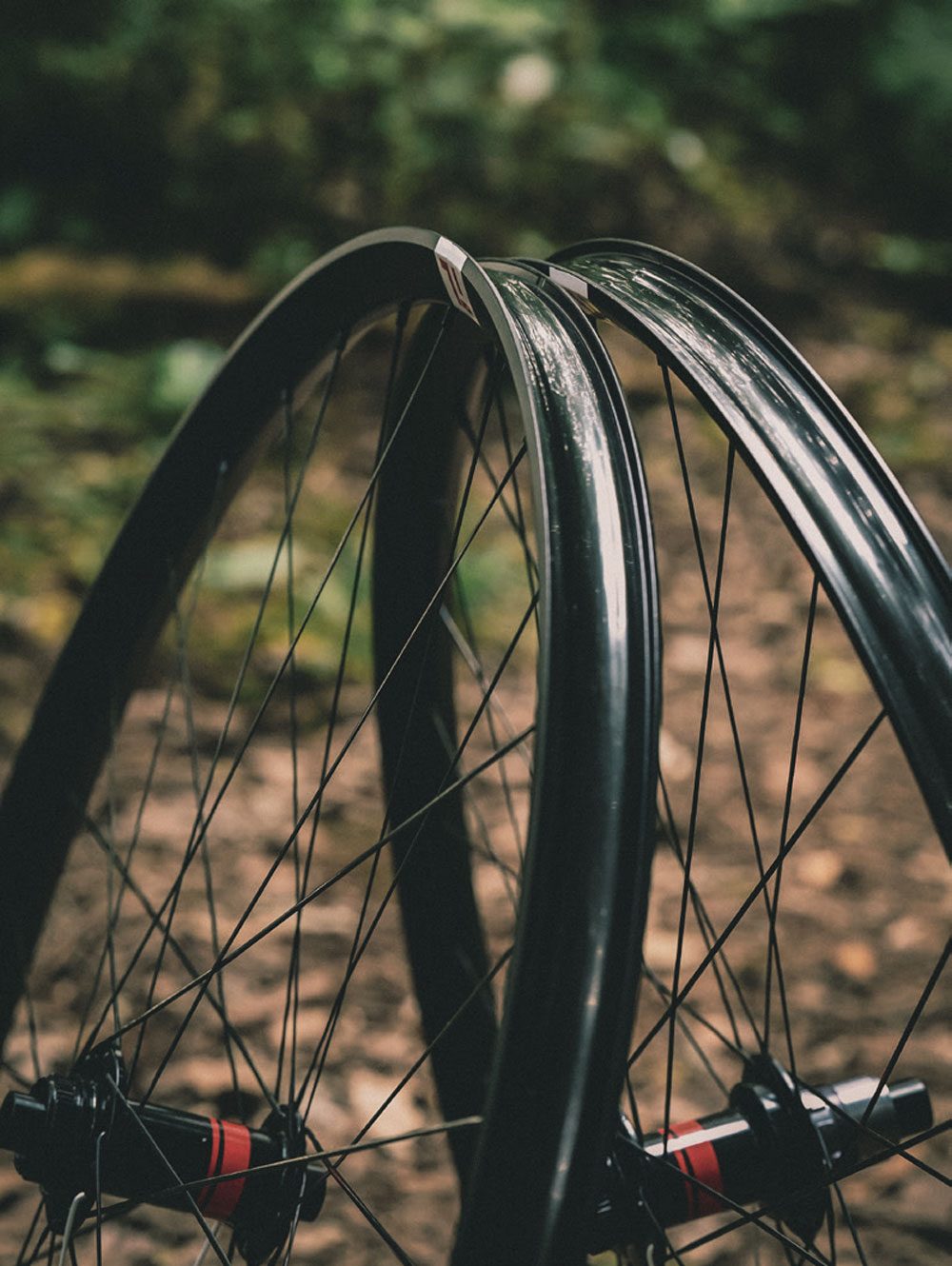
Before they’d even arrived I was able to experience first-hand the way Wheelworks operate. A phone call with Wheelworks ensured I was able to discuss all aspects of my riding to make sure they had as much information as possible to get me on the right set of wheels: my riding style (do I take the ‘b’ lines or absolutely huck everything in sight?); my bike and travel (is this going on an XC racing whip or an enduro sled?); riding intentions (do I want these to survive multiple seasons of enduros, or am I prepping for the Whaka 100?); oh, and without getting too personal… how much do I weigh? All this information helps Wheelworks get their customers on the right wheel, with the right build, at the right price. But the question still has to be asked – these are a $3350 wheelset, so why do people buy Wheelworks wheels over any of the other boutique brands that are available? I was able to put these questions to Andrew Ivory, one of the Wheelworks team, over a Zoom, and it really helped me understand the unique space that Wheelworks occupy in an increasingly crowded market.
First of all, it’s always going to be positive that they’re local. Most of us would prefer to buy New Zealand made products (their rim manufacturing, like most carbon products, is done in China it should be pointed out) if we can find items of similar quality at a comparable price. Supporting New Zealand companies always feels good. But it’s more than just ‘feeling good’, for Wheelworks this means that they can offer after sales services that are in a league of their own. Yes, they offer a lifetime guarantee on their carbon wheels. That’s great, but a few other companies do that too. A Wheelworks warranty, it should be pointed out, isn’t just for a manufacturing fault, it’s for any impact damage. If you ‘case’ a jump and destroy your wheel; if you break the carbon rim of your Wheelworks wheel while riding it; they’ll replace the rim and rebuild the wheel at no charge. That’s saying something. So often companies try to find a way of passing on costs back to the consumer; “yes we’ll replace the rim, but you have to pay to get it built up” for example. This real commitment to stand by their products is something they can offer without fear, because with 20 years’ experience in the business they know, they just see so few wheels they have built ever come back.
But, it goes on; if your wheel ever simply goes out of true – they’ll true it up for you at no charge. If a nipple breaks, if a spoke breaks – they’ll replace them at no charge. So yes, it’s a lot of money for a wheelset but, in a way, it’s the last wheelset you might ever need to buy and you’ve got a lifetime of free servicing to go with it. Oh, and as they obviously carry plenty of stock of all their products, they can usually offer same day repairs, or get it back out on a courier to you in 24 hours. With the current wait times you experience at most bike shop service departments, this is really impressive.
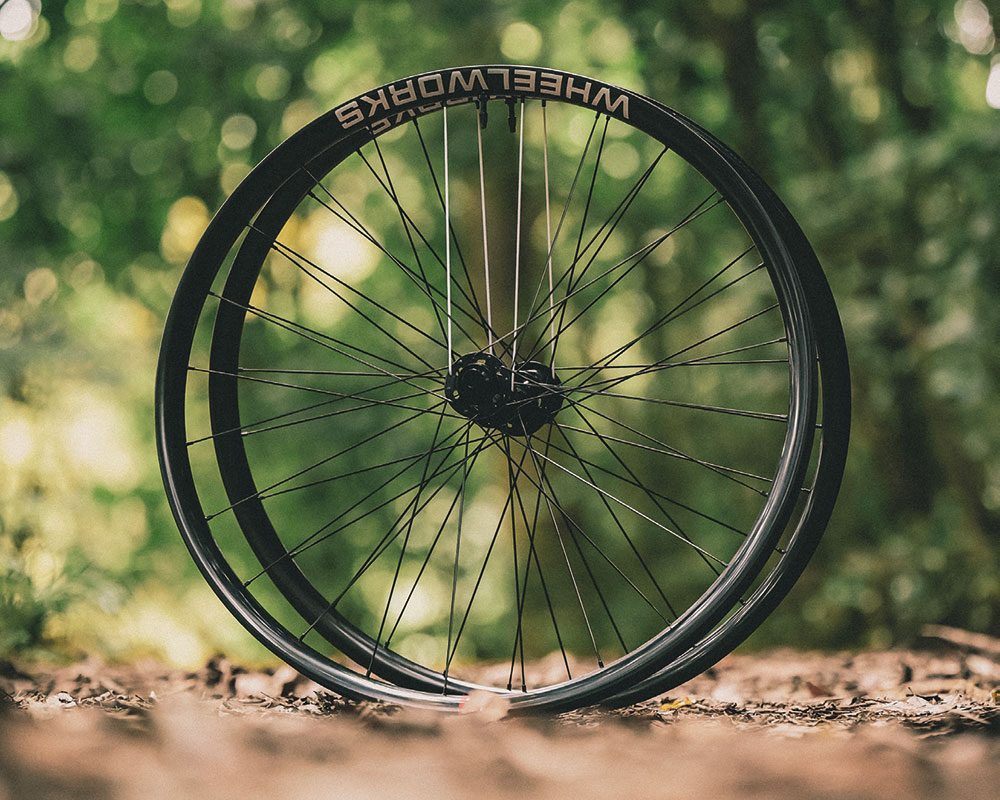
Wheelworks have tried to create something special with these wheels. Not all carbon rims are created equal, Andrew informed me. Over the years, dealing with all the different brands and intrepidly exploring, getting their own carbon rims manufactured to their specifications, they have seen it all. And it isn’t all rosy. At one point in the company’s past, they were returning up to a third of the rims they received back to the manufacturer as they didn’t pass their own quality control standards. That led them to move to other manufacturers and, Andrew told me, now they have a great manufacturer whose quality is outstanding. But what makes their rims unique? Isn’t it just a fancy hoop with a bunch of holes in it? No, not really. For the TrailLite rim it’s the specific way in which the carbon and resin is laid up, and then the precision with which the spoke holes are also drilled that sets Wheelworks apart. The spoke holes are all drilled, if you can imagine, with their final spoke path in mind. Once Andrew explained it to me, it started to make sense; spokes don’t run from the rim perpendicularly to the centre of a circle, they run at a slight angle to where they lace to the hub, which isn’t quite the centre due to the way wheels are laced with a cross-over pattern. What’s more, putting the wheel on its other axis, the spokes run ever so slightly to the left and the right to allow for the width of the hub. Wheelworks carbon rims are drilled taking all of this into account so that the nipples sit neatly against the rim and don’t rub or pull with uneven tension. Also, rims are designed specifically for front or rear use, with the rear rims being designed with more strength and impact resistance in mind. The attention to detail is true of their Dial hubs, with flanges angled to help the spokes align directly to the rim, and perfectly chamfered edges to hold it securely. They are also designed with ease of serviceability in mind.
It’s hard to talk about anything in the bike industry without referencing what it weighs. The Wheelworks Carbon TrailLite wheelset I rode weighs in at 1650g grams, and the alloy set at 1830 grams. The carbon front rim weight is 405 grams and the rear, 490. Dial front hubs are 135 grams, and the rear, 290. If you’ve had any interest in a new set of wheels it’s likely you’ve started to read up on the various options out there and maybe even started a little spreadsheet tabulating the weight of the myriad of options out there. (To compare it with something at a similar price point, a Reserve 30SL wheelset has a claimed weight of 1723 grams, built with i9 Hydra hubs.) 1650 grams for a trail bike wheelset is certainly light, but it’s not veering into the category of ultra-light, which is maybe around the 1300 – 1400 gram mark. This really reflects a big part of Wheelworks’ market, and where the TrailLite product is targeted; riders who tend to be people who do all manner of things – the odd XC race, a bit of bikepacking – and just generally orient their life around getting out on the bike as much as possible. The type of people who want a wheelset that is reliable enough to be used in any and every situation but is still light enough to make a bike feel like it’s come to life.
This was pretty much my experience with the TrailLites. I first put them on my bike a few days before an impromptu entry into the Whaka50 and couldn’t help but appreciate what they did to my ‘down country’ bike. The acceleration that a lighter wheelset offers became noticeably apparent when using them over a longer course like the Whaka, with lots of climbing. It was especially noticeable in sections where the terrain took me through short and sharp ups and downs; I felt like I was much more able to keep a good speed up pinchy little climbs at the end of the race where I was used to slowing down to more of a ‘just survive’ grind through the final climbs. After this, they endured a summer of riding, with plenty of opportunities to enjoy the way a lighter weight wheelset makes a bike accelerate out of corners, carry a little extra speed into corners and pop a bit further off of anything that looks like a jump. I couldn’t help but think that the carbon TrailLites also seemed to hold their line through off-camber terrain with a greater ability than the wheelset they had replaced on my bike.
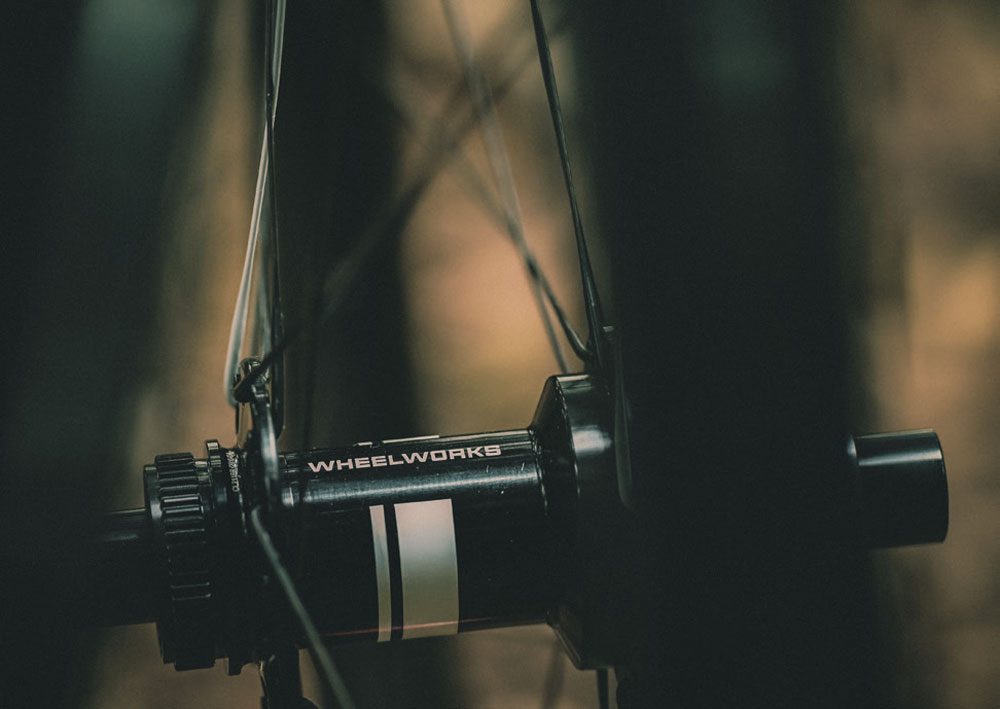
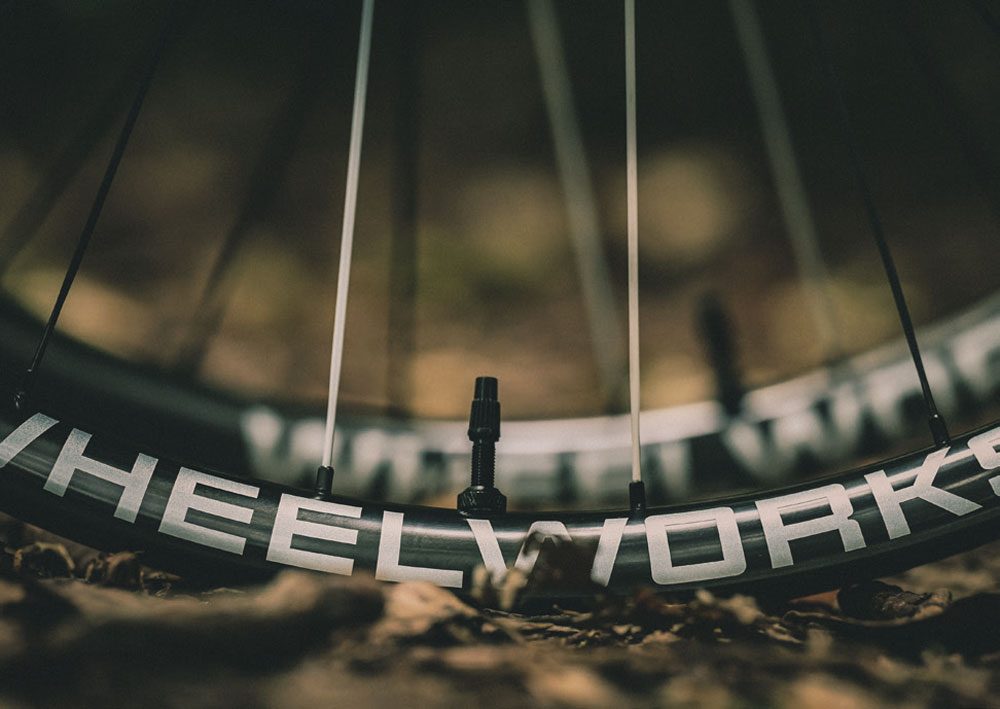
The alloy TrailLites were interchanged with the carbon wheelset with the intention that I would be able to review these in something of a side-by-side way. This was always going to be a difficult task, as it sounds like some sort of science experiment that is being done in a controlled environment. The reality is it’s anything but controlled and there’s no way of keeping tyre pressure, suspension pressure and trail conditions the same, let alone the way any particular ride unfolds. All this is to say that real world side-by-side testing that claims to provide anything scientific is maybe more aspirational than data driven. In terms of on-trail performance, the best I can offer in terms of a comparative statement is that the lower weight of the carbon wheels did indeed seem to translate into on-trail ‘liveliness’, and I appreciate that’s a suitably vague statement! Perhaps what this also reflects, is how impressed I was with the alloy TrailLites too. At around $1850 – depending on your build – the TrailLite alloy version gets a lot of the Wheelworks benefits: working with a great company and getting custom wheels expertly built; an amazing after sales service and warranty. Putting them on my drop-bar bikepacking MTB, I felt like the weight savings were less apparent in terms of acceleration, as my bikepacking bike tends to be ridden on gravel roads with more consistent speeds; there is simply less braking and accelerating compared with typical mountain bike terrain, so you simply aren’t trying to bring the bike up to speed so often. This made the lower priced alloy TrailLites seem more appealing for that application, and the carbons more appealing for pure mountain biking, if your budget allows. The Dial hubs have run flawlessly through the test, and I personally liked the ‘precise’ sound to the freehub. It’s moderately noisy in a good way, with a satisfying zing about it, but it doesn’t make a big deal of its presence either.
It’s worth mentioning that chasing weight savings really can be chasing your tail in mountain biking. In one sense, we’re seeing lighter and lighter wheels, and on the other we’re putting wider and heavier tyres on our bikes. You could argue that keeping wheels light means that even with heavier tyres, wheels aren’t getting heavier and heavier. What’s maybe more interesting, is the way that eMTBs might play a role in how we think about wheels. With the average eMTB carrying 20kgs or more of weight, and typically smashing into things with more momentum, having correctly built and tensioned wheels is going to be essential.
Speaking of smashing things, I did in fact accidentally do my best to take Wheelworks up on their warranty. Mucking around on dirt jumps with my kids one day, pretending I was 16, it all went wrong. I came up horrendously short, one wheel either side of the dirt jump landing. Mid-air I knew that what was to come was not going to be pretty. The impact was severe, and I was reasonably sure I would be couriering the wheels back in pieces. But once I dusted myself off and hobbled over to my bike, I was amazed (and relieved) to see the wheels still running true – which is a real testament to their build quality.
Buying a set of wheels isn’t something you do as just a casual upgrade, like getting a new derailleur. It’s a serious investment and one that you do only when you really need to. The TrailLite wheels are going to appeal to a lot of riders who are comparing their options, especially those who are building a bike up item by item. I’m thinking these will be particularly appealing for people who are looking to invest some of their budget where it’s going to make a noticeable difference, and especially so if they dabble in things like bikepacking – where gear failure can leave you stranded in the middle of nowhere. (Having replaced multiple spokes on a friend’s bike in the middle of the Timber Trail, midway through the Kopiko, I can attest first-hand how serious this can be). It will mean different things to each of us, but to be able to speak to people like Andrew and their team on the phone, talk through all your interests and intentions, and for them to bring their wealth of knowledge to help you explore your options, is fantastic. I genuinely got the impression they weren’t simply about selling expensive wheels, but were trying to find solutions that worked for individual riders, whatever their budget was. The option to be able to demo wheels before buying them is something else that is really unique too, and reflects their commitment to outstanding service.
Six months is actually a pretty decent amount of time to be given to review a product in the typically fast turnaround deadlines of mountain bike media, but it’s still short enough that it’s hard to give anything particularly useful in regard to assessing claims about long-term reliability. I’m really encouraged that Wheelworks are going to leave the carbon wheels with me to do an even longer term assessment of their reliability, but if understanding Wheelworks ethos and my initial testing is anything to go by, there are going to be many happy miles of rolling to come.

Bike Review: SRAM Eagle Transmission XO Groupset
WORDS: LIAM FRIARY
PHOTOGRAPHY: JAKE HOOD
DISTRIBUTOR: WORRALLS
RRP: $3,315
The mountain bike world is constantly moving forward. The sport is – and has been – defined by progression. I mean, without it, we wouldn’t be riding the bikes nor the trails we are today. SRAM’s Eagle Transmission takes the term ‘progression’ to a whole new level. I think the real standout thing about this product is a statement from SRAM’s PR homie, Chris Mandell, who said, “we (SRAM) didn’t have to change the hanger, but we wanted to have better, more precise, accurate and robust shifting”. And so, several years back, the development started.
Sometimes progression is misguided and, as we know, there’s a heap of new products with a ton of claims that don’t really seem to add any value. However, getting rid of the derailleur hanger with the new Eagle Transmission groupset, and solving adjustment issues, has value. The evolution hasn’t relented in the past two decades and, it’s fair to say, most parts and components have been overhauled, making them lighter, efficient and more robust. The drivetrain and, especially, the rear derailleurs and corresponding cassettes have undergone significant improvements, offering huge gear ranges and fast, reliable shifting. So, as the key player between the derailleur and frame it’s fair to say the derailleur hanger has seen some development – but it’s been lagging. Especially when you consider the wide range gears of modern derailleurs. Also, nearly every bike brand uses their own hanger design, which sometimes requires adjustment of the rear derailleur. This can often mean messing around with the upper and lower stops, or the B screw, because if the rear derailleur isn’t shifting like it should, you need to set the distance between the upper pully and the cassette. And we haven’t even delved into the realm of dropping or knocking your derailleur hanger, which can make it bend and render it bloody hopeless.
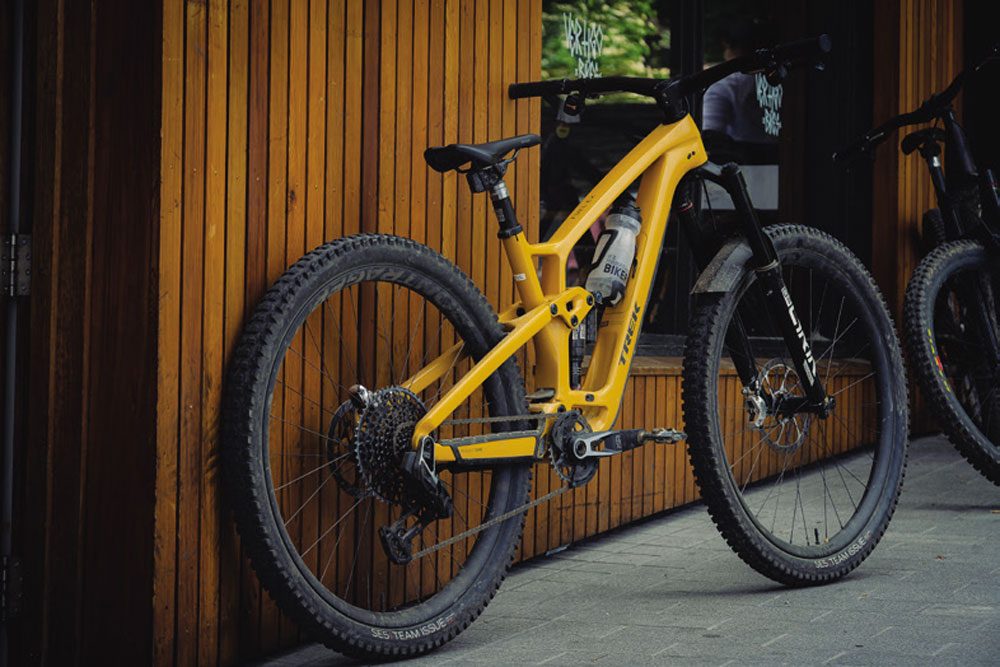
SRAM’s Eagle Transmission aims to solve all these issues by removing the hanger altogether, thanks to its hangerless interface. The Eagle Transmission derailleur mounts directly to the thru-axle, however, it’s not all that simple to get this transmission on your bike. You will need to have a UDH derailleur hanger. Now, I’m not here to write an essay about it, but more to give you my first impressions of riding the new groupset over the past four months. For more, check out the feature (page 40) about the SRAM ride camp, and we will aim to bring you more ongoing tests of the groupset throughout the year. In the next issue, I will go more in-depth about the new cranks, chainrings, chain, and the longevity – I will also add my take on the new SRAM Code Ultimate Stealth brakes.
Late last year, I was contacted by Chris Mandell (SRAM PR) to get a UDH bike ready for his upcoming visit to Aotearoa. I scrambled around and managed to wrangle a media Trek Fuel EX bike, which we fitted out with SRAM Eagle Transmission XO groupset.
My initial riding impressions of the Eagle Transmission, was that it shifts more efficiently and has a mechanical shift feel. Let me elaborate on those points in a reverse order.
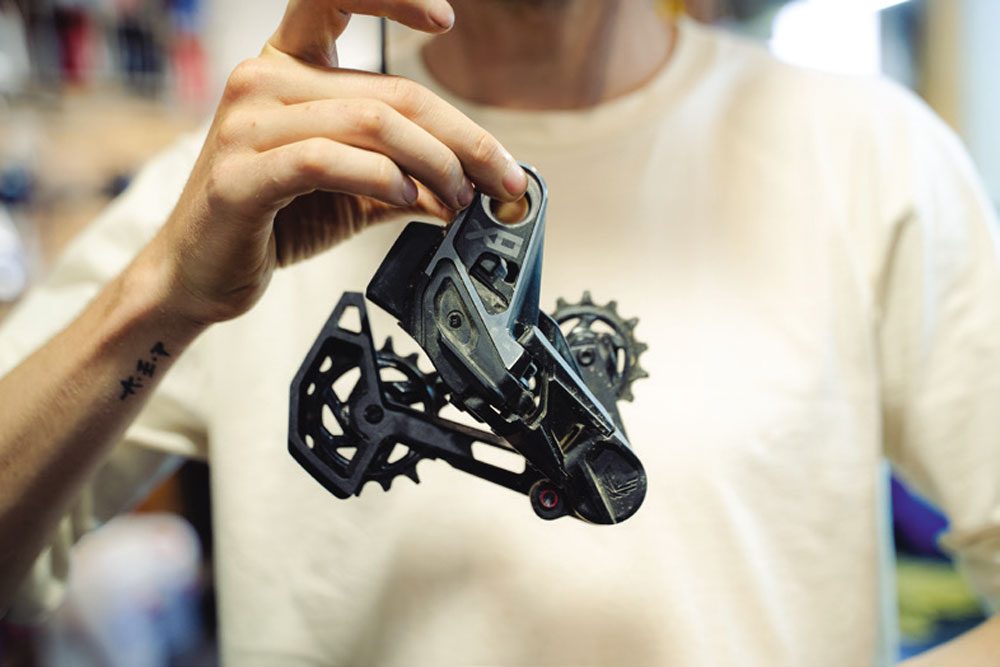
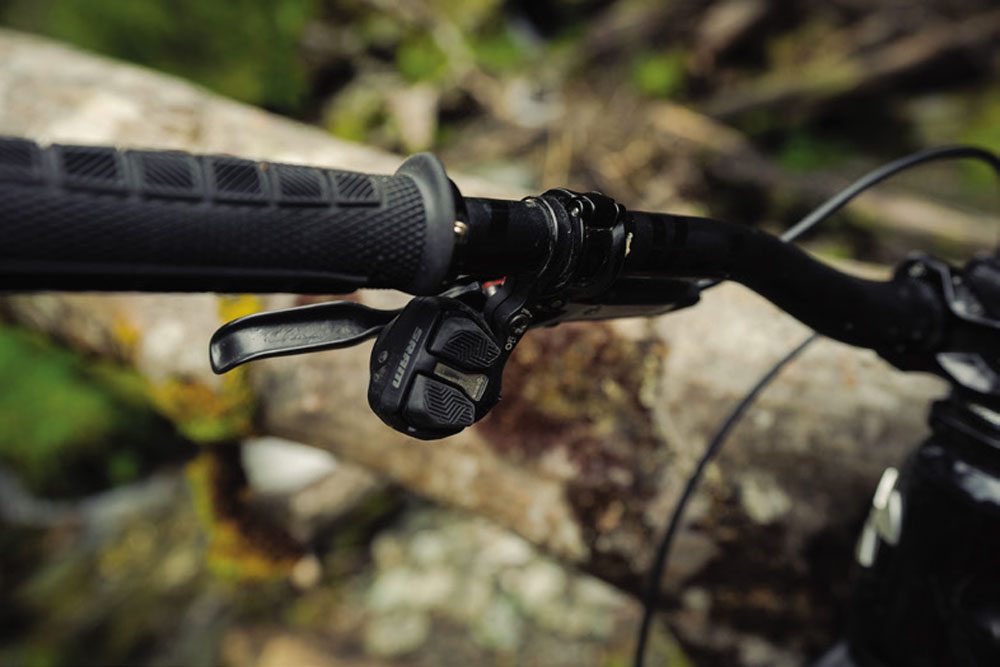
The Eagle Transmission groupsets have new controllers, now called ‘Pods’. There are two models – Standard Pod and Ultimate Pod. They both look similar, but you can change the rubberised button caps on the Ultimate Pods and adjust the ergonomics of the buttons. Also, there are two clamps for mounting the Pod. The standard clamp connects the Pod to the brake. You can move the Pod in and out to a certain extent, moving it towards or away from your hand, as well as rotating the horizontal axis. Alternatively, you can make use of the so-called Infinity Clamp, which is a separate handlebar clamp. You can rotate this in almost any position and attach it in every conceivable way. Here too, the Pod can be rotated infinitely around its own horizontal axis. The whole thing tightens up with a single Torx T25 bolt. Additionally, on the inside of the Pod, you’ll find a button for the MicroAdjust function, which allows you to fine-tune the derailleur, shifting it inwards or outwards in 14 increments. You can still adjust the assignment of the buttons using the SRAM AXS app, or use the traditional AXS controllers if you don’t get along with the new Pods.
The shifting on the new AXS Pods is different when compared to the previous generation of AXS controllers – its more defined, and firmer. They give better feedback and have a definite click. This is thanks to rubberised caps and the different ergonomics options – it’s much clearer about which button you’re pressing. This became evident when getting rowdy through a tough technical rock section. The more I have used these Pods, the more I like them – and this became more noticeable when switching back to the previous generation of AXS controllers. They just make more sense in terms of the ergonomic perspective.
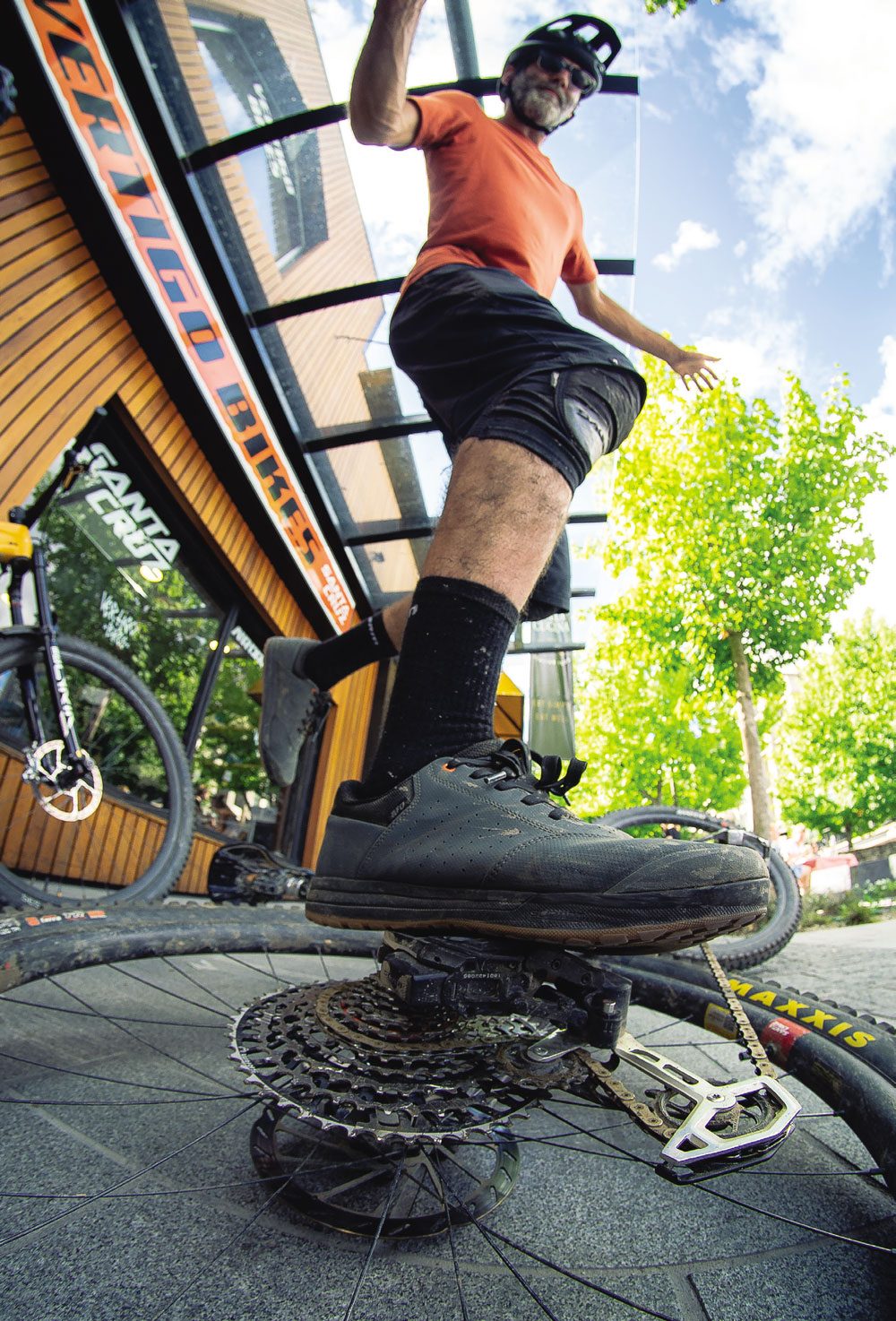
Let’s move onto the shifting. Out the gate, the functionality of the Eagle Transmission groupset is a very clean shifting process, however, there’s a slight lag when compared to conventional shifting. There’s a reason behind this: the chain of the new transmission will only shift once it has reached the perfect point on the cassette. So, when you press the button on the Pod, it doesn’t necessarily make the rear derailleur move immediately. This does depend on your gear choice and your cadence when shifting. But we’re talking fractions of a second and it’s barely noticeable after you’ve ridden it for half an hour – now I don’t even notice it. The flip side to this, is that it allows you to shift unhindered, and keep pedaling at full throttle.
Out with the old ways and in with the new era – you no longer need to back off the pedals every time you’re shifting. This is quite a big change and it’s supreme in practice. Also, this is super- convenient and promises to massively increase the longevity of your drivetrain – especially on an XC bike or eMTB. Sometimes, when shifting more than one gear, it feels like the derailleur delays the process ever so slightly – so you think you’re done and then it shifts into another gear. The reason behind this, is to maintain its precision and keep the chain engaged with a maximum of two cogs at once. You can delete that knocking noise and associated vibrations you get from conventional derailleurs when shifting under load.
The groupset has been flawless. During the four months I’ve tested it for, it’s been smooth and quiet all that time. That’s no joke – I’ve travelled with the bike up and down the country in cardboard boxes and it’s been on and off my rig a ton, and that’s before I even mention the relentless riding. I think I noticed the biggest change when I went back to continental shifting – it becomes apparent that you need to back off the pedals to shift. For me, the shifting under load is massive gamechanger. After a while you unlearn the old ways of shifting, and this shifting becomes intuitive.
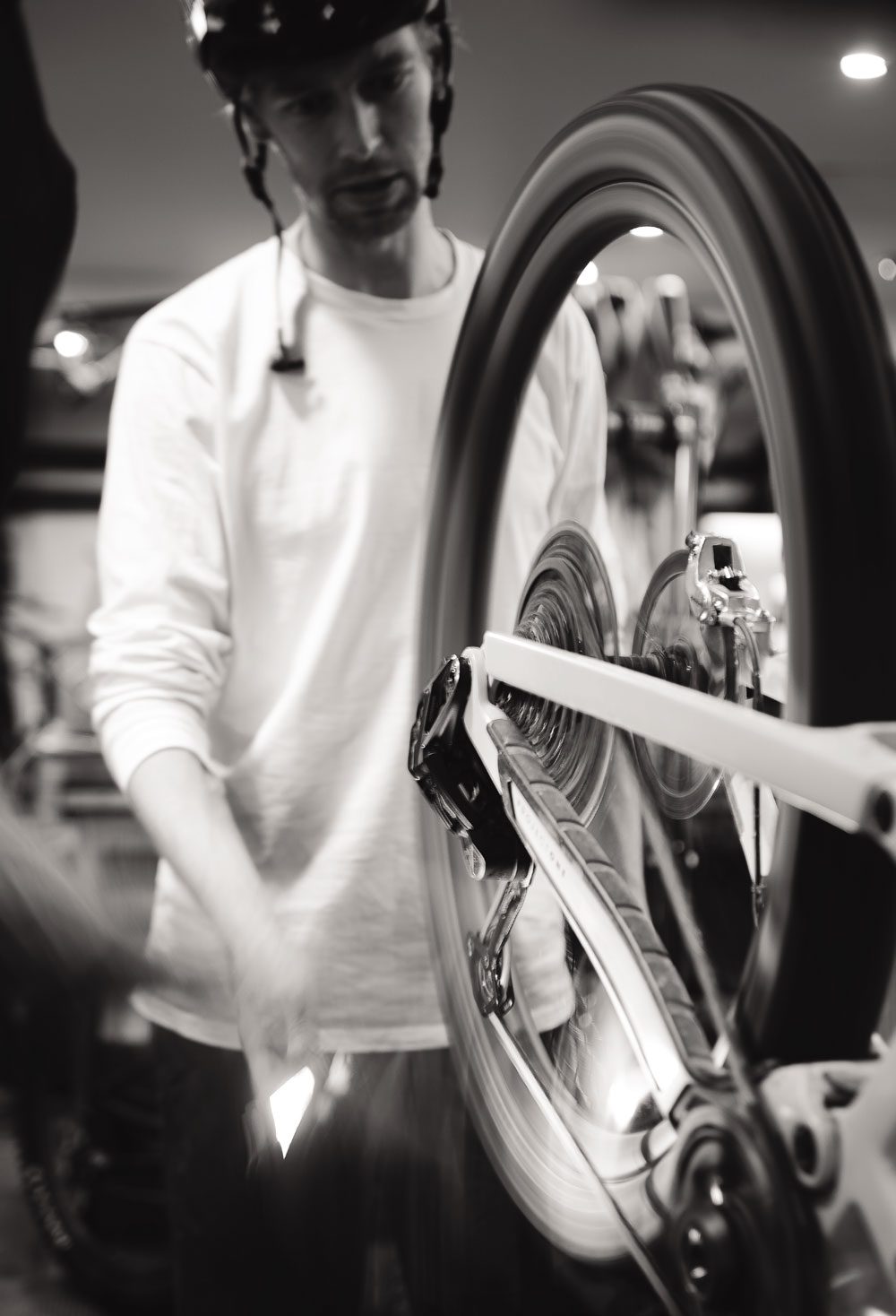
I was clearly lying earlier, as this is now becoming an essay – so let me bring it to a close with some final words about robustness. During the test period I didn’t manage to rip off any of the rear derailleur, and would bet it’s near impossible to do so. I bashed the derailleur around and it has come away unscathed, apart from a few cosmetic scratches. It rides unfazed about any disturbance, even when directly stood on – Chris did this during one of the ride camp days and showed us that even when it’s stood on you can pick it up and ride off without any drama whatsoever. I have shown a few friends this trick over the test period and it impressed them, but what was more impressive was that I could get back aboard my bike and change gears. This derailleur is bloody tough and performs incredibly well.
SRAM have done well at removing the parts off the trail that are annoying – like adjustment requirements – and delivered on impeccable, reliable and robust shifting. Yes, the price is damn high, but given the innovation, quality and precision, you’re not going to be disappointed.

Downhill World Record
Words: Annie Ford
Photography: Callum Wood
A World Record: the pursuit of something you’re not even sure is possible. An opportunity to push your ability and ambition to the outer limit.
It started with a ridiculously pedally summer. After riding the length of New Zealand, towing a surfboard, my newfound fitness led me to climb over 10k vert – accidentally becoming the first woman to do so on an enduro bike. It was a summer of deleting limiting beliefs and digging deep. But I’m a downhiller at heart, and there was one last thing I had my eye on before the end of the season: take the same trusty bike – my Santa Cruz Nomad – and attempt to break a Downhill World Record.
After a little research, I learnt there was no Women’s World Record for vertical descending in 24 hours, only a men’s record. The minimum requirement to set the women’s record was 30,000 metres, or eight Aoraki/ Mount Cook’s. The Men’s World Record, held by two Germans in Schladming, stood at a mammoth 40,840 metres, or 10 Aoraki/Mount Cook’s. I felt sorry for my enduro bike already.
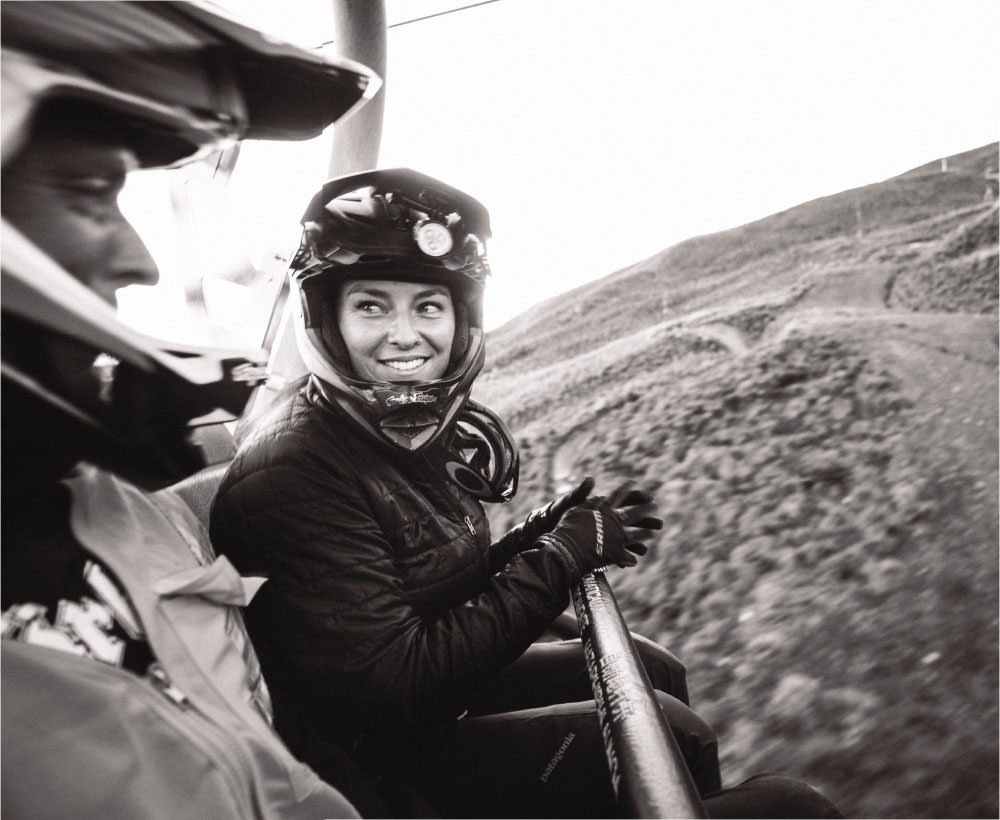
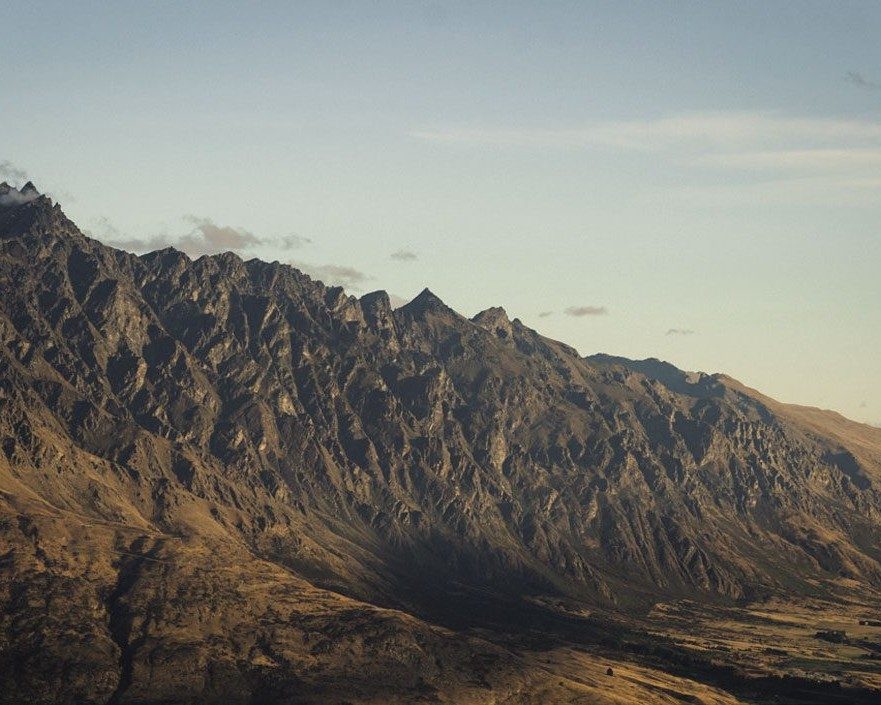
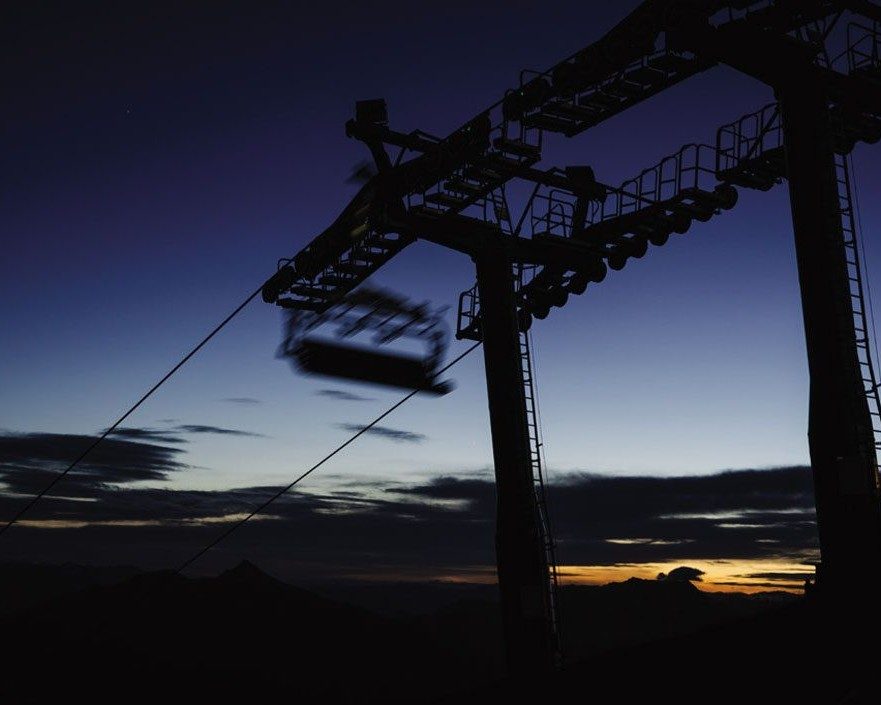
First hurdle: where? Nowhere in New Zealand – or Aussie – can you descend vertical metres as quickly (or as enjoyably) as you can at Coronet Peak. And it’s right in my backyard. Exposed, rough and – best of all – steep, the National Coronet DH Track was my lap of choice: four minutes up, four minutes down, with 419 metres vert gained each time. To set the women’s record, I’d need to do 72 laps.
I began mentally preparing for the sheer repetitiveness and volume of laps. What would it even feel like? No one knew. Ahh well, I guess that’s the whole concept behind a world record.
Second hurdle: the Nomad. I was about to do a season’s worth of riding in a single day. My poor, poor baby… Ben and KC from Vertigo Bikes came to the rescue. We replaced my handlebars with ultra-compliant carbon Title MTB bars, slid on RevGrips and installed Axxios vibration reduction. My SRAM/ RockShox setup was still mint and only needed a service. We rebuilt the wheels, threw on new tyres, and made everything super soft.
Third hurdle: sickness. How’s this for timing – two days before the attempt, I woke up unable to move. I was rolled by the only flu I’d ever had and couldn’t breathe without coughing. I organised the final days by texts rather than phone calls, so people couldn’t hear my voice – and couldn’t tell me not to do it. Sorry mum.
The day rolled in and I was sick as a dog. On the plus side, the weather looked clear for the first 12 hours, with rain forecast to increase. The plan was to kick off at 8pm on the 15th of March, knocking over the night laps while fresh. The Coronet chairlift was sped up to 100% and trucked along at five metres per second – almost too fast to remove our own bikes from the chair in front. The excitement was intense, I couldn’t wipe the smile off my face. I’d never seen a chairlift move so fast. It was bloody happening.
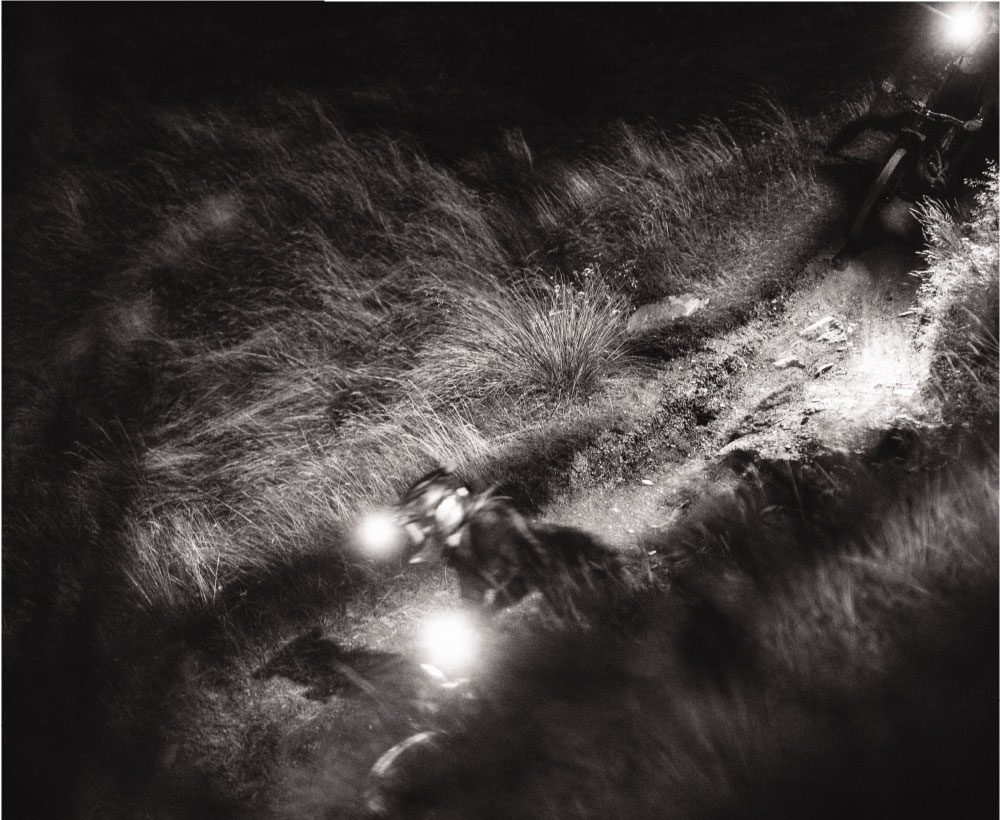
Lap 1 was the most dangerous in my mind, simply because my excitement and energy was borderline ridiculous. “Pace yourself”. Find your lines, settle in. One done. My cheeks already hurt from smiling.
And so, it began. It was some of the most fun riding I’ve ever done. It felt like my mates and I had a private bike park with the speediest chairlift ever – it was ruinously good. The dirt was perfect, a million stars overhead. It didn’t seem real, and we kept looking at each other and bursting out laughing. Time was flying. The cold air attacked my lungs on the chairlift, and my cough became our constant companion. Ascending was harder than descending in those early hours.
For the first 20 laps, I set the pace by leading other riders. I soon learnt that following someone else, however, meant I had to think less. I soon had favourite riders to follow, especially if they showed me smoother lines. It wasn’t long before we could ride that track blindfolded. We knew every rock, every line.
Forty laps in – halfway to the women’s record – fatigue began to wear in. I had my first Red Bull ever, with a coffee chaser. Damn, I could never have foreseen the effect: infinite energy at 3am, a million words a minute. It lasted about five laps before a thick, solid wall was hit. My appetite plummeted, and all food became repulsive. I was on the verge of vomiting each and every time I ate, with food getting shaken up the instant I dropped in. Conversely, I couldn’t afford not to eat, with mandarins and boiled potatoes all I could keep down. Rather than looking for fast lines, I began looking for smooth lines.
Fifty laps in, I began double finger braking and sitting down while descending. Combined, I swear there’s no better feeling in the world. There were no more smooth lines, given I had created my own braking bumps throughout the night. The beginning of arm pump was setting in, an uncomfortable sensation I had sought while training, but never felt. Temperatures dropped, my fingers began to freeze, and braking became more and more difficult. Digging had begun.
A faint red glow lit up the mountain range across the valley, the beginning of an incredible sunrise. I’d just lived the fastest night in history. Those sunrise laps are burnt into my memory forever – a red sky above, lapping with mates in one of the most epic places on the planet. We stopped and stared, but only for a moment.
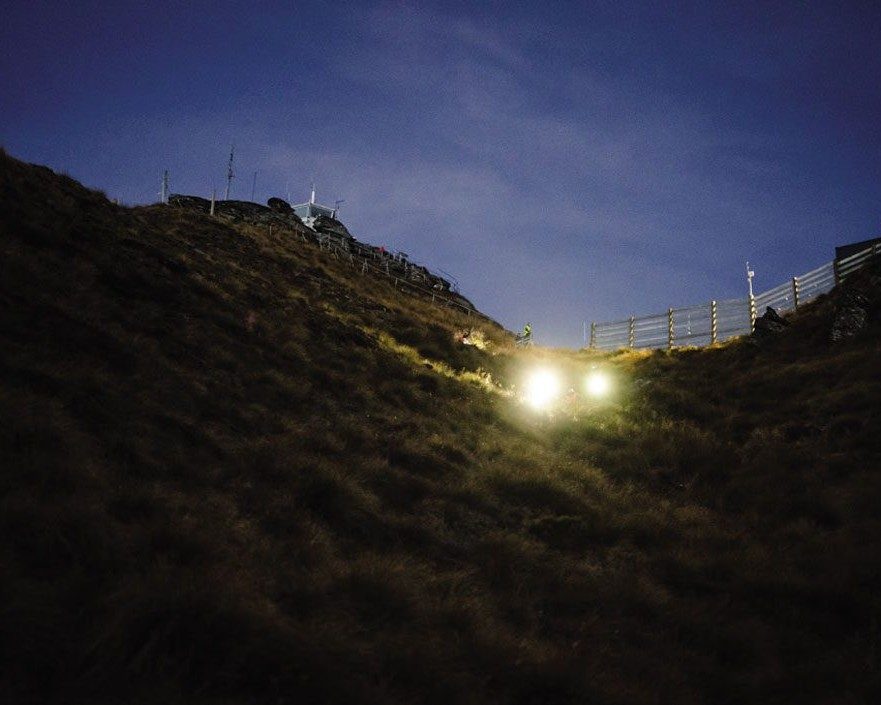
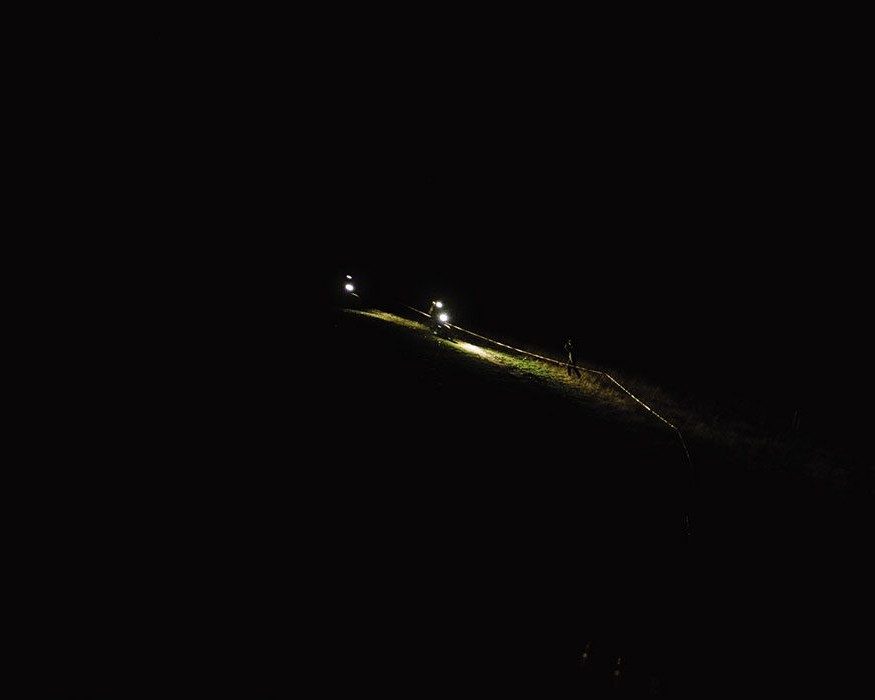
The Women’s World Record was hit at 9am, 13 hours into the ride, with a growing crowd to celebrate. Wow.
Day broke. The light changed everything; it felt like our laps now were on a different mountain, on a different day, on a different planet. Twelve of 24 hours down already, I started doing my fastest lap times, energised by being able to see, plus the women’s record – 72 laps, 30,000m – was getting close now. I got so excited I started doing features and pulling up for jumps again – a bad idea in hindsight, given every single impact cost me towards the end. The crew that had lapped all night with me needed to go to work, leaving me to continue lapping, alone now. This is how I usually ride, and I smiled to myself on the chairlift, absorbing the absurdity of it all. It gave me a chance to pause, feel. It’s then I realised I couldn’t feel my thumbs anymore. Nerve damage. Hopefully they come back someday.
I watched darkening clouds roll towards us from the south, it was no longer a race against time, but a race against rain. My support crew warned me I was a single lap away from the women’s record, that I was well ahead of time, that I should rest. The threatening rain decided for me – the perfect dirt wasn’t going to last much longer. The risk of injury would skyrocket if it got wet, so I’d only rest when I couldn’t continue riding non-stop.
The Women’s World Record was hit at 9am, 13 hours into the ride, with a growing crowd to celebrate. Wow. Eight Aoraki/Mount Cook’s. A new World Record holder. It wasn’t the plan, but, why not? Time to hunt down the men’s record. To celebrate, the support crew didn’t force me to eat that lap – a genuine and unexpected highlight. I began to realise eating was one of the hardest parts of the attempt.
Rain began to fall. Twenty more laps would break the Men’s World Record. Doable. Within reach. But, with fatigue and increasingly muddy conditions, 20 laps felt like 2000. I couldn’t afford mistakes, because my balance was rapidly deteriorating. I was double finger braking only now and sitting at every opportunity – which wasn’t often. My hands and forearms were noticeably swelling with each lap, their size clearly seen beneath my gloves and jumper. I slowed, could no longer jump, and began gritting my teeth with the pain of every braking bump or G-out. It was then that Brooke and Penny joined me – I harvested their high energy and stoke. More and more tourists joined the fray, filming and encouraging us from the sidelines, which meant even more energy for me to harvest.
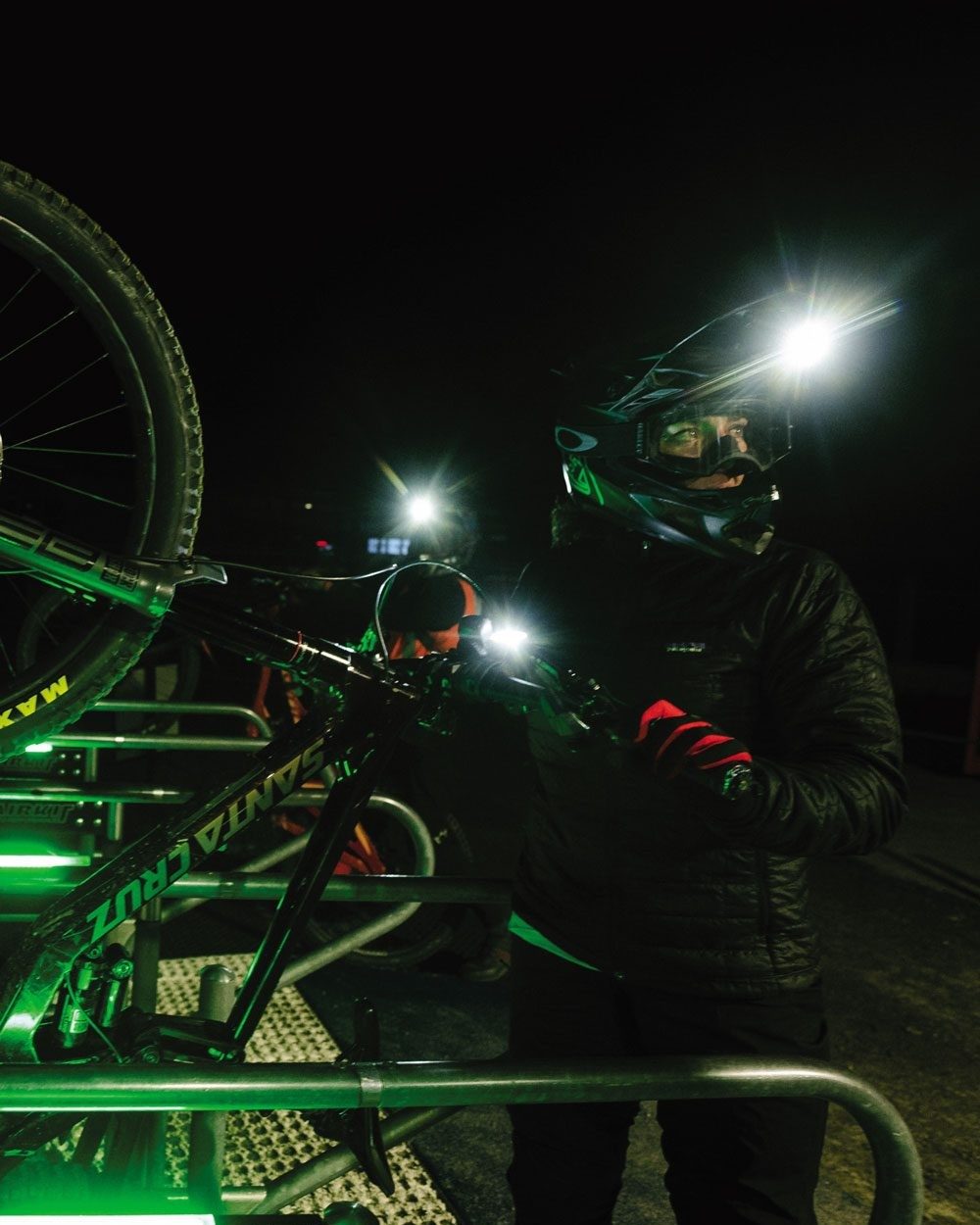
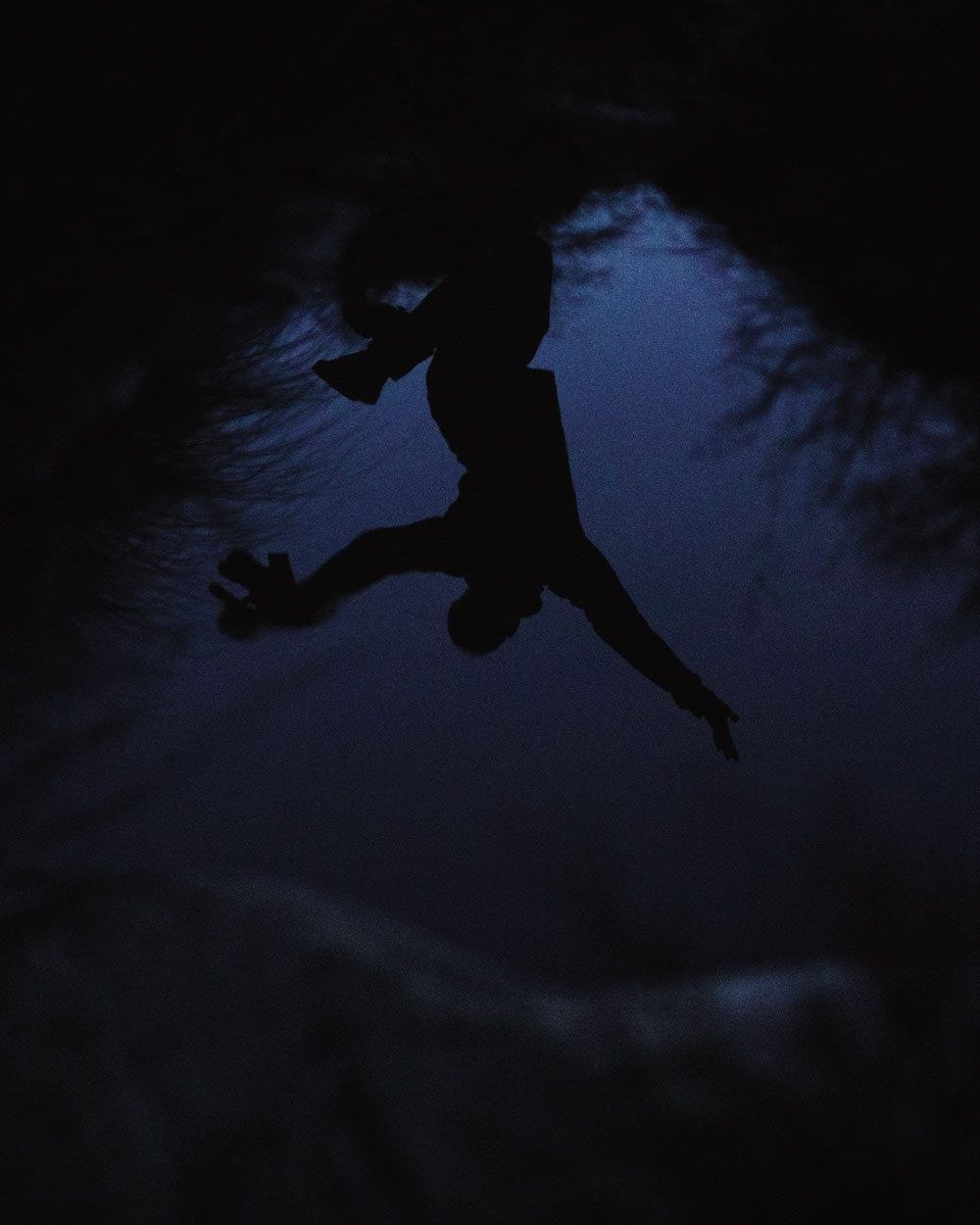
The heavens opened with just ten laps to go, and the last few laps were indeed horseshit. No one wins a shootout with wet Coronet. Thick mud coated both my tyres, making balancing through tight switchbacks near impossible. The closer to 100 laps we came, the slower time seemed to go. I had a little tumble on the 98th lap, covering my gloves in cold mud. I didn’t have the emotional bandwidth for a response to the layover, just picked the bike up, wiped my hands, and carried on. The words “be patient, stay upright” were now on repeat in my head.
At the bottom of the 98th lap, I was told I’d just broken the official World Record. I was exhausted, wet, but grinning; and met with clapping from hardy spectators braving the rain. I felt relief, and impatience. I was solely focused on 100 laps. Nothing else mattered. Arbitrarily and shallowly, ‘98 laps of Coronet’ just doesn’t sound quite as good as 100. Righto, two more then.
Those last two laps were easily the diciest riding I’ve ever done. Every part of me was fatigued, my arms were massively pumped, my goggles were covered in rain, and the trail had become peanut butter. I especially dreaded the rock slab, where poor balance went head-to-head with high consequence features. Despite this, speed increased on the final lap with all pain forgotten, completely trumped by the excitement of finishing. Crazily, it was one of the fastest laps I’d ridden. On the home straight of the 100th lap, I saw the support crew, standing and waiting in the rain, smiles from ear to ear. It was done.
I dropped my bike at their feet and was showered in rain and beer. I had no words. Arms were wrapped around me, with friends and strangers joining in the celebrations. I cannot explain the feeling I had in my chest, the comradery of the crew, the soreness in my body. It’s an experience I’m not sure I’ll ever be able to surpass, but I’ll sure try.
Final figures: 100 laps. 42,085 metres descended. 18 hours and 53 minutes.
I dropped my bike at their feet and was showered in rain and beer. I had no words.
I went out chasing a number, but that turned out to be the least important part. The people, the focus, the beauty, the mind, the body, and the INCREDIBLE support. That’s what’s real.
I honestly cannot articulate my gratitude to those who made it up the mountain with me. I could not have done it without them. They brought fuel to the fire, timely playfulness, and brilliance to this giant ticking clock we call life. I’ll never forget it.
A special shout out to the incredible Coronet Peak team, who supported me every step of the way. To SRAM, Patagonia and Title MTB for getting epic adventures like this off the ground. To Ben Hildred, for your perseverance in getting me to eat, and holding me up physically and mentally when the going got really tough. To the riders, Mateo Verdier, Brooke Thompson, Piyush Chavan, Jess Blewitt, Baxter Maiwald, Brett Rheeder, Penny Rowson, Jake Byrne, Sam Evans and Jamie McKay, who shared the wild ride. To the witnesses, Robert Lyons, Robin Bush, Lena Florey, Iona Bruce and Paul Westbrook, who put in long shifts at ridiculous hours. And to Jonny Ashworth and Callum Wood, whose incredible talents captured the day perfectly.

Ride Camp: SRAM Eagle Transmission
Words and Photography: Jake Hood
Where do you even start with this? Is it by talking about the radically new and different transmission system SRAM has just come out with? Or should I start by saying just how much of an all-star crew we had for this trip? How about the epic riding Queenstown provided? Or should we just talk about how good the food was at Atlas? Well, I guess I’ll cover it all below.
I’m a bit of a super tech bike nerd. I love trolling through the Vital MTB forums, looking at all the new and interesting stuff people dig up and find out there on the World Wide Web. How they find what they do I will never know.
They even manage to find stuff that is meant to be hidden from the public, months before it’s due to be released. It must be a nightmare for brands trying to keep things hush-hush, but it helps builds mystery and a lust for the things we can’t have yet. One of the very things I saw on this forum was SRAM’s new AXS drive chains. They weren’t really hiding it from the public, though, as it was already on a few of the pro’s bikes in the latter half of the EWS and XC season last year. The derailleur, cassette and chain were different; instead of being mounted to a hanger, the derailleur is mounted directly to the frame. I saw it and thought to myself, ‘that’s really cool, I like what they’re doing there’, then sort of left it. I didn’t really think about it all that much after that. I was sure it was going to be as good as any other AXS derailleur when it came out. Boy, was I wrong.
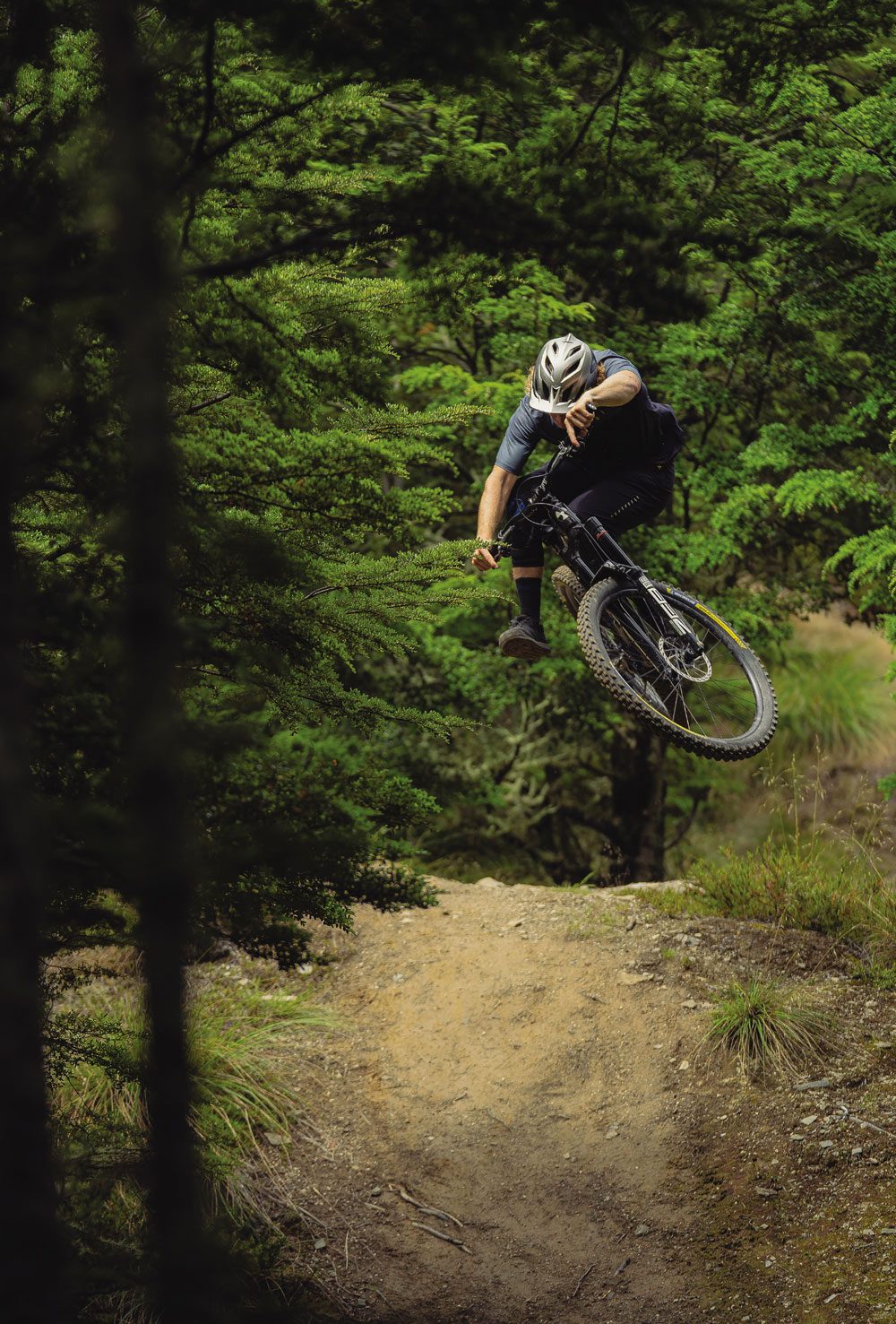
When Liam called about this trip, I was flipping stoked. Not just because we would get to ride the new product, but mostly because Chris Mandell from SRAM was coming over to talk us through the product and ride with us. I originally met Chris in Whistler, way back in the day when I lived there. I got to do a few laps of the bike park with him and boy oh boy, can he ride a bike well! I think I first read about Chris in Dirt magazine; it was a short piece about him, his BMX background and the Kona Entourage. Chris has done many things in the industry, he’s a man who’s worn many caps, including working at Kona, designing the original process line of bikes (technical Gen 2 processes) – that you could argue really started the longer, lower slacker trend – and working at Rock Shox as rear shock product manager. The latest Super Deluxe Air is his baby and that shock rips. And now he’s working for SRAM. I’d say I’m a little bit of a Chris Mandell superfan, so I was stoked to get to ride with him again and show him around Queenstown.
My original plan for the few days we had, was to start with a sunrise shoot at Ben Lomond saddle. It would have been a 4am grind up to the saddle to get the sun just poking over the Remarkables. For the five weeks prior, in Queenstown, we had really lucked out on the weather. There hadn’t been a drop of rain and no clouds to be seen, but the weather forecast was predicting rain for the days we wanted to ride and shoot. Typical. Liam and I caught up with Chris the night before the shoot/ride days started. We headed to Atlas for food, beer, planning and shooting the shit. Chris was stoked on the idea of a super-early-start sunrise mission, so we hummed and hawed about the idea. Rechecking all the weather apps suggested rain in the morning and not clearing until later in the day, so the 4am idea got sacked off. The new plan was for everyone to meet at a cafe in the morning and go from there – a bit more of a leisurely time.
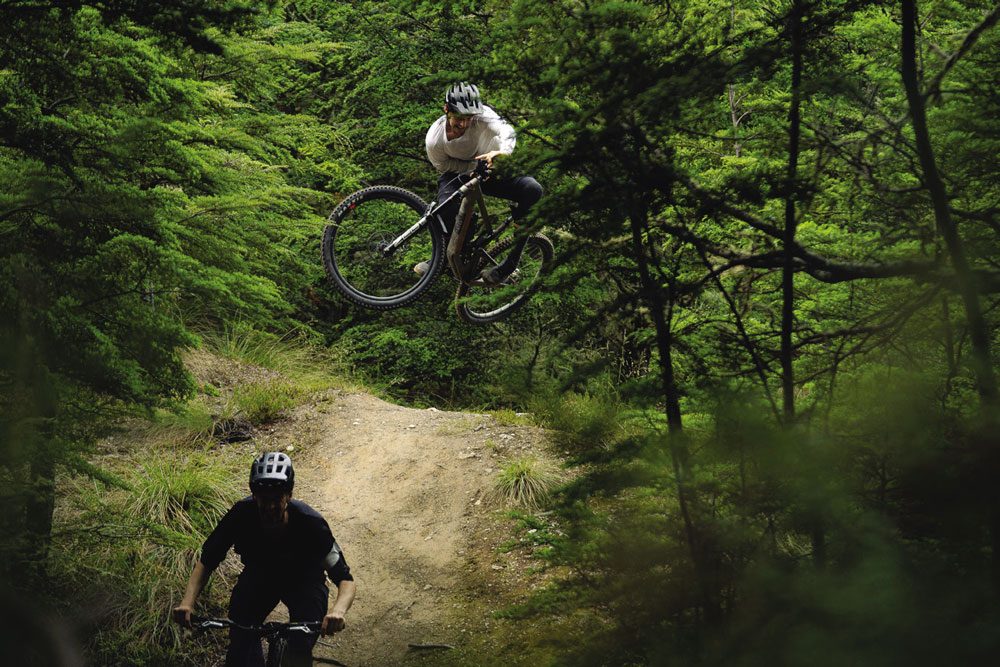
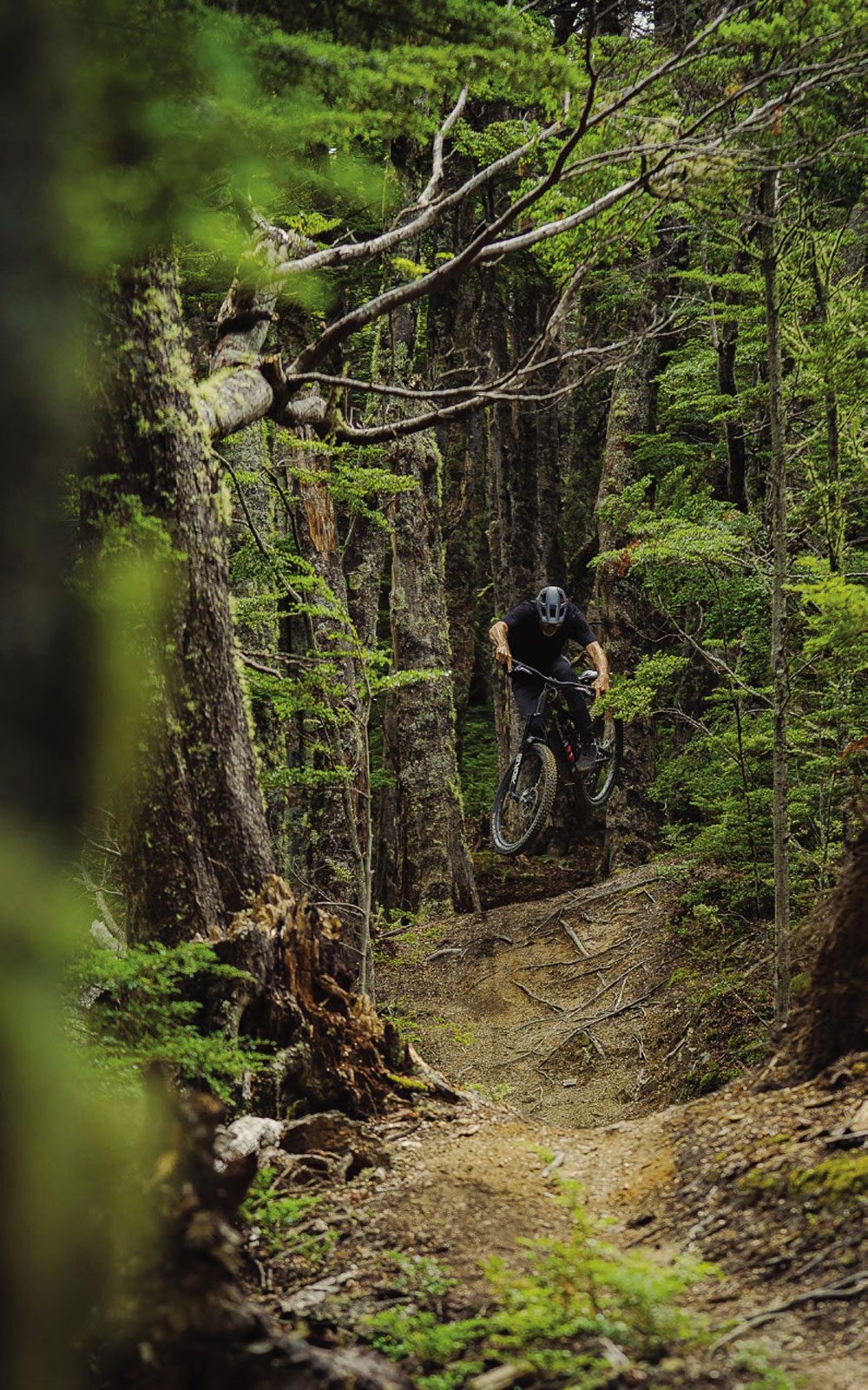
IN THE MORNING WE MET UP WITH THE REST OF THE CREW. A BUNCH OF HEAVY HITTERS. LOW-KEY SAVAGES ON 2 WHEELS, ALL AS HUMBLE AS THEY COME.
That morning, we met up with the rest of the crew: a bunch of heavy hitters; low-key savages on two wheels – and all as humble as they come.
Ben Hildred, the Vertical Metre Eater.
This lanky, tea-drinking Englishman has probably climbed more metres than anyone else in New Zealand, from Everesting and Double Everesting to being the first to complete the Olympus Mons Challenge, doing K2 and climbing one million feet in 200 days. He just loves riding his bike – and all things related to bikes. With a previous history in BMX, he brings that culture to his riding – playing about with the trail, jibing and getting creative – even on the uphills. He treats his 29er trail bike like a BMX, using his long limbs to his advantage.
Dan Booker, the Mayor of Maydena.
A flat-pedal assassin that has more raw talent than many of the top pros. His bike skills and balance are incredible. Seriously, watch some of his manual videos. Silky smooth whilst being stupidly fast. I’d argue he will de-throne Sam Hill soon for the title of fastest flat-pedal rider. It wouldn’t surprise me if you see him nearing the top step in this year’s EWS season.
Last but not least, Andrew Clark.
Hailing from Scotland but now residing in New Zealand, Andrew is the most low-key, chilled-out chap and is as humble as they come. He’s one of the best bike riders that no one knows about! He oozes style, with an ability to contort his bike and body into positions that the laws of physics shouldn’t allow. Take Newton’s laws of motion and throw them out the window when Andrew rides. It’s mind-bending to watch. All while having a massive smile on his face. I wanted Chris to meet him and see what he can do, because it really is something special to watch.
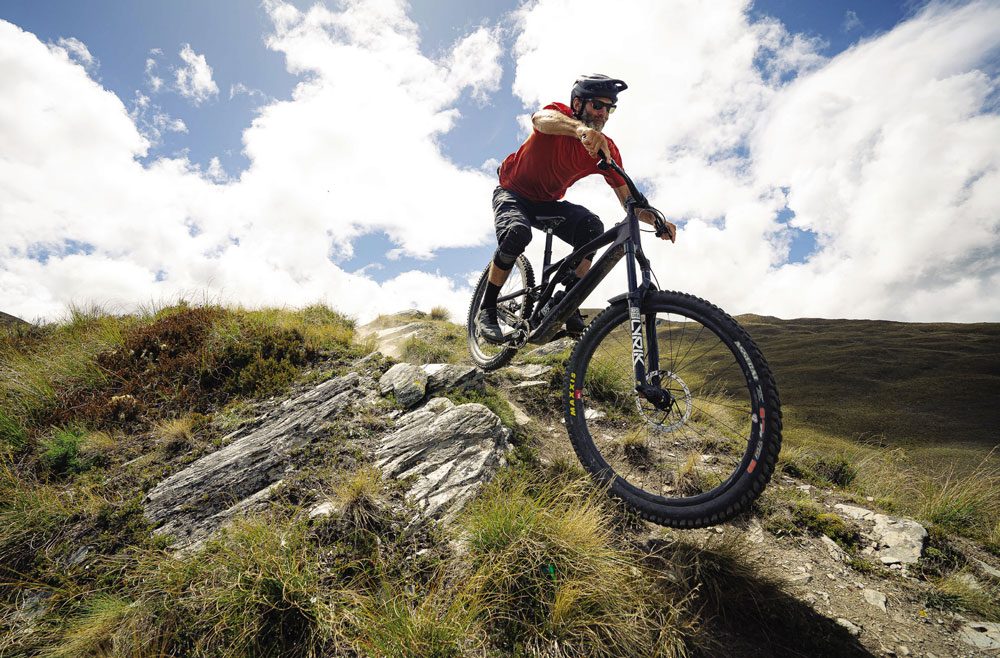
THE LEVERS NOW RUN PARALLEL WITH THE BARS. WHEN YOU SEE THEM YOU ARE LIKE “WHY HAVEN’T THEY DONE THIS BEFORE!” IT MAKES SO MUCH SENSE.
The rain was coming down as we inhaled our coffees the following morning. But, up the lake, you could see it starting to get brighter. We decided to make a move and go ride some bikes. We were heading to the beech forest anyway and like my mother used to say; “you’re not made of sugar”.
We parked at the bottom of the Skyline access road and, as we unloaded our bikes, I finally got to take a good look at the new stuff. It was quite the radical departure from your traditional mech. Mounted directly to the frame via a big clevis mount, the derailleur looked slick and futuristic. It had almost taken some of the cyberpunk aesthetic and feel that Hyundai is using in their cars with sharp lines throughout, highlighted by the brushed alloy metal on the black derailleur. It’s a solid unit of a mech – it looks like you could take this thing through the gates of hell, and it would come out unscathed. The new cassette was a work of art as well. As you look closer you realise SRAM have added X Sync to the cassette. Like, mind-blowing stuff. The new shifter – or pods as SRAM refer to them – have a more traditional, ergonomic design to them compared to the previous generation. It uses a two-button system, one placed above the other, with rubber paddles that require a push to make them feel like a shift versus a tap. The return spring built into the paddle gives you that positive, almost mechanical, feel. To me though, the pièce de résistance was the new XO cranks. They are gorgeous. A change from carbon to alloy, they are unlike anything else on the market (well, minus 5 Dev). They’re minimalist, cyberpunky and abstract. You can tell they used what they learned about their AI crank program and applied it to this. There’s a hole near the crank bolt, highlighted by the brushed metal accent that gives the look of a drawing compass. The bushed metal part has been placed in the part of the crank where you’re most likely to get foot rub, thus keeping the crank looking brand new for years for us chronic shoe crank pedal rubbers. The final piece that sets these apart, is the return of the bash guard. Why these ever fell out of fashion I don’t know, but I’m so glad to see them back. They mount on the chainring and can be removed if you see fit. I’m such a fan of these.
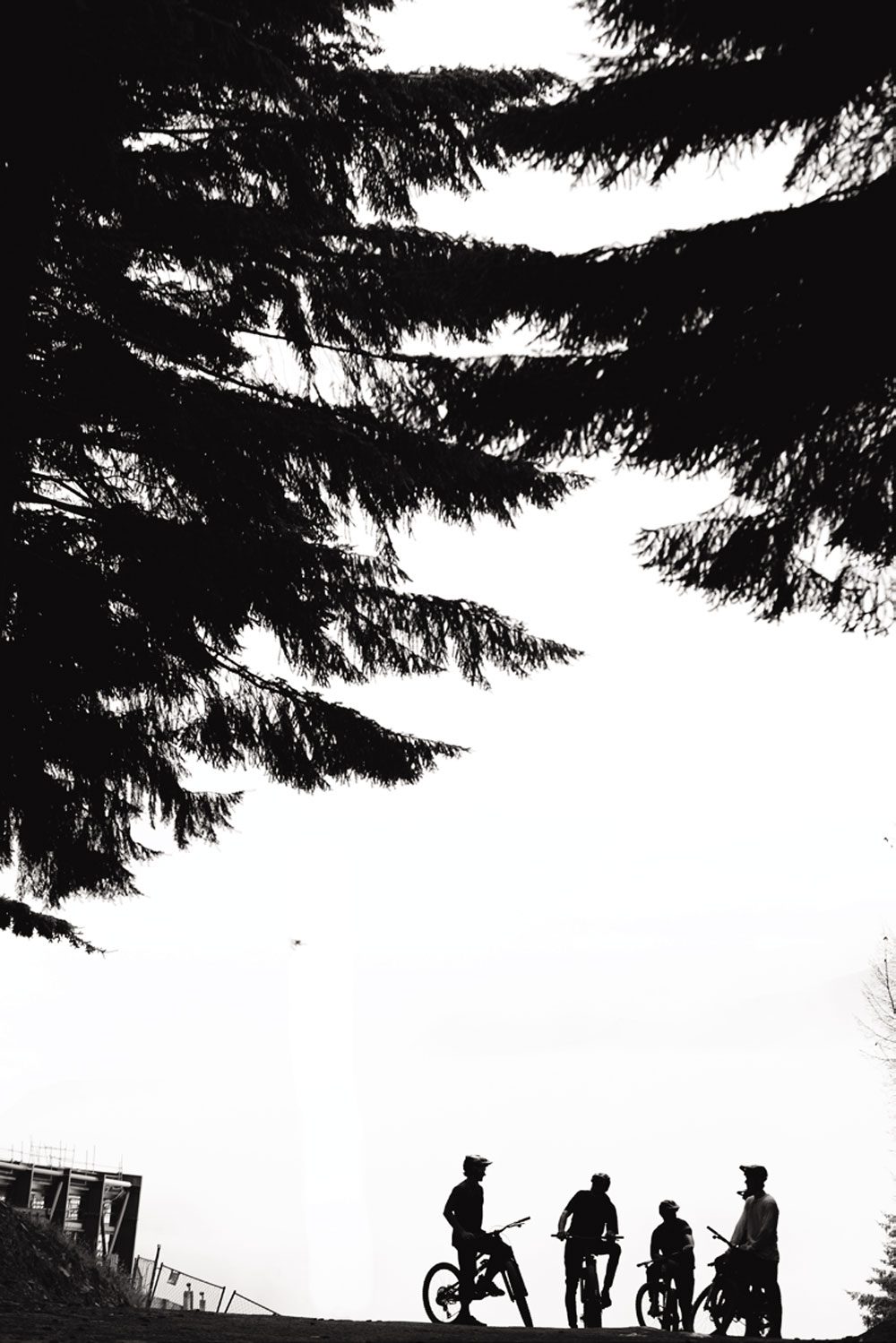
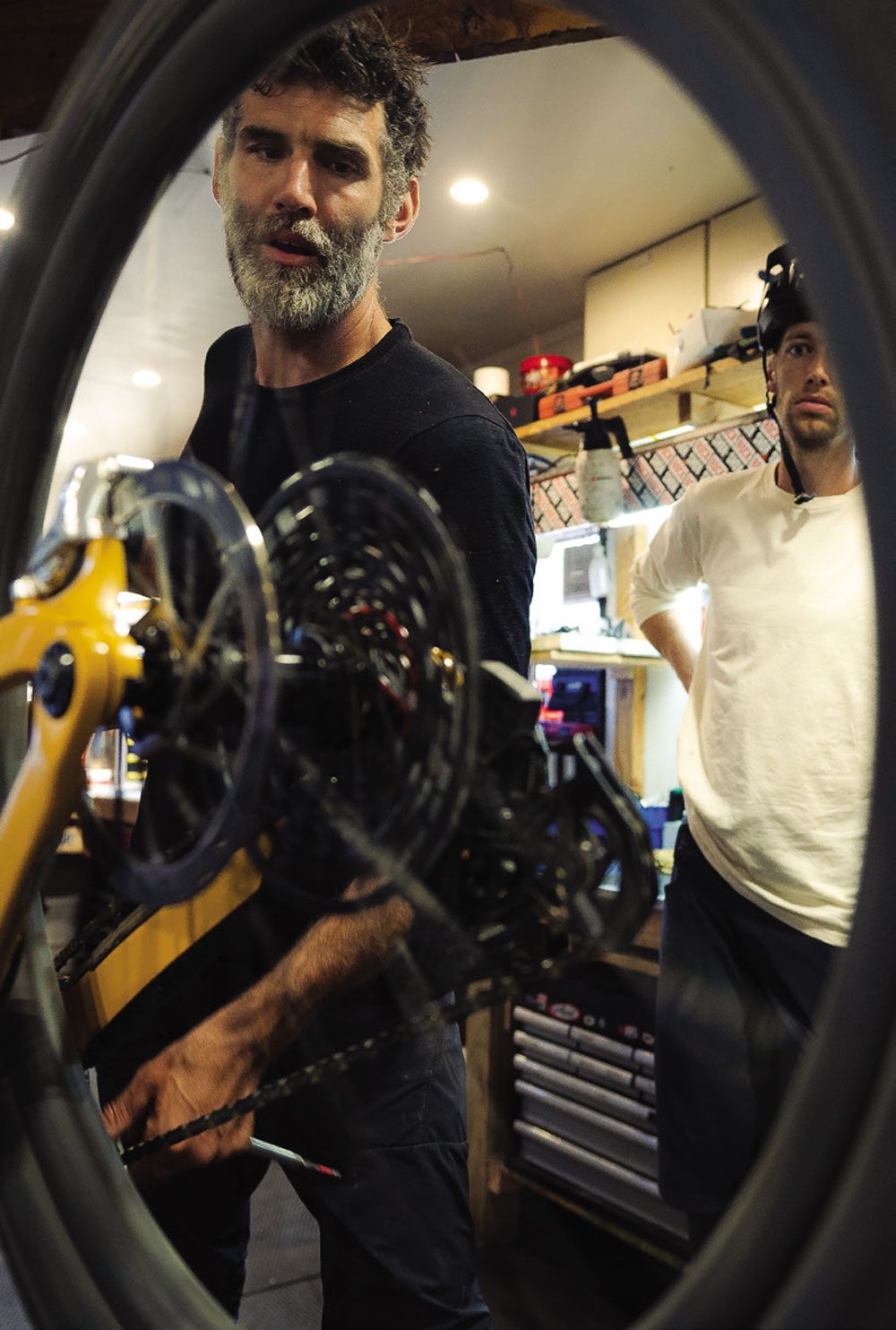
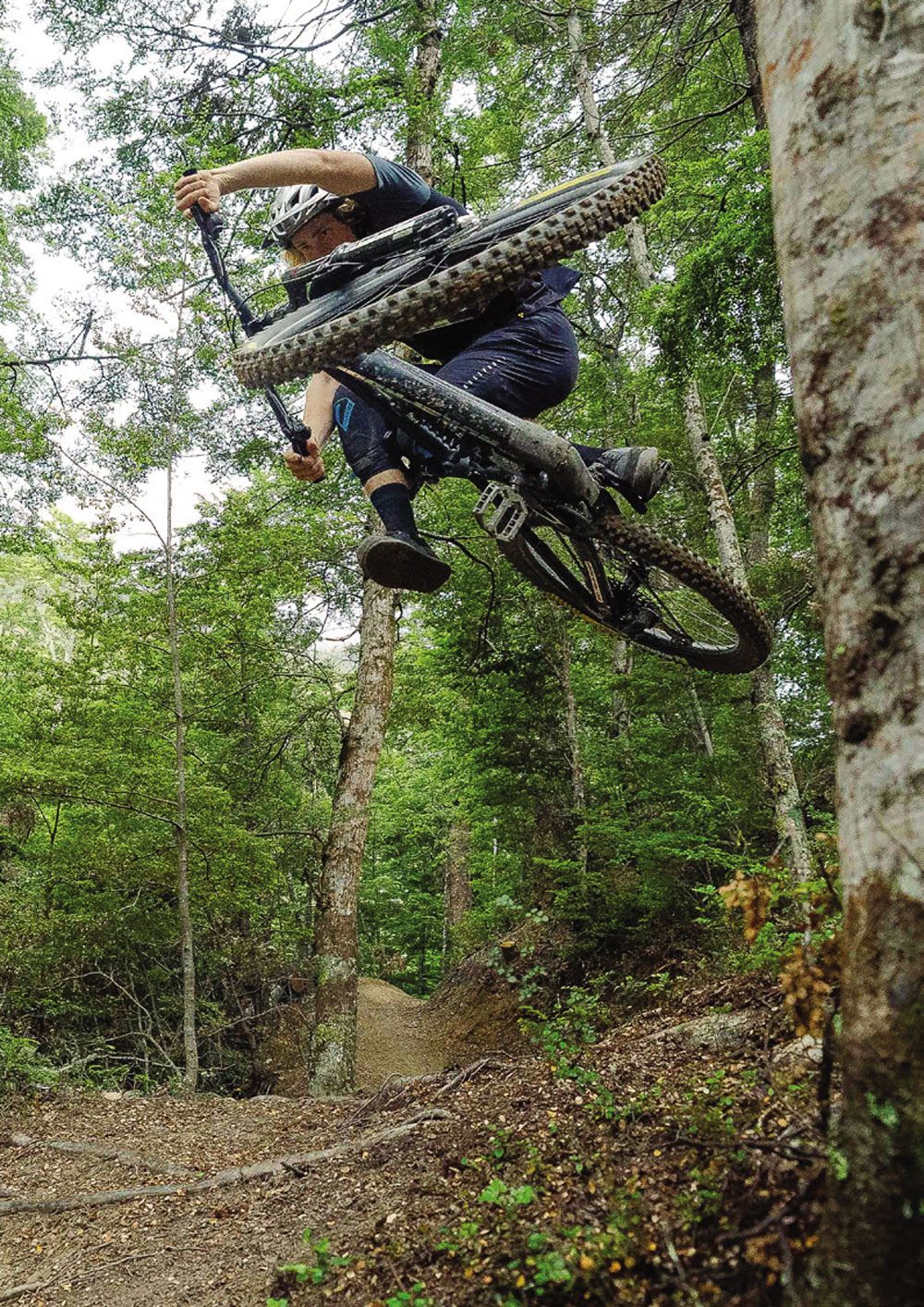
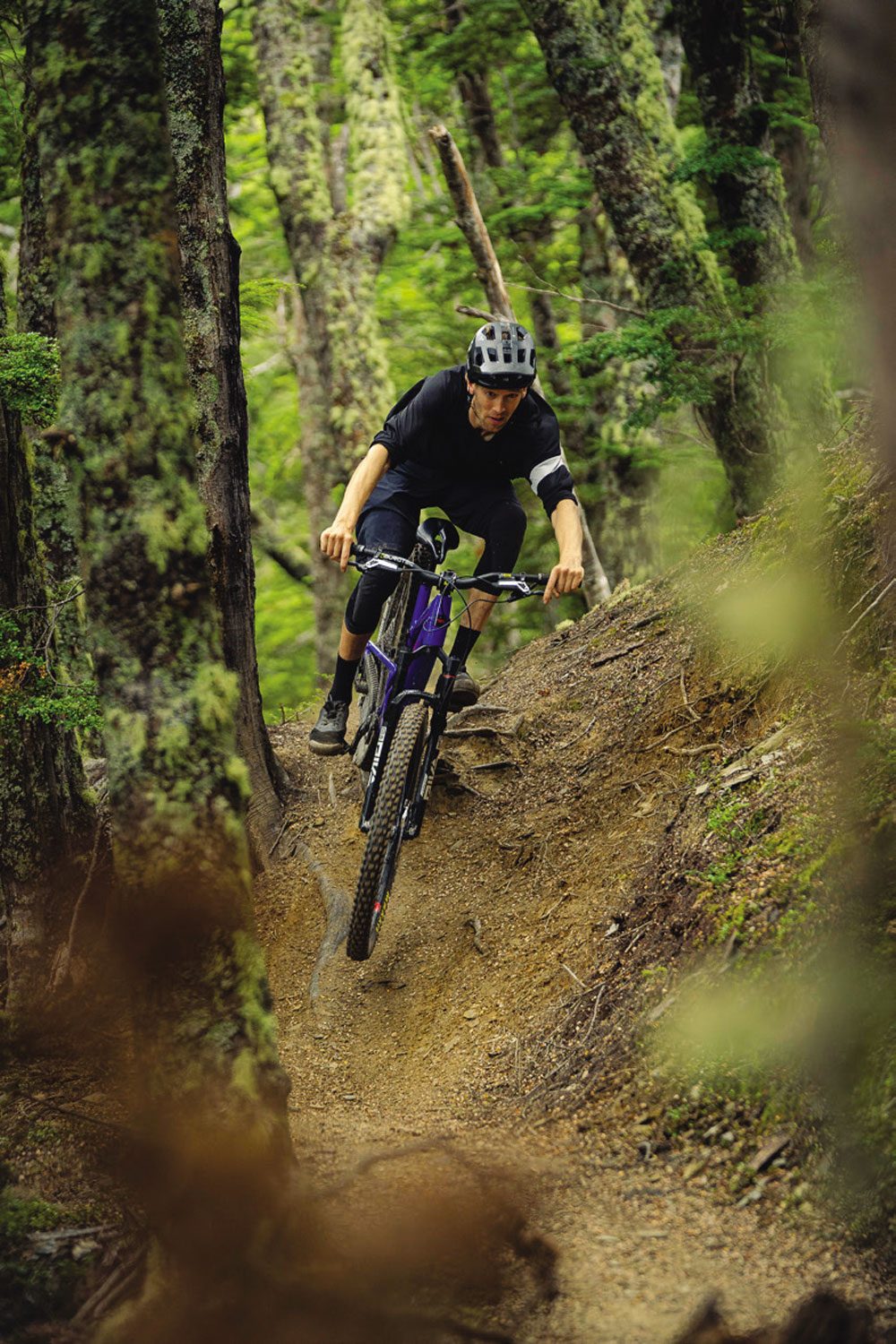
I was so distracted by the transmission that I didn’t even notice the new code brakes. The silver and black theme continued here. The polished calipers are a thing of beauty; these have stayed the same as the current codes, but where the changes have been made is in the lever. The levers now run parallel with the bars. When you see them, you’re like; “why haven’t they done this before?!”. It just makes so much sense. No more sticking out at 45-degrees, and the cables run much nicer. I feel like the 45-degree brake is just a hangover from V brake levers and no one ever thought, ‘hey, we could just make them run parallel with the bar, keep it nice and tidy’. From the first couple of pulls on the levers, you can tell there’s been some reworking for the internals. Lighter to pull than the previous code RSC. What I did think was weird, was that the new caliper – that had been seen on some of the World Cup racer’s bikes this last season – wasn’t there. Maybe SRAM is holding it back for another brake. I guess time will tell.
Chris explained that there are three tiers of these new AXS groupsets: X01, XX1 and XX1 SL.
We all jumped on our bikes and set off up Skyline access road in search of trails in the beech forest just outside the bike park. It’s a steep grind of a road – anyone who has ridden it will know. Starting at its steepest for the first third, before mellowing off a bit. The clouds were spitting a light amount of rain which was a refreshing change from the previous weeks of blaring sun and no shade – you didn’t feel like you were about to melt into a puddle by the fourth steep switchback. The steep fire road was the perfect place to test the gears under load. The gradient means you have to put a lot of force through the transmission and, being a road, it let you concentrate on what the gears were doing when you shifted. I guess I was in the perfect place to shift like an idiot under load and test these new gears. From the first shift, you realise this is something special – it’s not just another groupset, another new drive chain, it’s more than that. It’s the crispest shifting I’ve ever experienced. It has such a positive feel to it. There is that reassuring ‘clunk’ as it moves into gear, almost mechanical but with the precision of electronics. Lightning fast; instant, precise. Even under load in the worst possible moment to shift, it was still absolutely light years ahead of everything else. Whatever you have learned about not shifting under load, you can now throw out the window. This new system does it with ease. I think a big factor is the added stiffness of the direct mount, and the X Sync teeth on the cassette, but SRAM have also made many tiny tweaks that have really optimised the system. We’ll discuss them later.
The pace was hot, with Ben leading the charge. I guess that’s what happens when you are riding with a bunch of absolute savages. The relentless access road mellowed slightly towards mid-way and gave me time to get my breath under control. We stopped at the mid-way point and Chris told us some stories about the adventures he’d been on. After a quick break, we set off again up the second part of the road. I’ve ridden this road so many times over the years and it never gets any easier. If you get fitter, you just end up going faster. It’s surprisingly addictive to pedal up the road – even though it shouldn’t be. As the trees start to thin out, you reach the Skyline top gondola. We continued heading up via Beeched As, then Ben Lomond walking track to Lower Missing Link – a favourite trail of mine. It’s a perfect balance of flowy beech forest mixed with a little bit of tech. It’s a fantastic trail that works for all abilities, and it was running great after recent maintenance work by the crew at Elevate Trails.
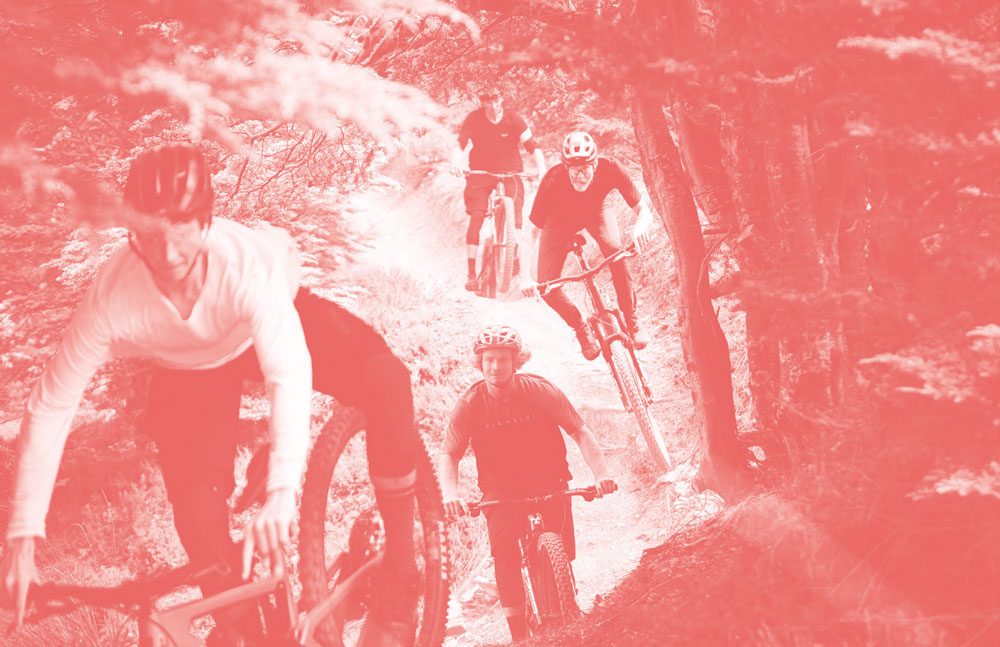
The trail starts off out in the open and winds its way down into the beech forest – this is where it really gets good. We stopped and sessioned bits on the trail while I shot photos. The first feature we stopped on was a bomb hole compression to a small jump. From the get-go, Andrew was blowing minds. He had literally just jumped on the SRAM-equipped Megatower that morning, without any time to get used to it, and rough settings. He came over the rise into the bomb hole, doing an inverted nose press over it, all tucked up in ways that shouldn’t be possible. Smooth as you like. Chris’s face lit up – “what the heck?!” From that point on, I knew we were in for a good day.
We worked our way down the trail, sessioning different parts. Everyone fed off the energy of each other. Dan would be throwing some huge shapes off the smallest mounds while also travelling at a ridiculous speed through the turns. You could feel the earth trembling as he passed. Andrew was doing Andrew things; bending the laws of physics and gapping into switchback turns that shouldn’t be gapped into. Both Dan and Andrew’s styles complement each other, making it so good to watch. Chris was the hype man of the day, throwing out hype and stoke every time something cool happened, genuinely so excited by what was going on. Throwing out ideas. It was infectious. Everyone was just going harder and harder. Chris and Ben were bringing their BMX background to the trail. Throwing down tweaks that are better than a lot of the pros, dancing their bikes down the trail in such a beautiful manner. Smooth and light, their long limbs smoothing out the compressions, they’re two great people to watch flow down a trail. Such a joy to watch. Fantastic.
After Missing Link we headed down Creaky Winders and shot some more photos. This is another absolute gem of a trail. It snakes off of Beeched As and is a perfect mix of tech and flow. It’s niggly and tight in some spots; weaving up and down. It keeps you on your feet with lots of little features, surrounded by beautiful beech forest. It’s tremendous. Everyone was just peaking on this trail; fizzing and pushing each other, over and over. We worked our way down the trail, checking off features as we went. Near the end of the trail, I could tell people were getting tired. Mistakes were happening. I called it a day on the shoot. It was time to head to town and refuel.
We followed the Fernhill Loop back to the bike park and down Squid Run in a train. The crew might have been tired but that wasn’t slowing anyone down. We weaved our way down trying to hold the wheel of Dan. It was another good test of the transmission, which was a lot quieter than my current GX AXS – less chain slap. The shift was more positive even on the way down. Some will say, “ah yeah, that’s just because it’s brand new!”. But the set I was riding wasn’t – it had been used for a few weeks, making how well it worked even more impressive. It was an absolute blast training down Squid Run at the pace we were going. Borderline dangerous with everyone feeling so tired. At the bottom, we all had huge grins on our faces.
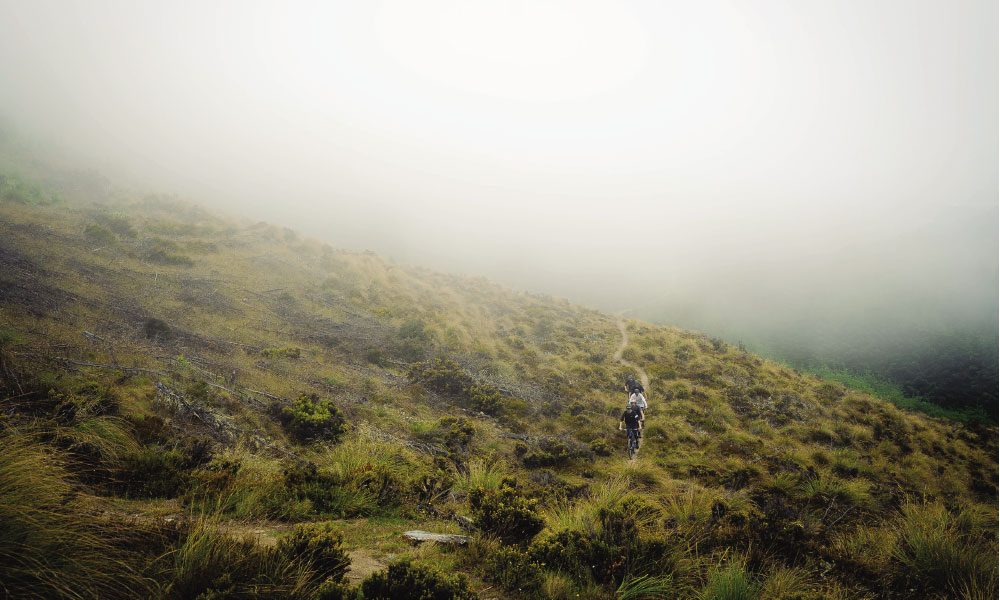
THE MORE I RODE THE PRODUCT THE MORE I LIKED USING IT. IT’S AN ABSOLUTE JOY TO USE.
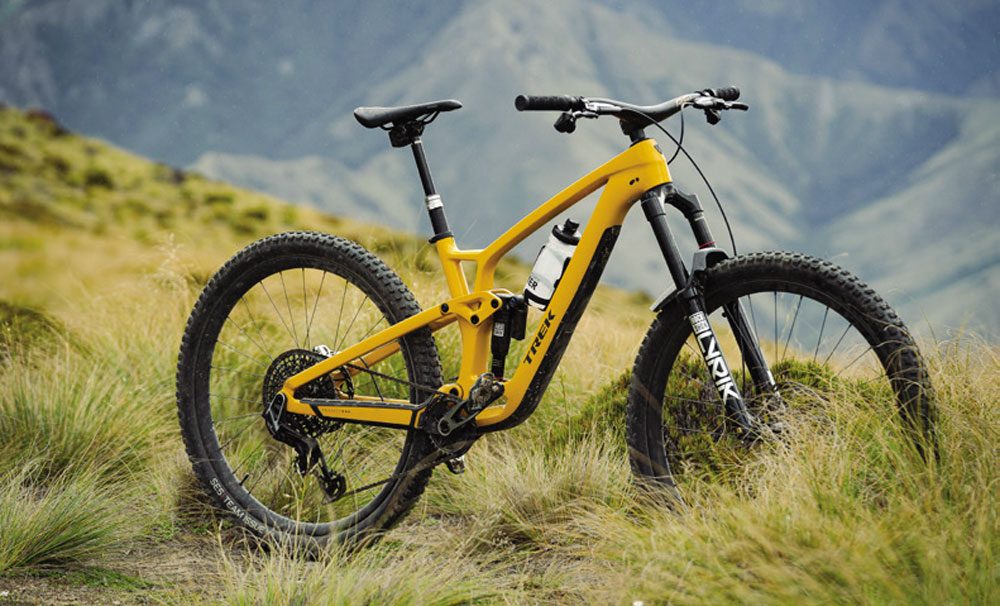
All good rides finish with a beer, right?
We rolled back down to the local watering hole to refuel – there was only one place to go, and Atlas was that place. I’ve said it once and I’ll say it again: it’s the perfect after-ride spot, with great atmosphere, lovely staff, killer food and 22 taps of fantastic beverages to choose from. We fueled up on beer and burgers whilst chatting bikes and trails. Before the inevitable food coma set in, we headed out quickly for a little more time on the products. A few chilled laps in the Fernhill/ McGnarly area, with one lap down Skyripper and a McGnarly to finish the day’s riding. The more I rode the product, the more I liked using it. You just know that when you pull the button to shift, it will do it; there’s no need to worry about a little under-power half pedal to help it shift – just pedal as you would, and the chain will shift on the cog. It really does improve the enjoyment of climbing. The slightly altered rations in the cassette were also a welcome improvement. No more big jumps between the 42t to 52t; instead you 44-52 jump, which feels a lot nicer. It doesn’t sound like a lot, but it makes a difference – there’s less of a sudden change in ratio. It’s hard to put in words the feeling of the new transmission over the previous stuff, it’s just an overall feeling of a much nicer time while shifting. A good analogy would be to compare driving a car from 10 years ago to driving a brand new, modern car with all the bells and whistles. Both do the same thing, but the newer car is easier to drive, more relaxing, quieter, with more features to assist you. Overall it’s just a more enjoyable experience.
Both laps of the Fernhill area were a blast. The party train down McGnarly was ridiculous. Bikes were dancing left and right over the jumps. Berms were being blown up by Andrew, Dan, Ben and Chris. Dust explosions everywhere. It was flipping awesome. Too much fun. Then things started falling apart on Skyripper. The long day had taken its toll, everyone was tired and mistakes started happening. I set off first, only to hear carnage behind me. Dan had blown off take on the steepest part. I think Andrew also had a wee washout. Everyone’s concentration had gone. It was time to call it a day on the riding.
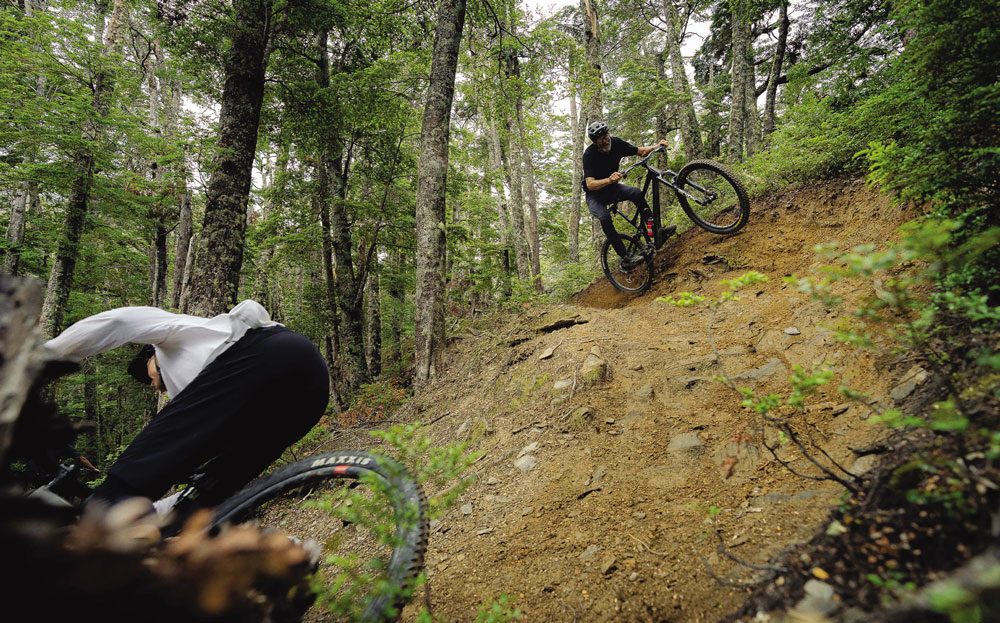
“THAT’S ALL VERY WELL A GOOD BUT WHAT HAPPENS IF I CRASH AND ABSOLUTELY SMASH IT INTO A ROCK OR SOMETHING AND MANAGE TO BEND IT?”. WELL YES. SHIT DOES HAPPEN.
We rode back to town and into Vertigo Bikes for Chris to give us the full tech run down on the product and how it works. The new system is designed to work on bikes that use a SRAM UDH hanger interface. A couple of years ago, SRAM brought out the UDH (universe derailleur hanger). The purpose of that was to create a better derailleur hanger that bike brands could adopt. It was a standard that made sense and, slowly, more and more bike brands have been getting on board with the standard. It was a solid move forward for the bike industry. This new AXS system builds on top of that: the hanger is replaced by a direct mount clevis system to the frame. In doing this, you massively increase the stiffness and strength of the derailleur. It’s not just held by a single bolt to the hanger, instead, it mounts both sides of the frame.
When you induce the hub, frame and axle, it creates an interface that is incredibly stiff and really strong, so much so that you can put your bike on the ground, stand on the derailleur on one foot and get back on your bike, ride away and the shifting will still be perfect. That’s not possible on a normal hanger set-up – something will bend. I had my doubts about it until Chris showed us. It was super impressive.
The derailleur keeps the override clutch system that allows the mech to move out of the way when it’s stuck by an object. It’s fantastic, and something that seems to get used regularly on my current GX AXS. It has saved my hanger from getting bent so many times and I’ve never needing to straighten it like I would have with a normal cable set up. The clevis mount combined with the override clutch ensures you have a system that should, in theory, be very hard to put out of tune. It’s just a more reliable system; more pierce gear shifting, and a better experience on the trail.
SRAM has introduced other technology to these groupsets: flat-top chains that come from their road bike groupset. These increase efficiency and durability while looking flipping awesome. X Sync can now be seen on the cassette, improving the shifting and chain reaction. It really lets you shift under load without the worry of skipping gears. I’d imagine it also helps the durability of the cassette. The recent SRAM x Dome cassettes have an incredible lifespan if you replace the chain regularly. I think these new ones will blow them out of the water as long as you keep up-to-date on replacing the chain when it’s worn.

The smart engineers at SRAM Germany really went to town on this. They have gone over everything with a fine-tooth comb. Chris said that they looked at all the warranty data collected over the past 10 years, and tried to eliminate as many of the issues as they could.
The way they did was by redesigning the whole system and imagining a new way of doing things. The clevis mount gave the ability to produce a far superior product and gave the engineers more ability to optimise every last bit. There are so many little things they have done that just make it a joy to use, such as the slight bend in the derailleur cage. It looks like it has been bent on the trail but, in actual fact, it’s meant to be like that. It helps keep the pulley chain interface better aligned when in the extreme ends of the cassette. There are two different modes to set the cage to, depending on the chainstay length. The new magic jockey wheel, that features on the XX1 and XX1sl models, ensures it will still spin even if an object gets stuck in there.
As well as all of this, set up has become easier than ever before. I’m not going to go into the whole way you go about it – the SRAM technical manuals have that all dialed and are a great source of information. “We gave this product out to some of our racers this year, on the EWS, and the mechanics keep overthinking the setting up of the system,” explains Chris. “It can’t be this easy, they keep telling me.” Easier set-up leads to fewer problems and fewer tuning errors from the get-go.
Now, I imagine that you’re thinking, ‘that’s all well and good, but what happens if I crash and absolutely smash it into a rock and manage to bend it?’. Well, shit does happen and, in that case, on a normal hanger mech situation, both of them would probably be a full write-off and due for the bin. In the case of this new system, however, I’d be very surprised if you could bend the clevis. It is really that strong and stiff. The good news is that the rest of the derailleurs are rebuildable. If you do damage a part, it will most likely be replaceable. You can remove the cage without using any tools. A simple little tap while unscrewing the cage will loosen it up. The tension spring and clutch are now built into the cage.

Servicing and cleaning these parts is super easy and something that can be done in no time at all. The protection covers on the B-knuckle and outer link ensures they are fully replaceable, or upgradeable to the XX skid plate. Is your mech looking a bit scratched up and tired after a year of use and abuse? Simply slap some new ones on and it will look brand new. I’m really behind this, I love it when brands make their products rebuildable and serviceable – products they want to see being used for years and years, products you can fix rather than just replace. It’s the way our industry should be heading instead of adding to a throwaway society just because one tiny part breaks or wears out that’s not replaceable.
The next day we were up and out, bright and early again. Straight back up Skyline access road then straight up the Ben Lomond walking track. Now, this is a walking track, but there must have been something in the crew coffee that morning because they pedaled up the whole thing. I’ll say it again: absolute savages this lot. It’s pretty relentless the whole way, just a hard going grind, but it rewards you with breathtaking views once you reach the Ben Lomond saddle. There was now 1000m of vertical descent ahead of us, back down to Queenstown. What a treat to be had. We hopped onto Upper Missing Link and stopped at the rock feature near the top. There, I had this idea for a photo I wanted to shoot. Everyone had a run-through, wall riding on the rock, and I got what I wanted. Chris pushed back up to hit it again. He came into the rock at a weird angle, going straight into it; next thing he extended his bike up over vertical and foot planted on the rock. Everyone was freaking out. It was so unreal! There had been a lot of BMX chat on the way up and I guess Chris was feeling inspired. I didn’t think a foot plant on that rock was possible. Next, Dan and Andrew started giving it a go. Popping up high before planting the foot, with the bike basically upside down. It was mind-bending. If they got the foot placement wrong, it would have been a good fall down the other side. Dan and Andrew just shut the rock down. Amazing stuff.
We continued down Upper Missing Link, weaving and dancing our way along the ridgeline, the narrow singletrack snaking through rocks and tussocks. From there, we headed down what you could argue is one of the best trails in New Zealand. I’m not going to tell you where it is or what it’s called – if you know, you know. It’s an absolute gem of a trail. A true mix of everything. Three trails in one – flowing, flat-out beech forest and dark turny pines to Val de Sol-like rock gardens. It’s got it all. As you hammer along the beech forest section, you’re treated to huge compression and little gaps. Flat out straights into tight turns. Cornflakes cover the track and hide the roots below. The new brakes really started to show their improvement over the old ones. The power seemed to have increased, the lighter lever feel was a welcome addition, easing the arm pump on this long run. The classic SRAM modulation was still there, offering heaps of control.
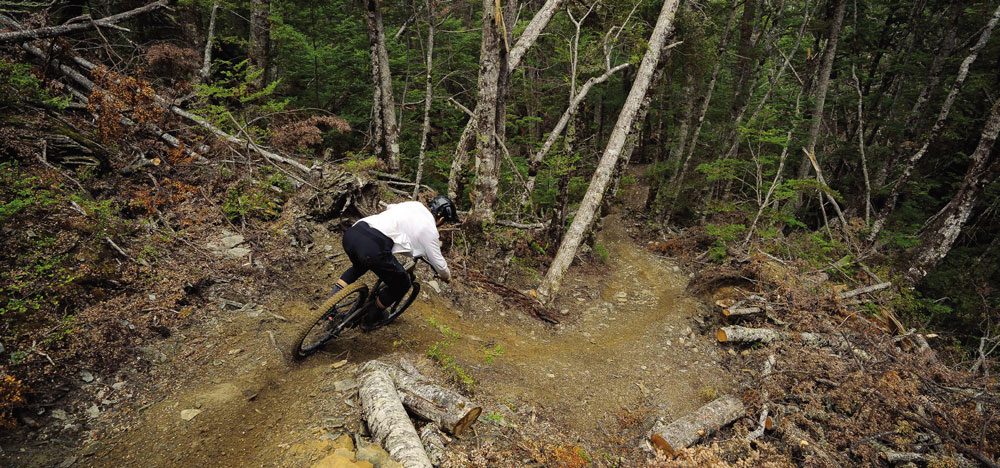
Once you finish the beech part of this trail, you hit the dark pine at what feels like warp speed. Your eyes don’t have long to adjust to the light conditions; turns come up fast, a couple of lefts and rights before coming into a rock roll feature. From there, you head through a small slither of Sycamores, lighting the place up in green haze. The dirt in this section is treacherous in the wet, almost like riding on ice. Finally, you end up with what I imagine a fresh, slightly tamer version of Val de Sol would feel like: deep loam and lots of rocks. I was barreling through this section and smoked the derailleur into something. The sound was horrendous. In my head, I was thinking, ‘ahh, well that’s fucked then’. I didn’t stop though, and continued on to the bottom of the trail. To my absolute amazement, it was fine. Although it sure looked like it had been hit – there were scratches, a big chunk of material missing and rock debris – the shifting was still absolutely perfect. If this was any other system, this would not have been the case. Really impressive.
You know where this ends. It’s the end of the ride, we’re hungry and thirsty. Only one place to go then – back to Atlas. We cheers-ed to a fantastic weekend of riding over some cold crisp pints. What a weekend. What amazing trails. What a tremendous crew. And – what a fantastic transmission! The new benchmark has been set.
SRAM has really knocked it out of the park on this. It’s hard to think how you can improve on what they have delivered here. It’s truly fantastic. It’s robust, designed from the ground up for mountain biking, and finally moving on from the hanger system that came from road bikes so many years ago. I’m a massive fan of the ability to be able to rebuild and replace parts on the derailleur. The shifting is light years ahead of the others. Will this groupset make you faster? You could argue that it will, but I don’t think that’s the right question to ask. Will this groupset enhance the experience of your ride? 100% it will – it’s an absolute joy to use; it makes you want to shift more and it’s easy to set up. It’s built to last; is robust and strong – you don’t really have to worry about it. Going off the reliability of the previous AXS stuff – which was in my opinion the best out there – this should be able to last an apocalypse. I’m not normally the sort of person to fork out for an expensive drive chain, instead, I normally run the cheapest I can get away with. Gen 1 of AXS changed my mind about that a bit, but this new stuff has 100% flipped my view. It’s something that’s worth saving up for and putting on your next bike. It’s something worth investing in. You won’t regret it.
Hat’s off to you SRAM. Well done.
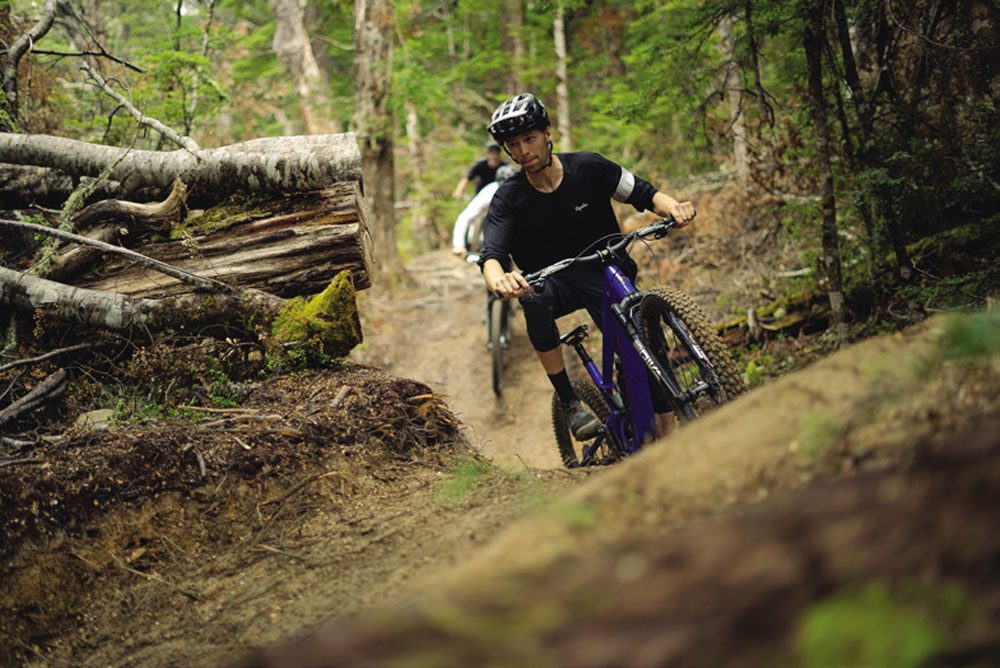
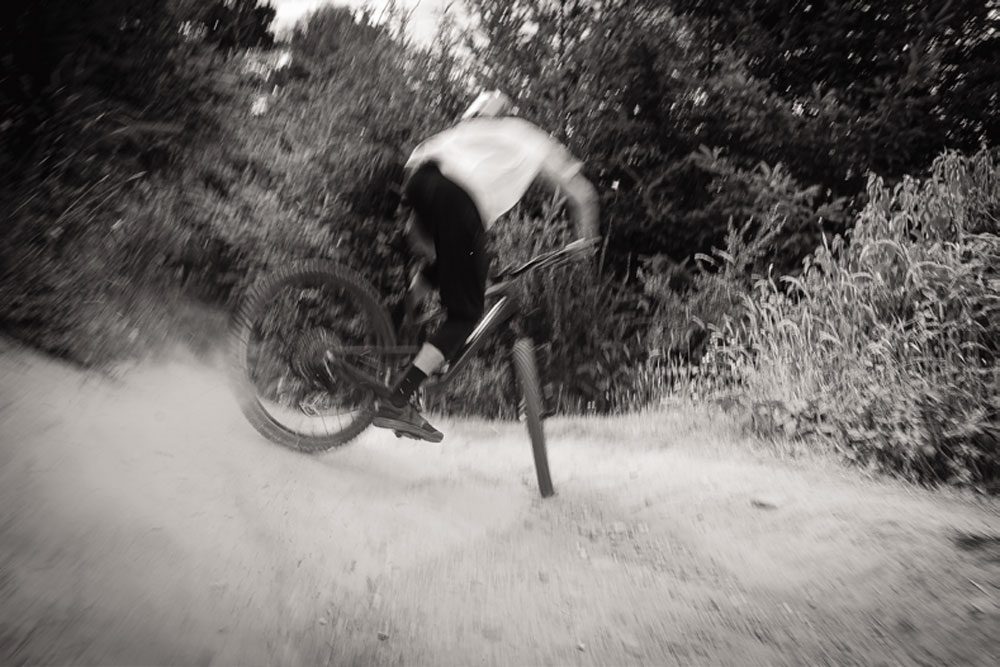

Double Everest
Words: Ben Hildred
Photography: Callum Wood
On February 26 this year, I set out to ride a double Everest: 17,698 vertical metres in a single bike ride, off-road, using a loop that incorporated a series of my favourite mountain bike trails in Queenstown. Double Everesting has been done before on road bikes, so I knew it was possible, but I wanted to know how it felt, where it would take me, and what it would be like scaling a mountain on-trail, and descending technical singletrack, time after time.
My lap started at the lake front and climbed up to the access road on Queenstown bike park. I’d then pedal the full access road, onto the ‘Beeched As’ singletrack, then follow the walking track up to Ben Lomond Saddle. Once at the saddle, I could descend, first on ‘Upper Missing Link’ – an alpine, rocky, tech singletrack – then on ‘Lower Missing Link’, a flowing, open trail that met the beech forest half way down before hooking onto ‘Creaky Winders’ which is more blue/black tech winding through the forest. When the trail met the creek, I’d turn left onto the Fernhill Loop trail until reaching ‘Hammys’, a flow trail to get to the midway clearing of the bike park. At midway I’d drop into ‘Thundergoat’ before taking ‘KY’, a steeper chute line, finishing off with ‘Trouser Snake’ – everyone’s favourite black tech pinch to meet the road and the bottom of the bike park.
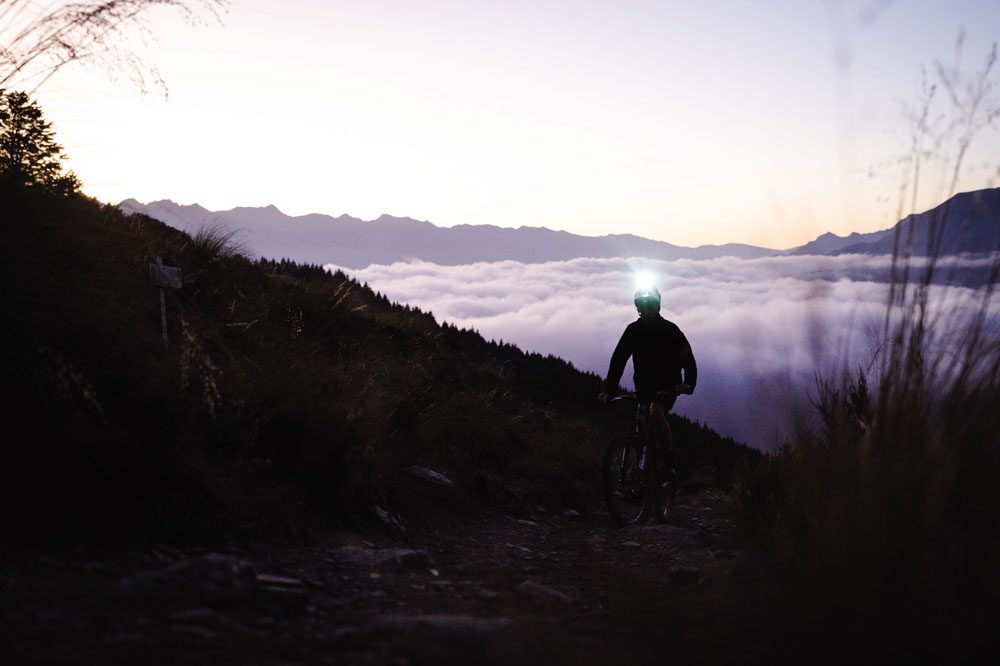

After sixty plus hours of sleep deprived pedal of sleep deprived pedal turning, events felt a turning, events felt a little less cohesive and little less cohesive and the world nonuniform.
After sixty plus hours of sleep deprived pedal turning, events felt a little less cohesive and the world nonuniform; laps were completely forgotten, time didn’t pass the same, my bike moved differently beneath me, and body parts became numb, cold, and alien. Walking was novel and eating was the only chore that hindered the new norm – making circles with my feet.
12:00am, February 26th. Wakatipu lake front; a navy sky diluted by street lights. Calm. About to pedal more than I ever have. Bike ride begins.
1:10am. First ascent complete, Ben Lomond saddle. The distant constellation of Queenstown feels incandescent, a familiar glow in comparison to the Milky Way, floating and exposed above. Some 1000 metres of elevation every lap. First lap far too fast, overly excited. Headlight exposes the descent; black singletrack snakes a dark bottomless ridge-line, insisting pensive focus.
6:58am. Daylight emerges over the silhouetted Remarkables, the solid black gate generously sur- rendering first light to Queenstown. Far enough into lap four to be above the cloud, an inversion making the repetition of pedalling feel accomplished so early on. First three laps a sub two hour loop, productive yet unsustainable, remembering to eat little and often. Positive, full and eager.
1:10AM The distant constellation of Queenstown feels incandescent.
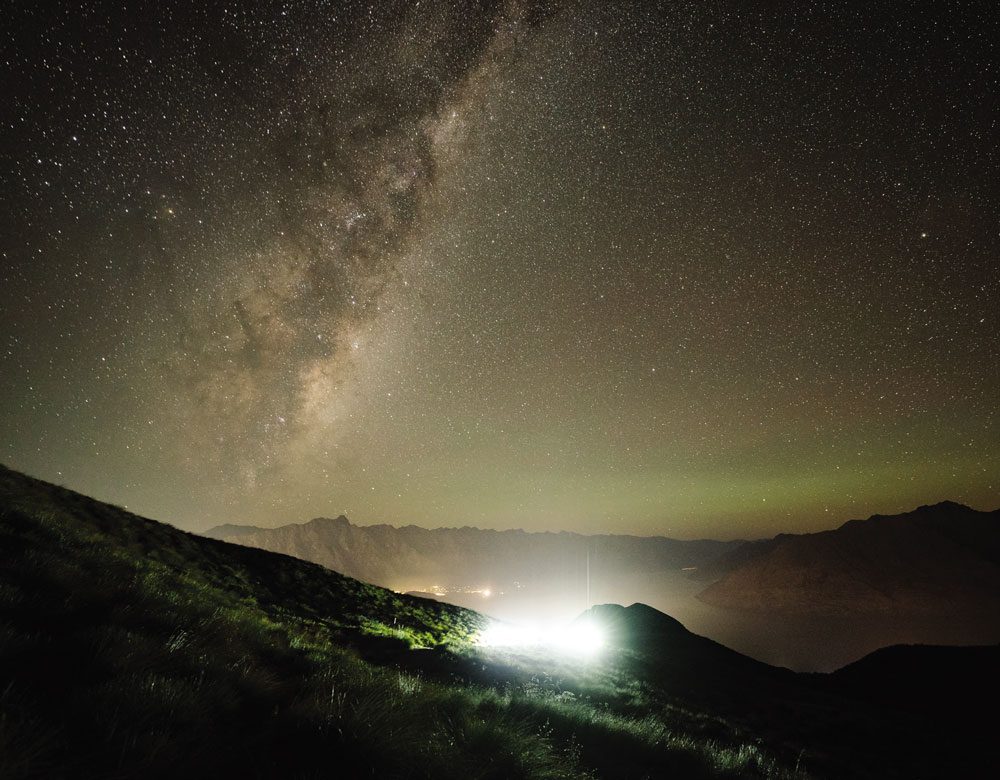
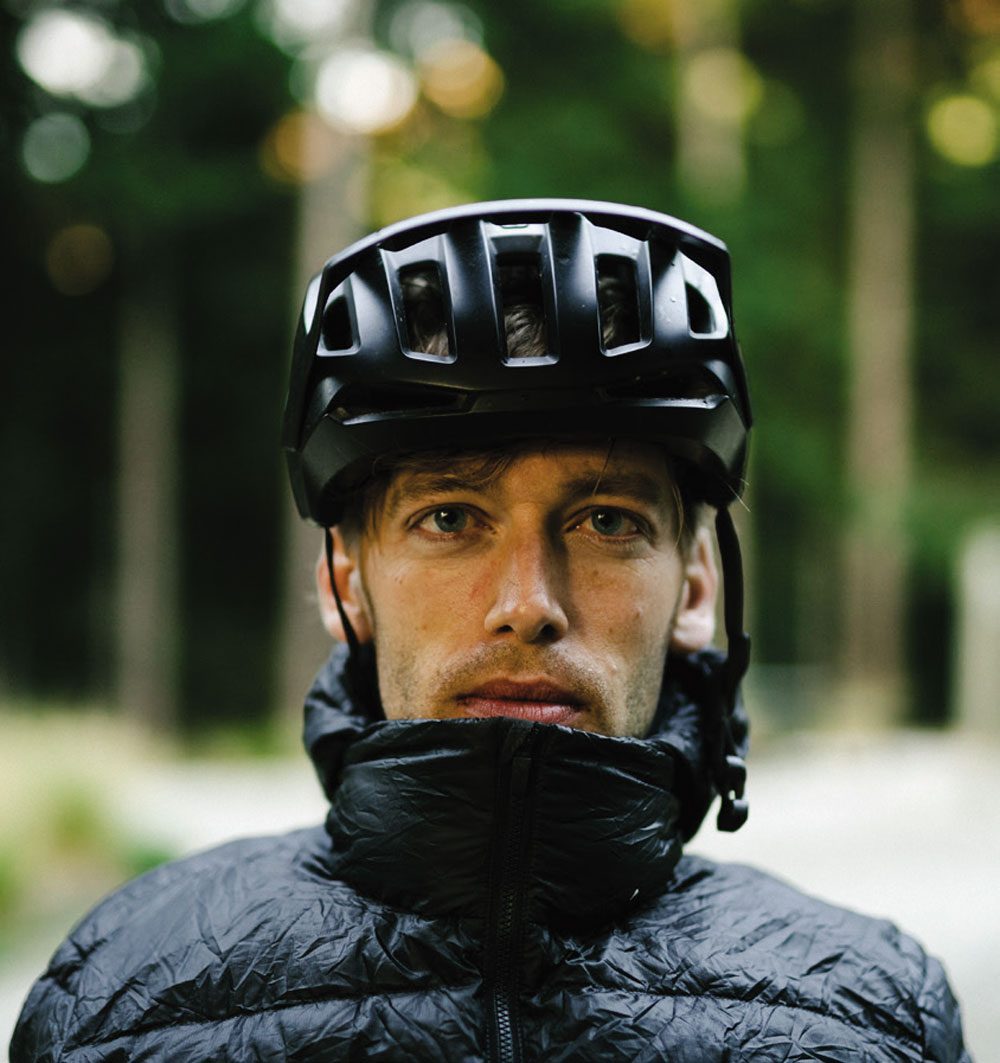
1:37pm. Midday. Progress has settled down to a comfortable churn of familiar and trusting trail. I’m 6100m elevation in. Tried eating one of my pre- made marmite, peanut butter and spinach wraps – swallowing that cocktail of stodge the hardest task so far. Still, onwards and upwards. Grateful for the necessary lathering of suncream needed for the hour of alpine exposure coming up, beautiful weather. Thoughtful and focused.
5:11pm. Soon to tick over 8000 metres. Stopping in the last patch of beech forest before the now relentless exposure of the loops summit, Ben Lomond saddle. Looking for my hidden backpack stashed in the bush, vital for the last push and descent. Chocker with food, water, smoothie and essen- tials. It had been taken. Later found to be a good Samaritan naively handing in lost property. Visibly, mildly distressed I was approached by a young family with a backpack baby, insisting wildly generous help. Lap fuelled by wildberry baby food. Thankful and persistent.
7:36pm. Top of lap nine, a big crew of good sorts see me over the first Everest, savouring the energy, anticipating looming darkness. The shadow of Ben Lomond slowly swallowing up my trail. Hasty to avoid the chill, we descended straight away in a train of hoots and hollers, harnessing everyone’s stoke to get me up here another eight times. Grateful and brimming. Onto new, untrod territory.
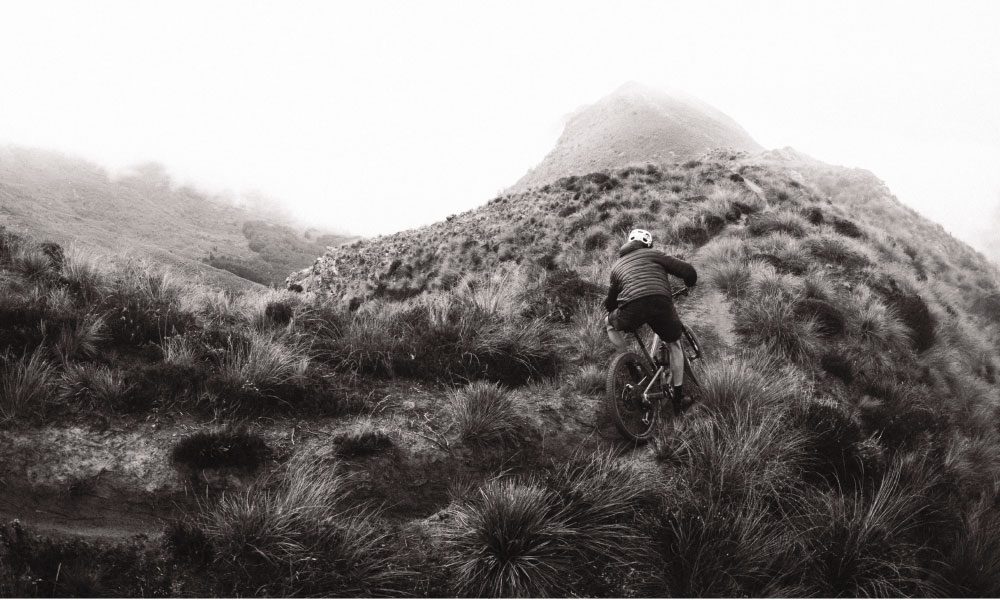
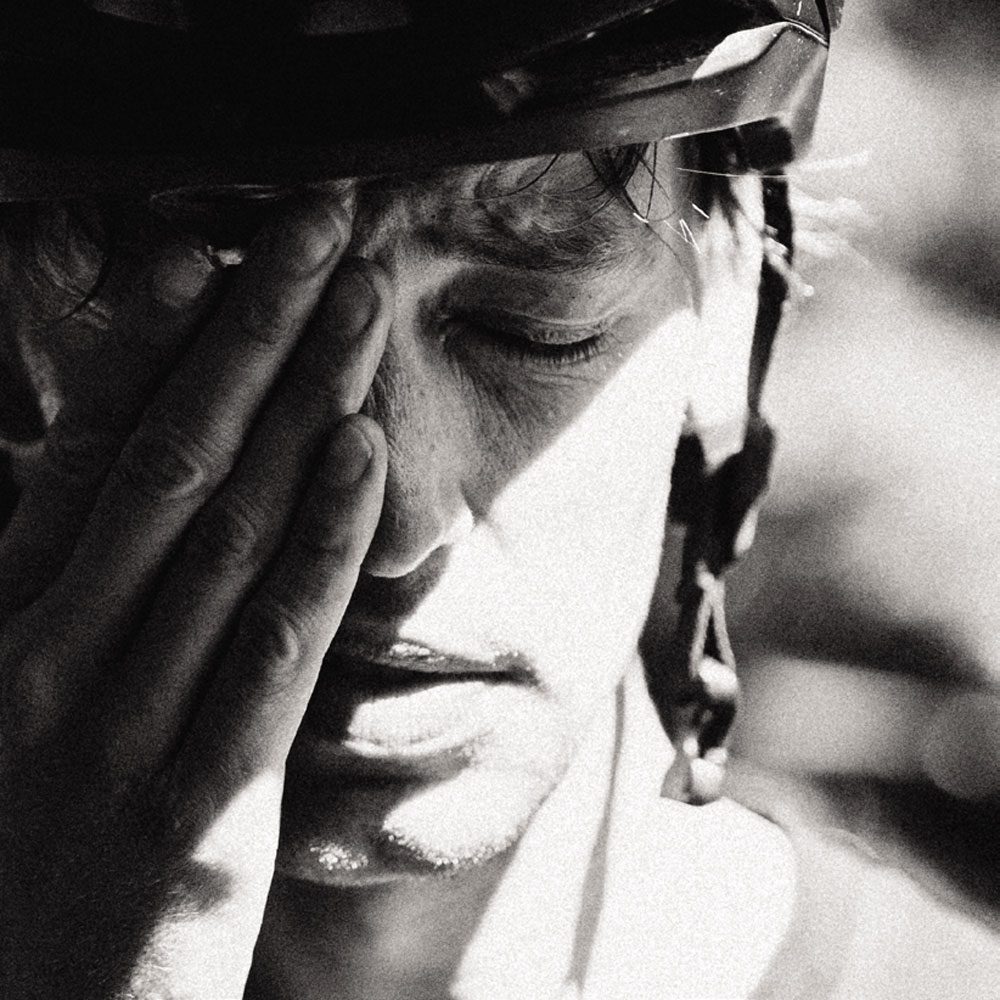
Distance: 277.56 km
Moving Time: 41:28:53
Avg Speed: 8.3 km/h
Elevation Gain: 17,925 m
Avg Power: 198 W
Calories: 26,531 Cal
Bike: Santa Cruz Tallboy
1:10am. The second night. Soon to turn over 10,000 vertical metres, willing myself to carry on. The short sighted dark compounded with a distinct and concerning drop in temperature, battling the natural circadian urge to sleep. First attempt to have a nap, I set an alarm for fifteen minutes. It went off instantly. With phone still in my hand, unsure whether I’d slept, whether my thoughts had been dreams. I’d push to the top in great company, words were few and far between, all energy used to go forward. The mountains now sleeping, shadows framing another feast of stars. Numb, though now very invested.
Two, three, four? Maybe five? The next couple of laps I cannot recollect, somehow I’d chalked up another two thousand metres with two full loops. The only thing I remember was being laid in dry, dead pine off the side of the trail where I’d fallen. Somehow, on the climb, I’d taken a tumble. Still unsure whether it was a handlebar nap or poor coordination. Thankfully unscathed, and pulled back up to safety, we carried on. I’m indebted to Jamie and Annie and their company that entire night; their selfless, duty-bound help got me through.
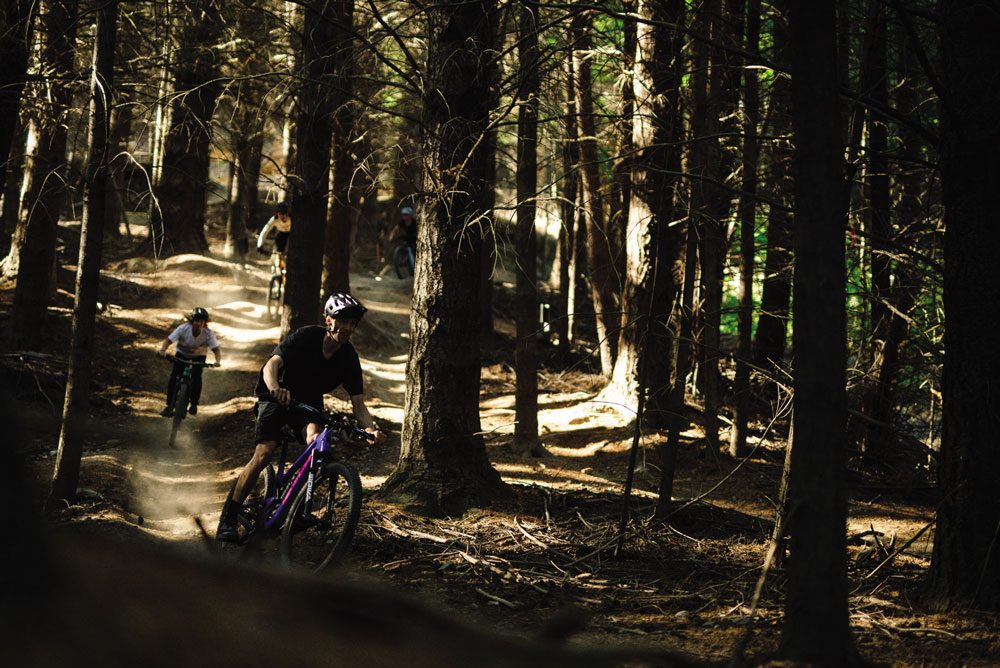
5:11PM Thankful and persistent.
After that minor ordeal, roughly five in the morning, we were gifted something so superlative it got me brimming with joy. Our mate, Steve, met us halfway up a mountain. Still dark, his head torch illuminated the steam rising from three ready-made Yorkshire teas, sat trailside. The sun was on its way, the metres were disappearing, my body was waking up and it tasted like victory. Relieved and excited for first light.
7:30am. Not out the woods yet. I would say I know the Skyline access road better than anyone, but, majorly sleep deprived, this well-trod road threw a few curve balls. In the early hours of light, just before mid-way and in the nick of time, I spotted a deep, clear water moat, impassable and flowing over the road. I was hallucinating.
Grabbing a handful of brake, I almost came to a stop before it disappeared. I made a more considered effort to keep my head high and look ahead, setting small goals to pedal towards and keep my mind occupied and focused. Luckily, I had my head held up, as no sooner had the moat disappeared a series of unevenly placed wooden door frames jumped out at me. With my peripheral vision absent, it took my upmost attention to swerve and weave through them. The oddest experience and the last of that carry on for the remainder of the ride. Confused and bemused we rode on.
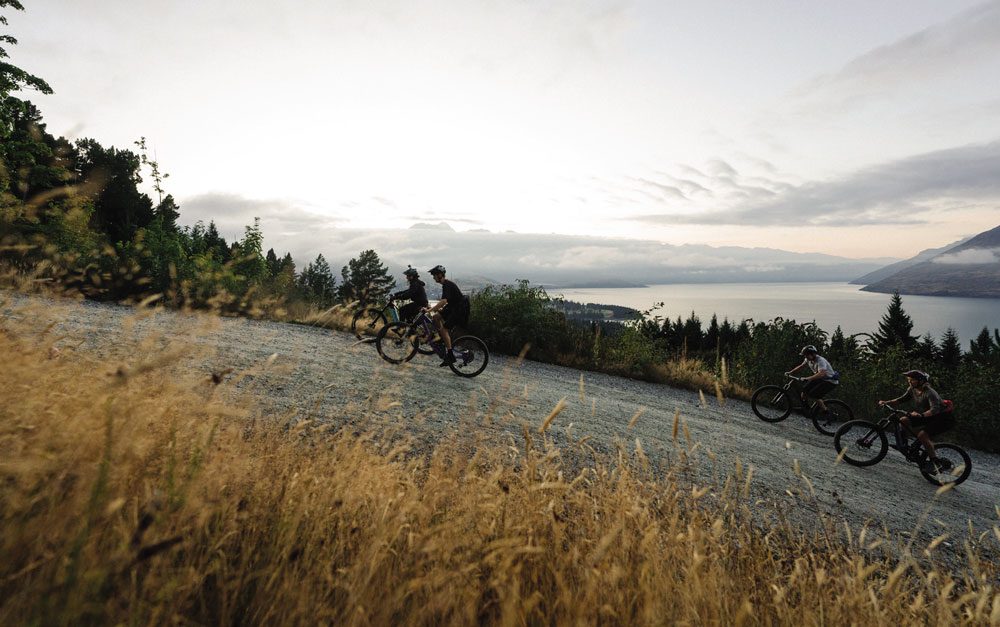
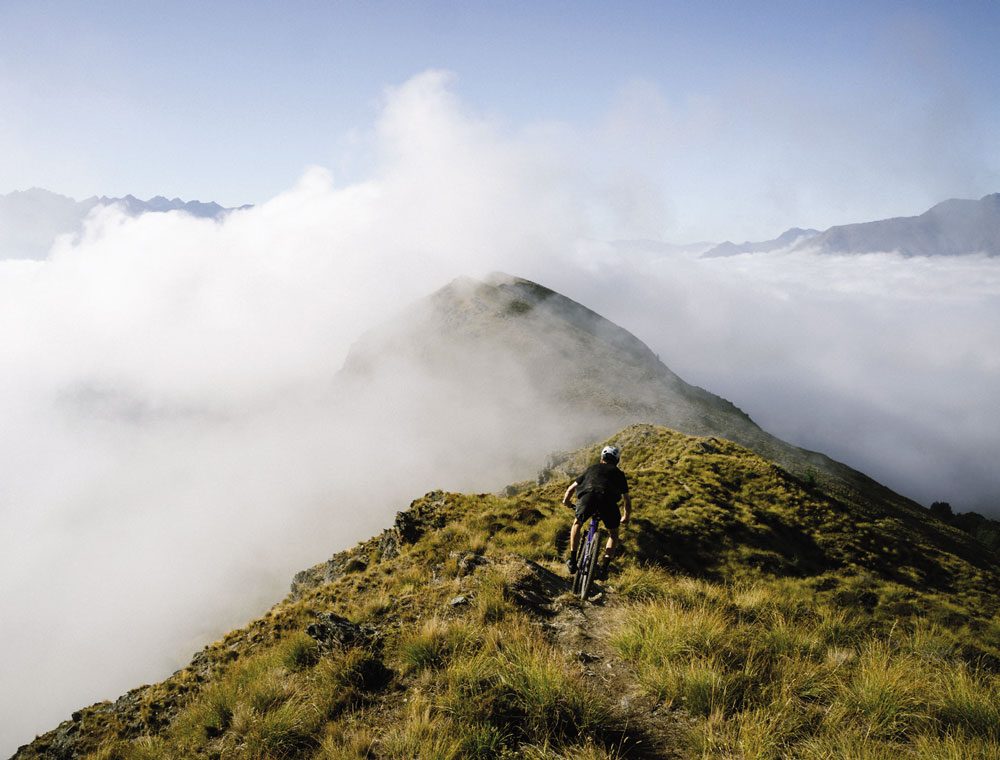
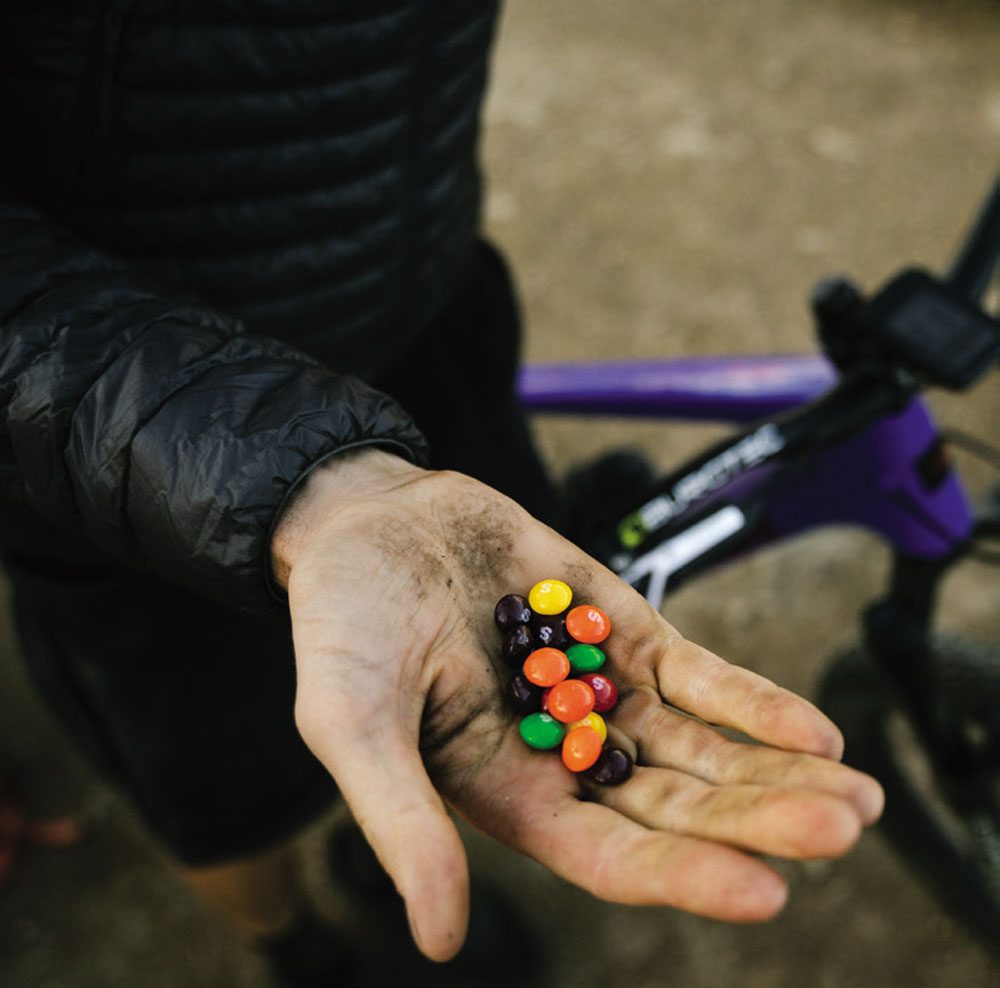
Visibly, mildly distressed I was approached by aI was approached by a young family with ayoung family with a backpack baby, insistingbackpack baby, insisting wildly generous help.
2:11pm. After first light’s free spirited bohemian lap, the morning felt rather uneventful; chugging along the tracks of my route like a steady and conservative diesel engine. Time soon passed, as did the metres. Almost 14,000 metres in, I got to midway, where I’d allow myself a rest and recoup. It was on this lap an uncomfortable and grounding pain made me feel very human and quite frail. Familiar with the occasional heart murmur, I knew this thud in my chest and erratic, offbeat rhythm should be okay, although it always makes you acutely and presently aware of your mortality. Conscious this could be an issue, I had a small Bluetooth device with me that takes ECG recordings. Held tight between my thumbs it came back with ‘atrial fibrillation’. I chose to rest a bit longer that lap before carrying on, back on task – some would say foolishly.
4:15pm. In charge of photography, and one of my consistent good sorts keeping company for this pedal, Callum noted I’d run out of water high up the climb and, without hesitation, slogged a 10 litre barrel of water up the mountain in his camera bag. What a champ, The sun was still blinding and aggressive. I’d been awake without any proper sleep for around 55 hours now, climbed over 15,000 metres and descended over 100km of mountain bike trails. I felt completely hollow, the bottom of the barrel had been scraped dry. It became very easy to distinguish between my physical, mental and emotional energy. In rhythm, I’d scoop into each energy source one at a time while the others did their best to recover. You could switch easily from a mindset of body, concentrating on making circles with your feet and pushing down past the ground, to a mindset of determination, trust and belief, always mindful to eject that energy reserve for another before any wavering internal apathy kicks in. It became a fragile juggling act – anyone who tried to help or support me during that period was met with someone quite silent and vacant, a shell of the person they had planned to see, but understanding – I hoped – that as grateful as I was, I didn’t want to see anyone for a short period as I couldn’t give them the gratitude and thanks they deserved for helping me out. Burnt out and dry, so close.
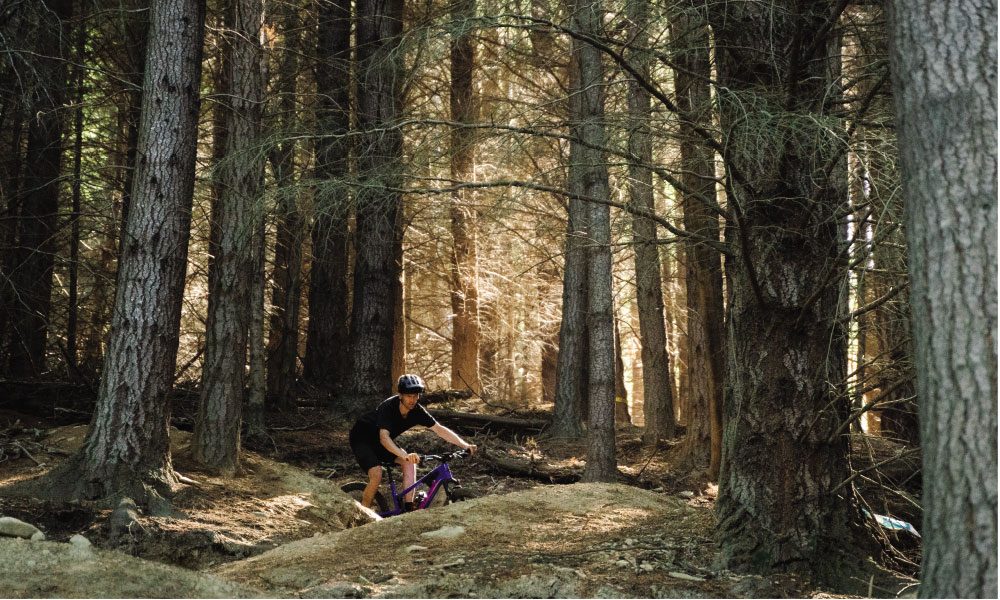
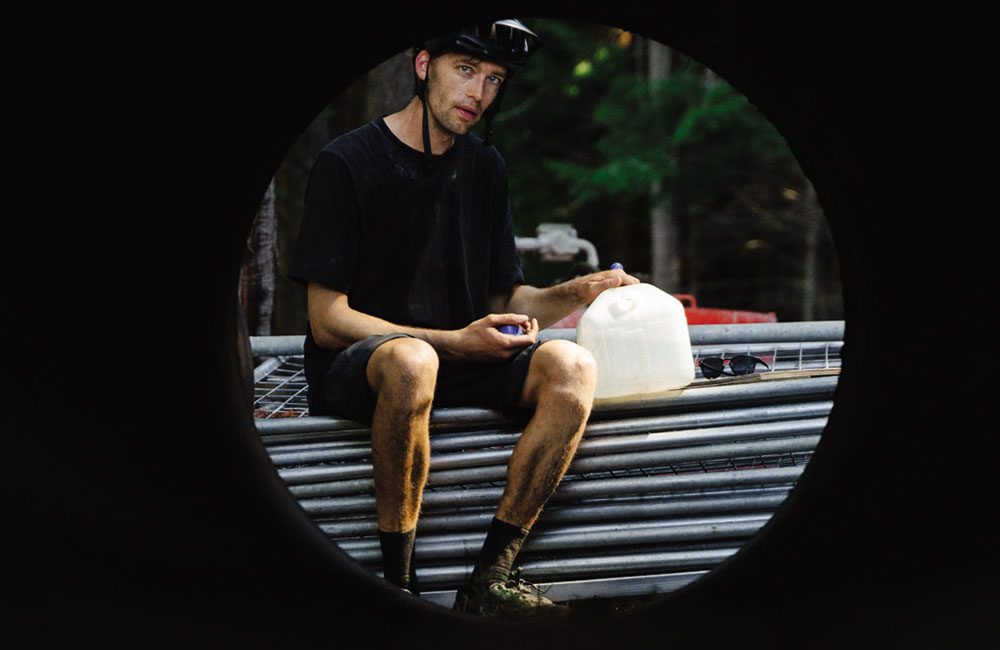
Grabbing a handful of brake, I almost came to a stop before it disappeared. I made a more considered effort to keep my head high and look ahead, setting small goals to pedal towards and keep my mind occupied and focused. Luckily, I had my head held up, as no sooner had the moat disappeared a series of unevenly placed wooden door frames jumped out at me. With my peripheral vision absent, it took my upmost attention to swerve and weave through them. The oddest experience and the last of that carry on for the remainder of the ride. Confused and bemused we rode on.
6:38pm. The bottom of the final full lap. A group of familiar, friendly faces greeted me there and the team grew as we climbed higher together. What a treat to have so much encouragement and help from the incredible community here in Queenstown. By the time we reached the summit, the Remarkables mountain range wore an red evening glow, and Ben Lomond above us sheltered the sun. Everything felt it was coming to an end. Sharing that last full climb with friends was extra special, many moments there are forever held in memory. I was 17,300 meters in and feeling my last ‘second’ wind as we all descended together. So grateful and appreciative.
9:10pm. The last push. I couldn’t close the loop off nice and neat at the top of the last full lap, so still had a few hundred metres to find. It was getting cold, fingers pained after that descent, determined not to go into a third night. Most of last lap’s crew were now invested and seeing it out until the end. Together we climbed, again. This time round, my focus was sharply squared at my cycling computer, watching the metres fall away, navigated by the sound of people talking around me, a comforting echolocation on a road I know all too well.
The last hundred metres never seemed to stop. By this time everyone wanted to know the score, nothing else made any sense.
Eventually, finally, at the end of the beech forest, I’d ticked over the double Everest. Pausing and uploading the ride data, I sat on a rock I’d used at a rest stop every lap. Unsure how to think or consider the bike ride, I felt underwhelmed and disappointed in my lack of enthusiasm or stoke, unable to show any joy or thanks to everyone who was there to share the moment, who made the effort to see it out. All I wanted to do was go home, shower and sleep. Maybe everyone was expecting an emotional spew of relief or elation, but all tanks were empty. It was done.
I’d like to thank Jonny Ashworth and Callum Wood for documenting the ride with video and photography, being there to help and witness it all. Annie Ford for being with me throughout and providing the upmost support – making sure I ate, drank and didn’t fall off – what a trooper. Jamie McKay, who always offers the most incredible company on the toughest days, unwavering, and went on to do an Everest of his own while riding with me, incredible! Thanks to everyone else who showed willing and came along for a pedal, it made the experience unforgettable. Thank you.
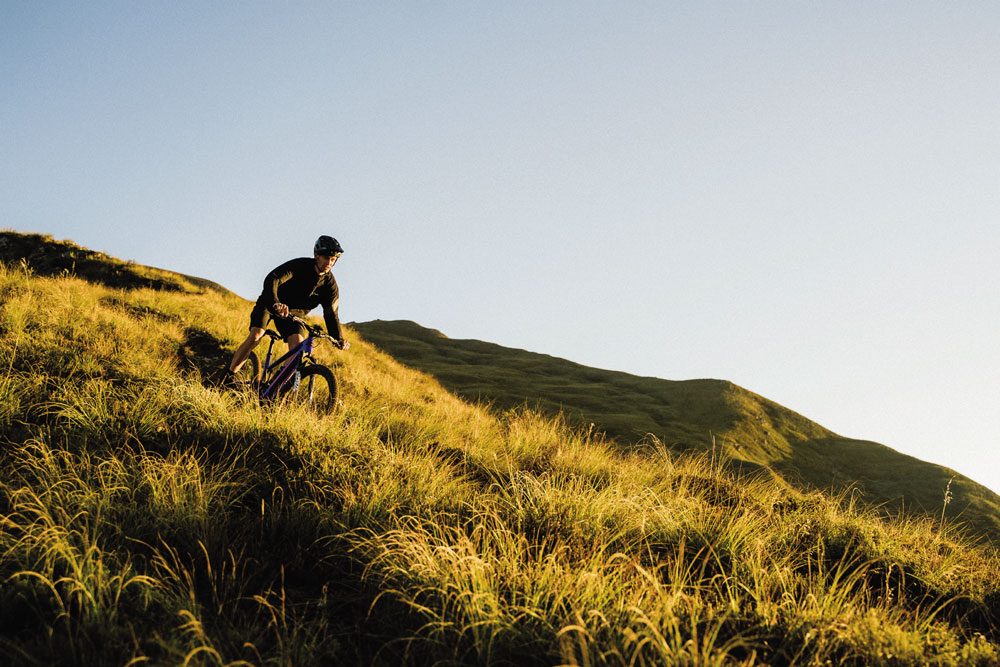
5:11PM It became very easy toIt became very easy to distinguish between my physical,distinguish between my physical, mental and emotional energy.mental and emotional energy.
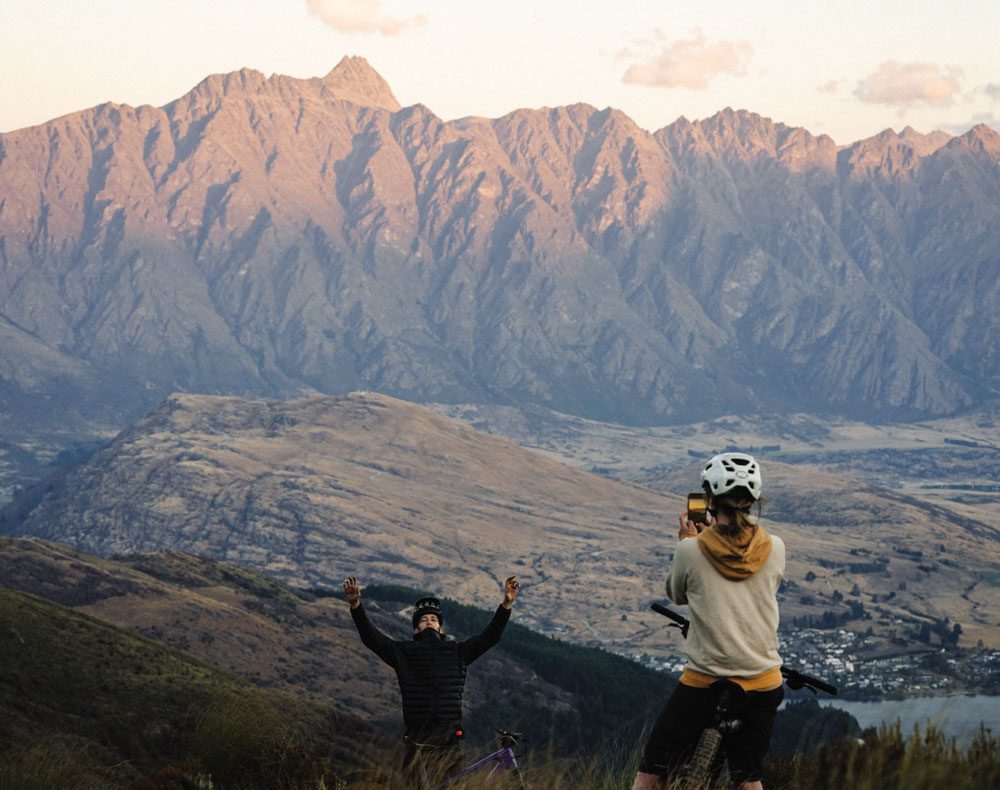
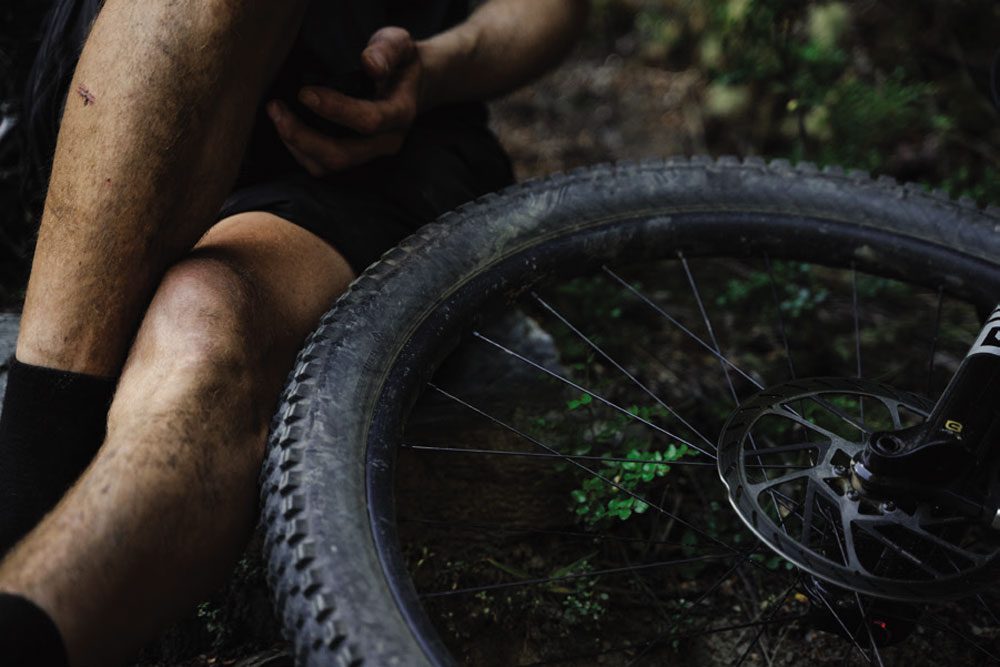
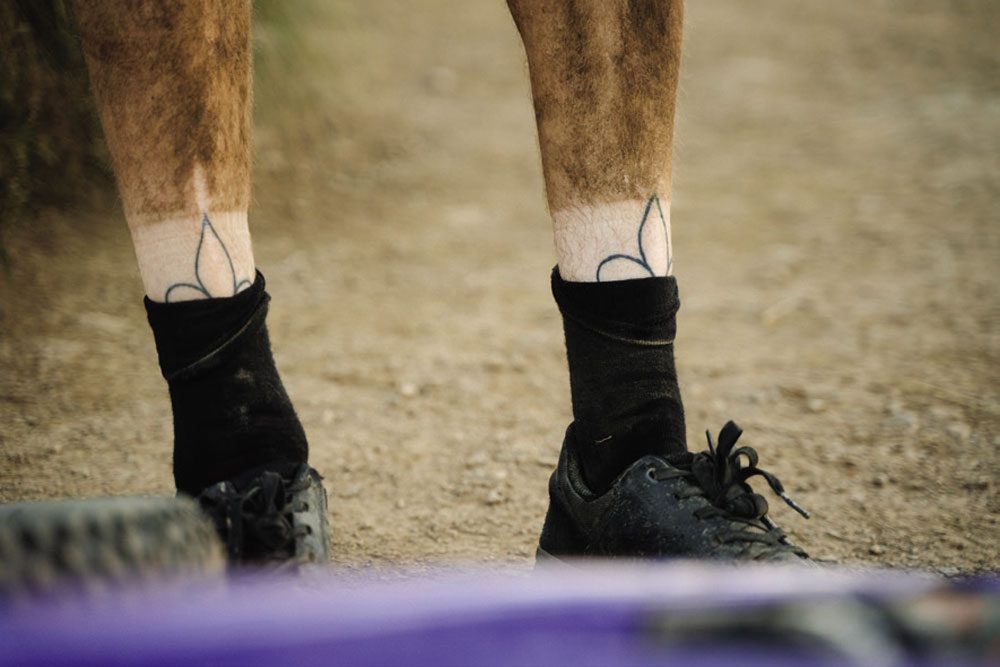
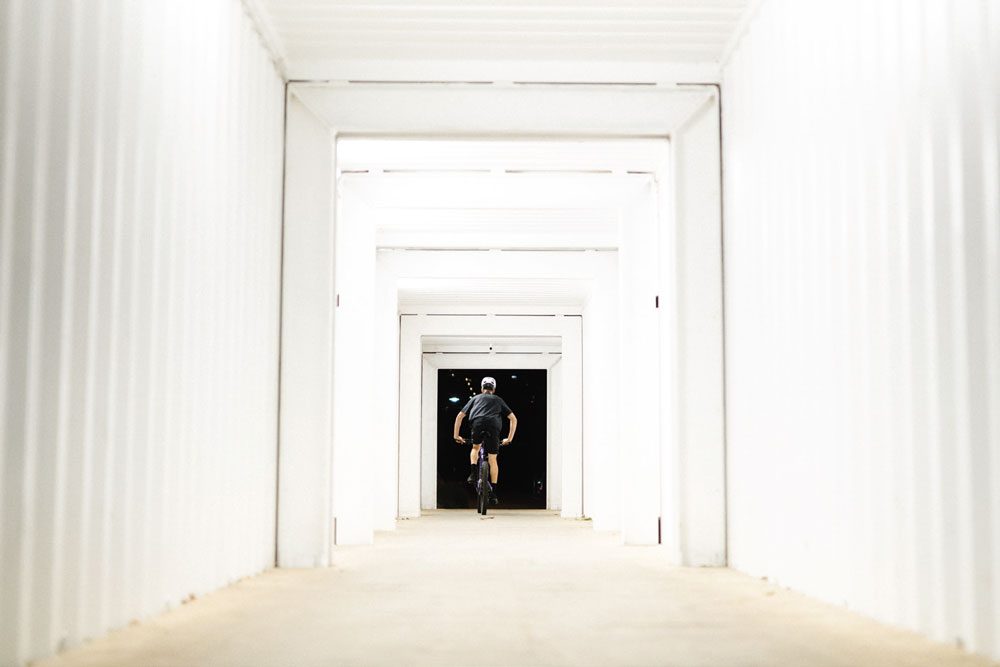
Thanks to everyone else who showed willing and came along for a pedal, it made the experience unforgettable. Thank you.
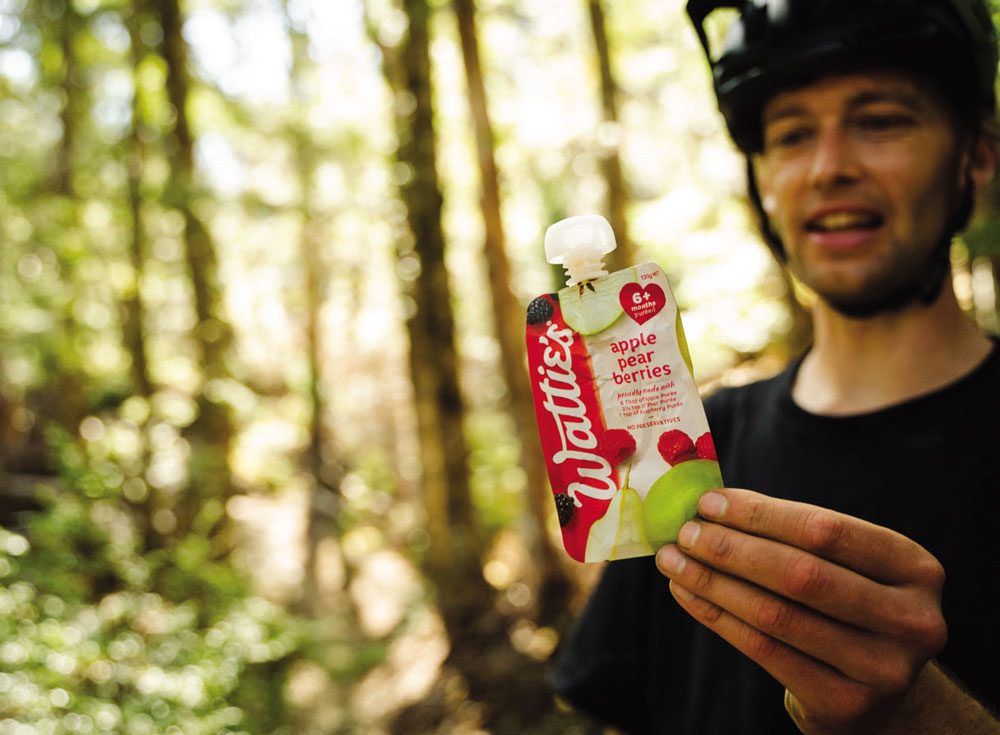
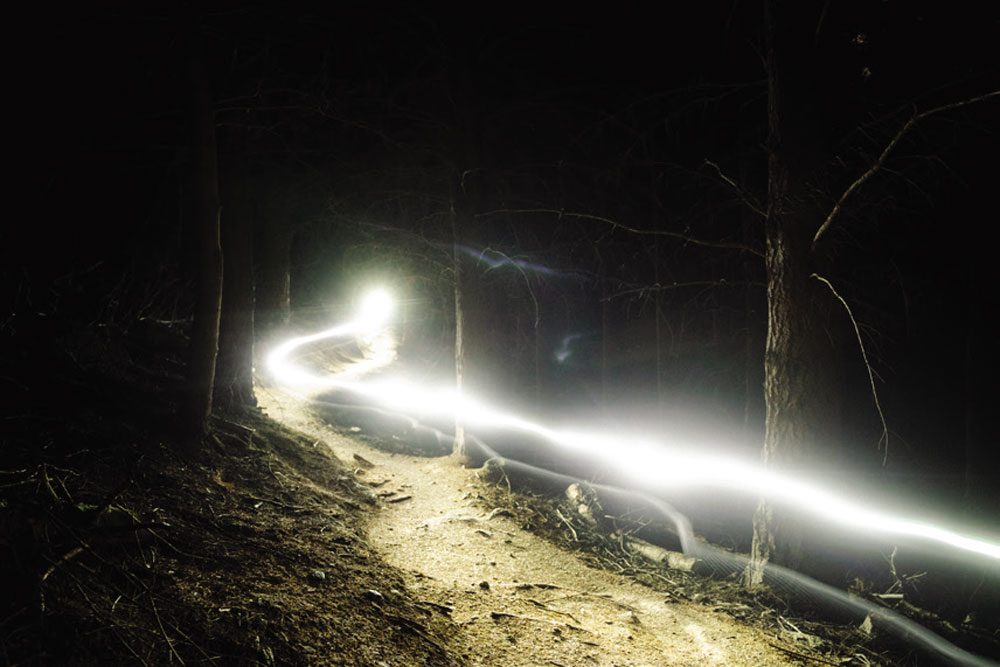
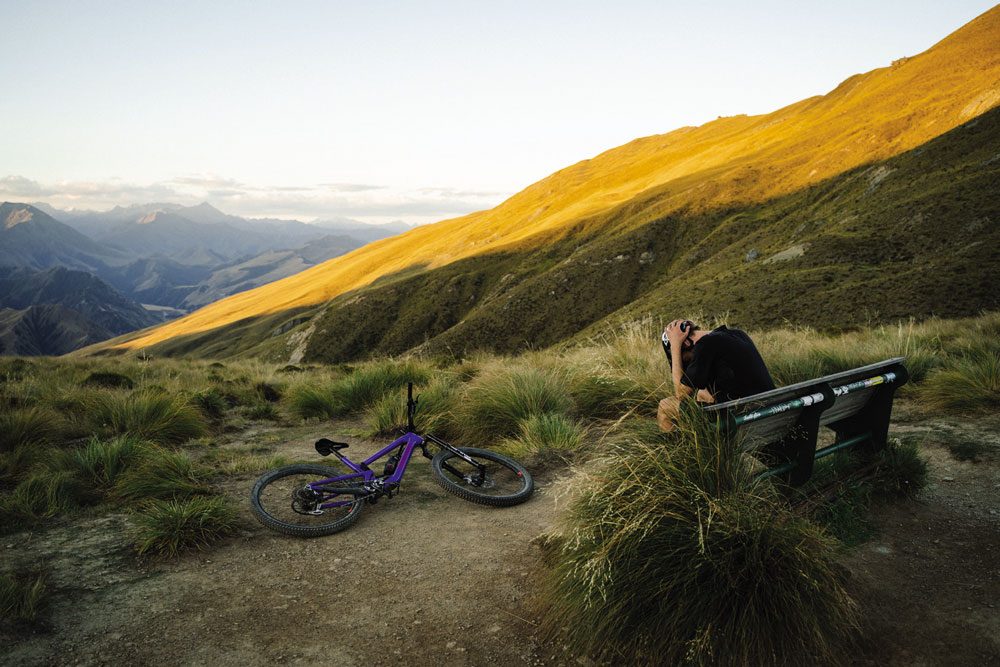
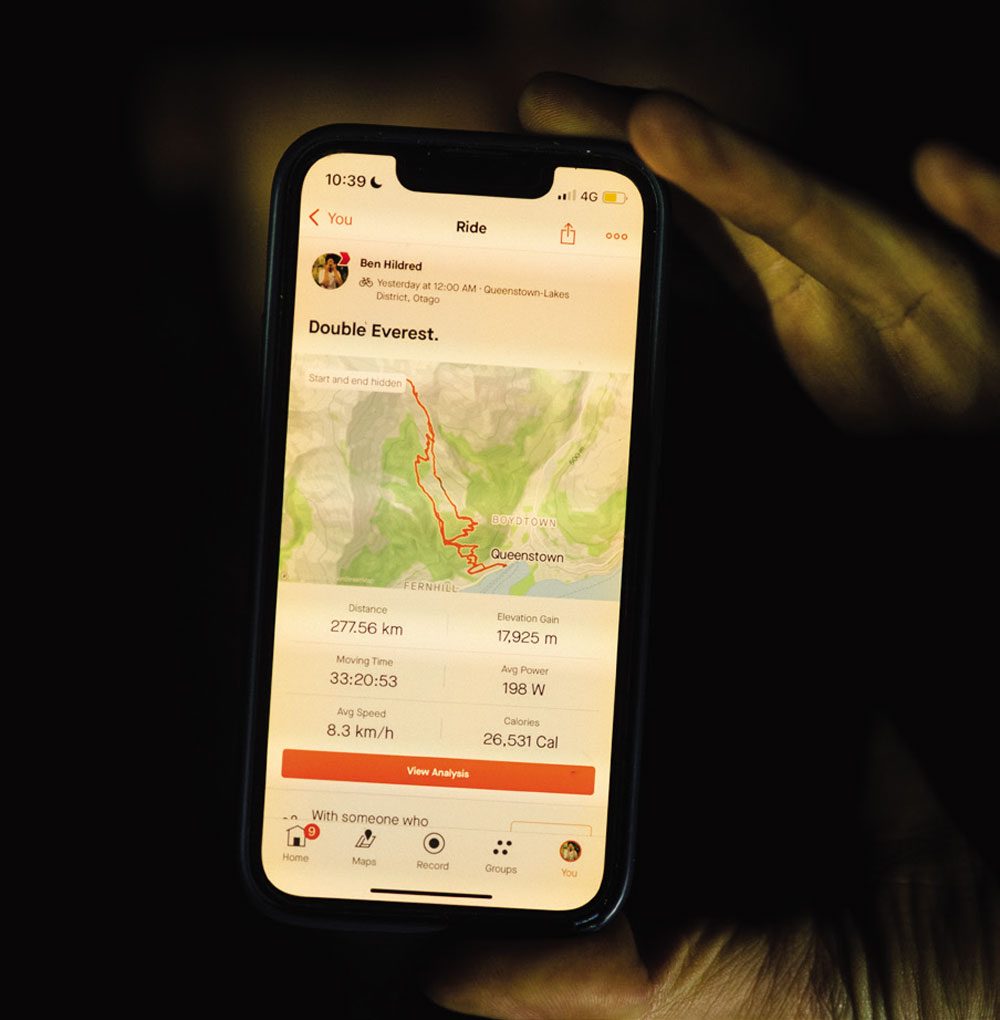

The Kitchen: Overnight Oats
Words: Liss Wallis
Photography: Liam Friary
Make the night before and enjoy for breakfast before or after your ride the following day.
Ingredients –
¾ cup rolled oats
1 tsp of cinnamon
1 Tbsp of chia seeds
1 Tbsp sliced almonds
½ cup frozen blueberries
or boysenberries
½ cup of milk – soy, almond, coconut or dairy – your choice
¼ cup water
1 serving of vanilla protein powder

Method –
-
- Add oats, cinnamon, chia seeds, almonds and half of the frozen berries (¼ cup) to a glass jar or Tupperware container.
-
- In a blender cup, add the remaining frozen berries, milk, water and protein powder and blend for 10 seconds.
-
- Pour the wet ingredients on top of the oat mixture and mix well.
-
- Store in fridge and enjoy the next day for breakfast. Top with any fruit, or peanut butter, if you wish.
Total time to make: 10 minutes. Oats will keep in the fridge for two days.

Location: Ōtautahi Christchurch
Words: Jordan Phipps
Photography: Cameron Mackenzie
Produced in partnership with Christchurch NZ
Ōtautahi Christchurch: a diverse and exciting city in the heart of New Zealand’s South Island, this is the gateway for adventurers and explorers alike.
The largest city in Te Waipounamu has grown from the incredible challenges Mother Nature threw the community in 2010. These days, a real buzz can be found on the city streets, although it remains an old city at heart, with many remnants of its gothic architecture still tucked away amongst the new. There’s not many cities that can claim the new, vibrant feeling Christchurch has; the city is now flush with a number of new shops, cafes, restaurants and watering holes. Areas like the Riverside Markets and The Terrace are lined with spots to check out and the rebuild has offered a ‘re-set and re-think’ into mobility and how people get around. Go down any street in the city and you’ll see pedestrian areas and cycle lanes along with a heap of cyclists using them. The city has always had a strong cycling culture but nowadays it seems more popular than ever.
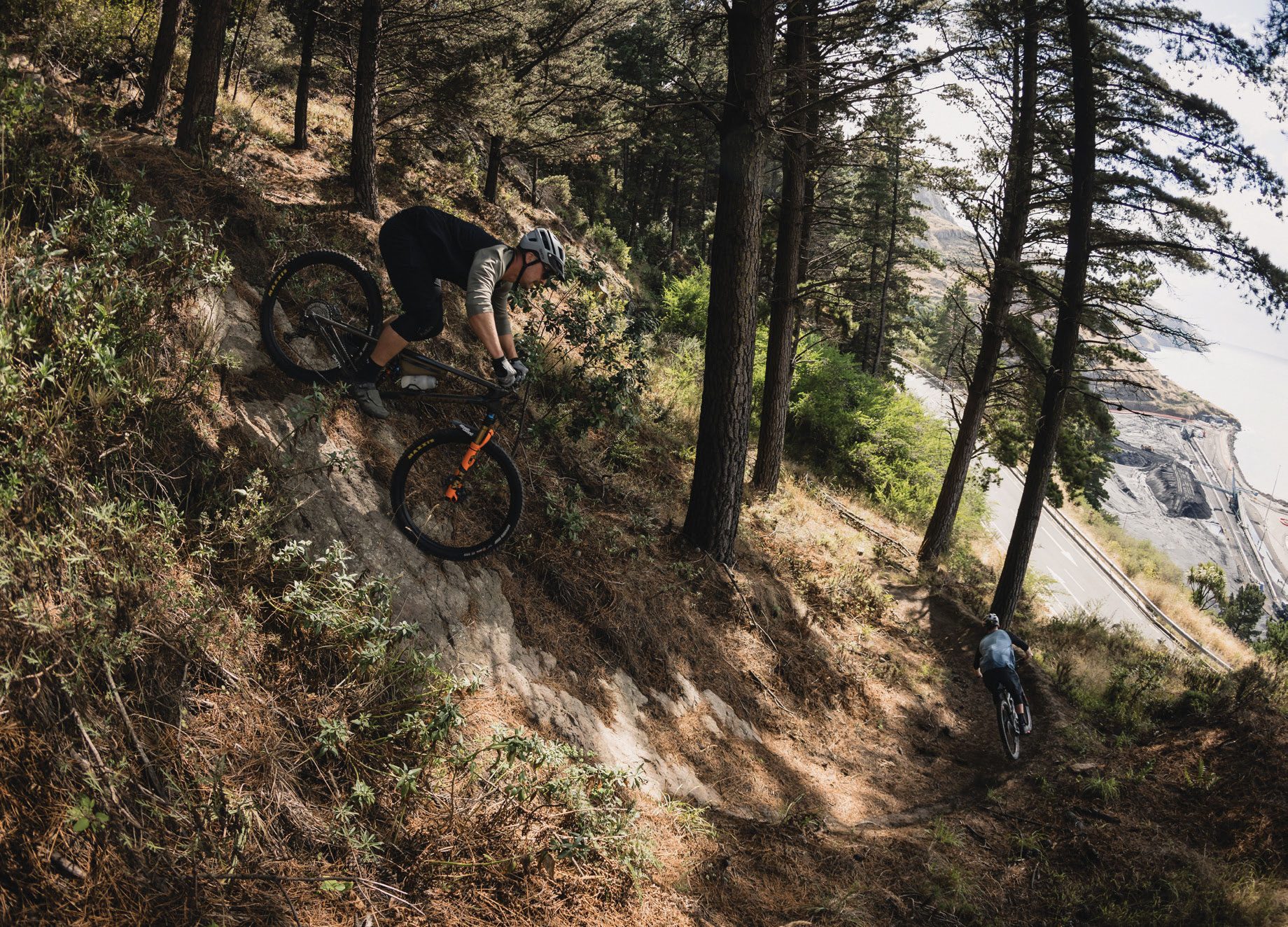
Ōtautahi exudes ‘great outdoors’ vibe and it’s clear to see why, with the white peaks of the Southern Alps standing tall, the rolling South Pacific Ocean to the east of the city and various other mountain ranges as far as the eye can see to the north. The city also has easy access to some of the best conservation and national parks, such as Craigieburn and Arthur’s Pass. Beyond that, there’s multiple options from the north, west and south. Closer to the centre, the Port Hills border the city and offer a plethora of outdoor activities. This is one of the main locations for mountain biking, with trails weaving across the city face. This, along with the addition of Christchurch Adventure Park, which opened back in 2016, make it very rider friendly, with trails from beginner to expert. The best part about the city is its proximity to the riding – you can get from the heart of town to the rolling tussocks of the Port Hills with just fifteen minutes of pedalling.
Ōtautahi blends city vibes with outdoor culture seamlessly. It’s got charm, character and so many choices of trails on its doorstep. Recently, we spent a long weekend exploring some of the best riding locations the city had to offer.
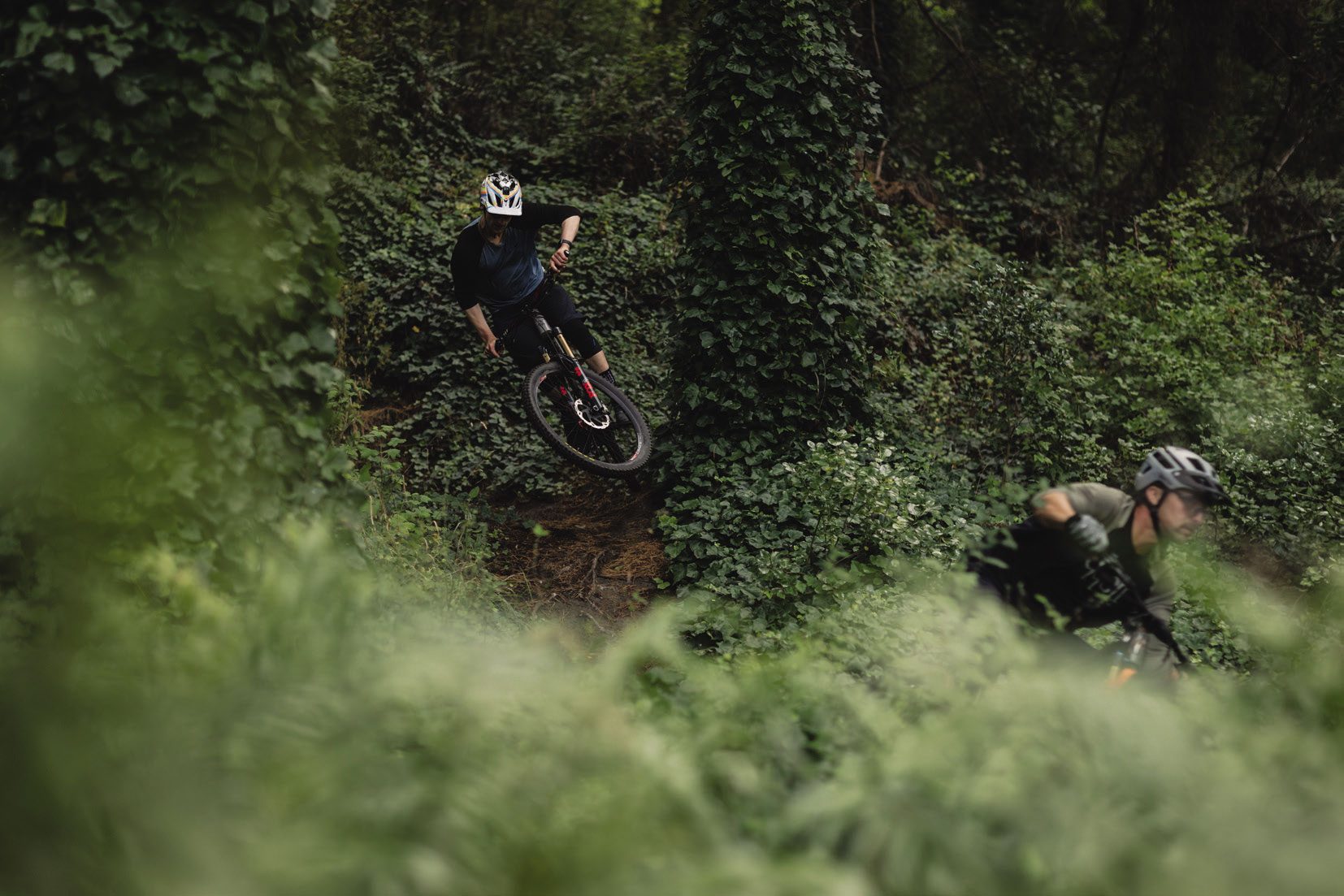
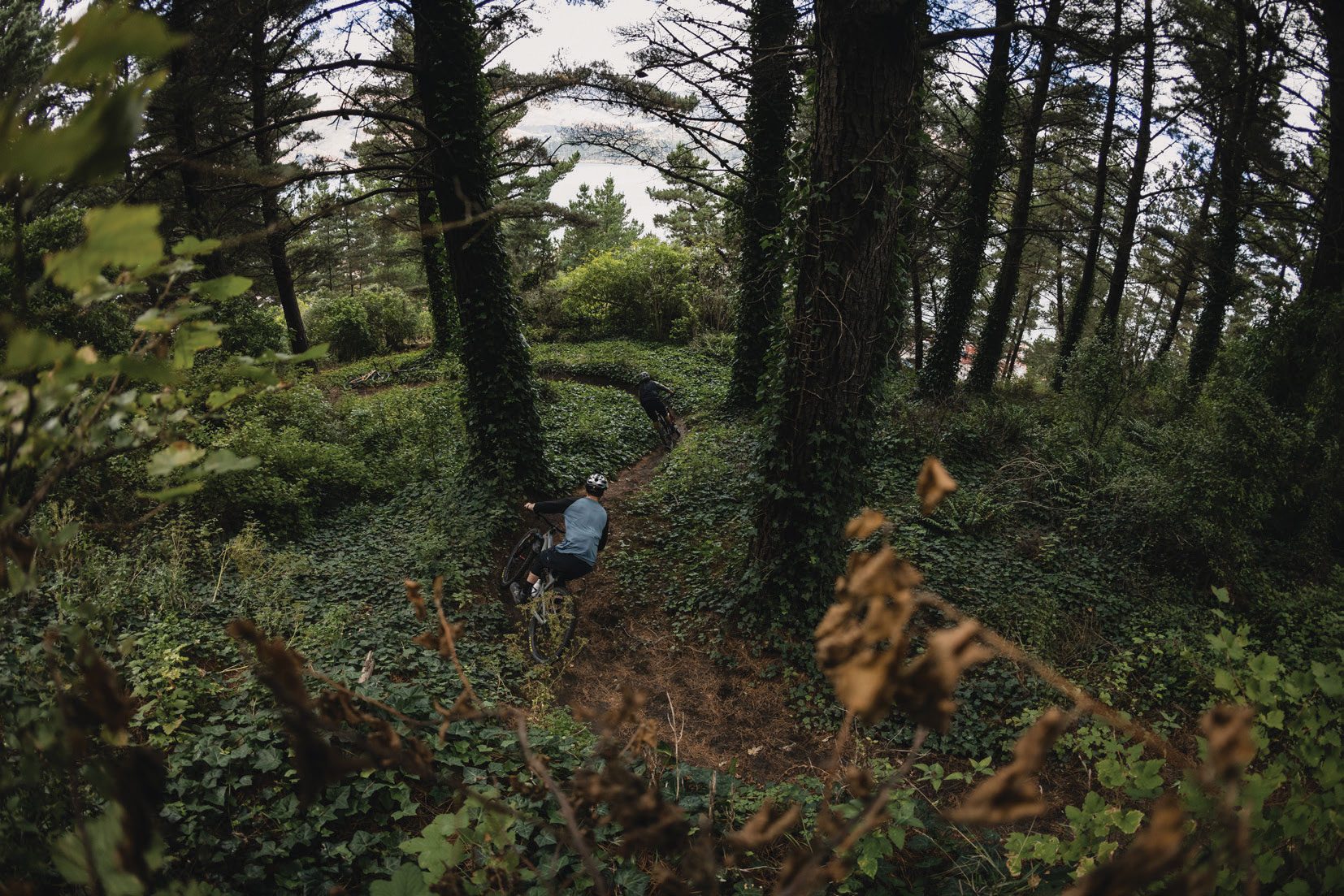
Location: Lyttelton
How’s the serenity!
Lyttelton is a treat, its own special vibe. Whether you pop out of the tunnel or drop down off the hill it’s clear you’ve stumbled upon a gem. Lyttelton is a quirky portside town filled with welcoming locals, excited tourists and, of course, the froth-searching mountain biker.
Loading up the truck and heading through the tunnel on a Saturday morning is my favourite way to get immersed in this quirky town. There’s nothing better than smashing out a few laps of the forest, then taking the time to explore the street market with its fresh food, produce and local goods. Or maybe even an impromptu half an hour yarn struck up with a traveling American tourist named Pete. Complement all of this with a hazy and a snack at Eruption, or maybe a flat white and scone at the coffee co-op, and it’s an epic way to spend the day.
You’ll often find Lyttelton bursting at the seams but, somehow, it always manages to retain a chilled and relaxed feel. Even the trails here seem to embody the same feeling, a nice way to escape the hustle and bustle of the city side tracks. It’s not entirely uncommon to lap out the forest and only share the stoke with yourself.
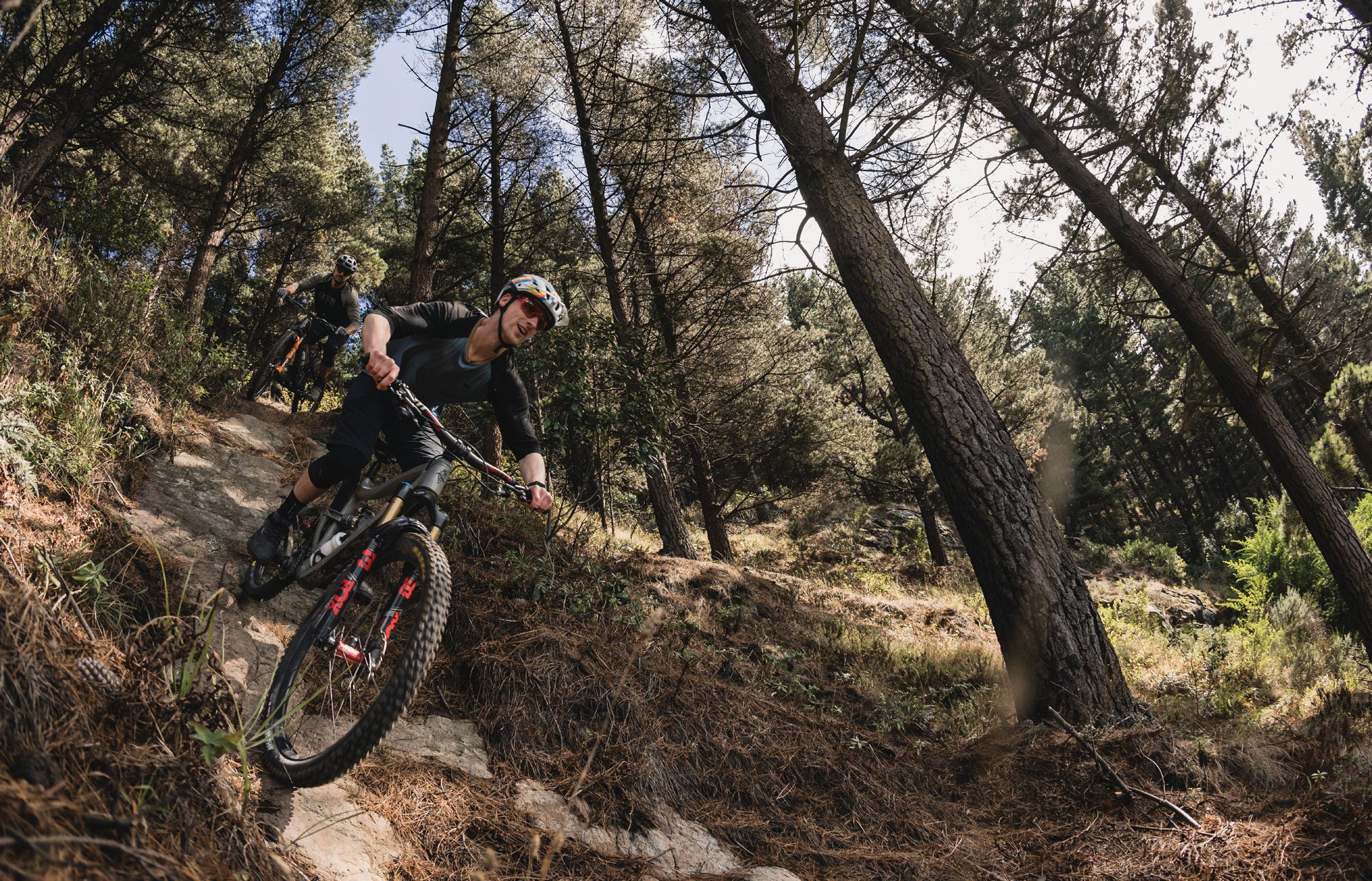
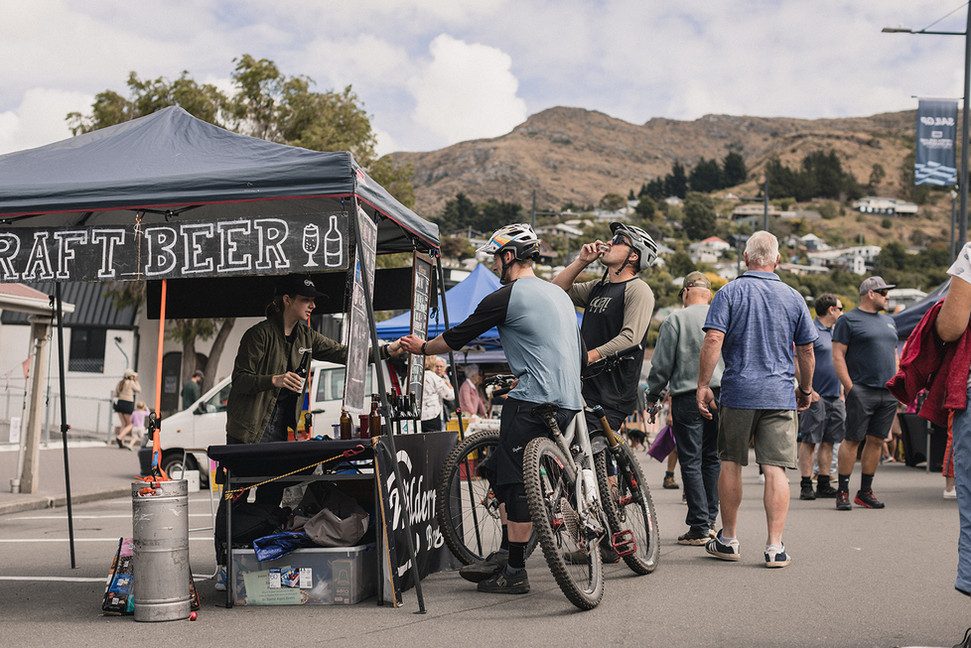
The Lyttelton trails are located in the Urumau Reserve, which is accessible from the top of Foster Terrace. Parking can be a little scarce and with the classic narrow Lyttelton streets, I just find it easier parking in the township and pedalling my way up. A large bonus of parking at the bottom is being able to exit the trails down onto Evan’s Pass when the times comes for your last lap. A rad road bomb back into town for a beer certainly beats an uphill ride back to the car.
Lyttelton, it has loam! It can often be a little haven of dampness sheltered from the hot winds that the northern side of the Port Hills face. Trails like Grommies make it feel like you’ve been transferred into the rainforest, with its green, dank vibes and native flora lining the forest floor.
The Urumau trails are constructed and maintained by the Lyttelton Mountain Bike Club, and their effort and hard work shines through in the quality of rider experience. Janky descents and flowy corners duck and weave through the canopy of trees; the trails cater for everyone.
As a Christchurch local, I can say Lyttelton is a ‘must ride’ spot in Canterbury. Whether it’s a day spent lapping out trails, or perhaps visited in conjunction with an epic ride out to Godley Heads. No matter the plan, make sure Lyttleton is on your list.
Trail Recommendation
Urumau Track – Stormer – Grommies
After-Ride Recommendation
Location: Eruption Brewing
Snack: Fish Taco
Drink: Hydration – Pyroclastic Haze
Accommodation
Rydges Latimer
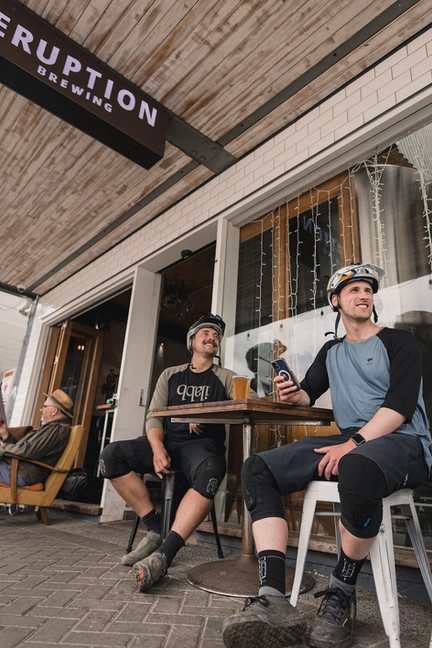
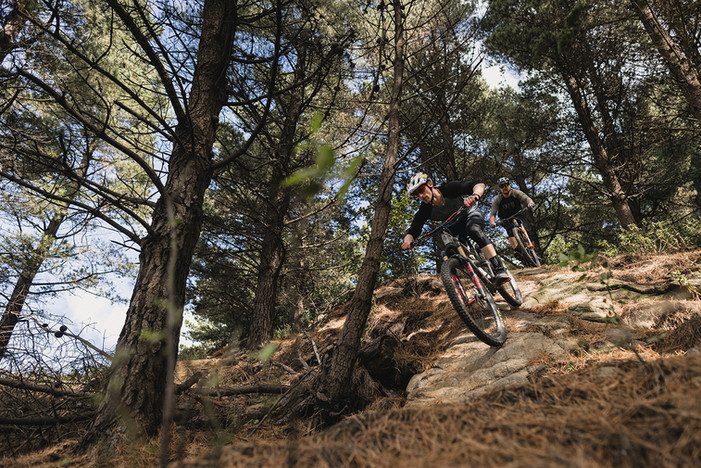
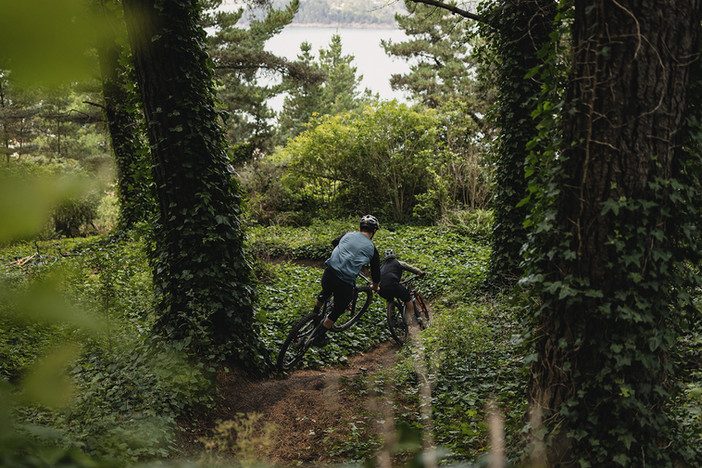
As a Christchurch local, I can say Lyttelton is a ‘must ride’ spot in Canterbury. Whether it’s a day spent lapping out trails, or perhaps visited in conjunction with an epic ride out to Godley Heads. No matter the plan, make sure Lyttleton is on your list.
Trail Recommendation
Urumau Track – Stormer – Grommies
After-Ride Recommendation
Location: Eruption Brewing
Snack: Fish Taco
Drink: Hydration – Pyroclastic Haze
Accommodation
Rydges Latimer
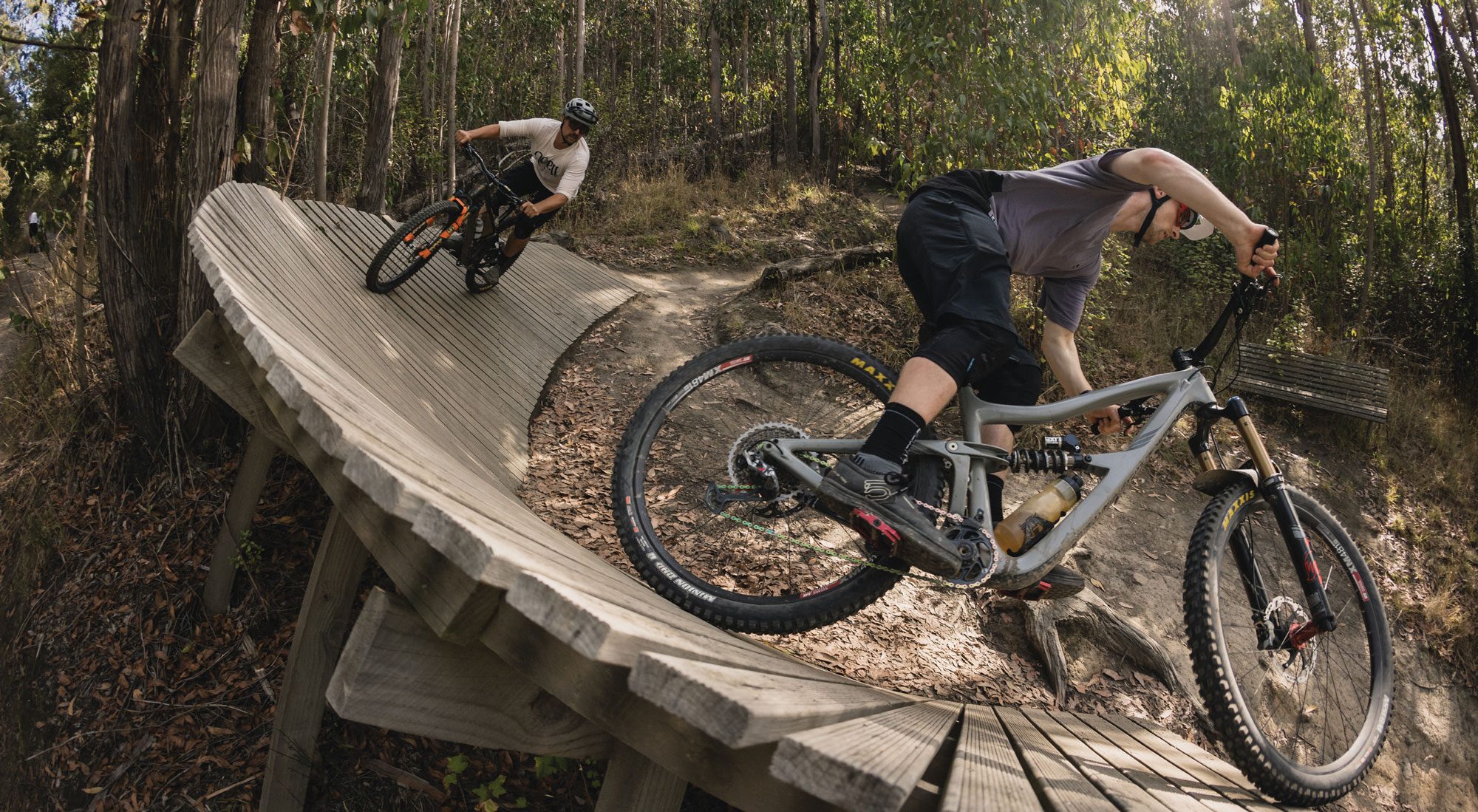
Location: Victoria Park & Port Hills (Te Poho-o-Tamatea).
This area was formed over 12 million years ago through intense volcanic activity. What remains is the left overs of the Lyttelton crater lake. The terrain is perfect for mountain biking – long, gradual ridges and deep valleys are dotted with trails, spreading from the east with Godley Heads and Lyttelton, across to the western side, where you’ll also find Halswell Quarry Park. Conveniently parked right in the middle is Victoria Park and the Christchurch adventure Park. It’s hard to ignore the calling of these infamous hills, even when you are immersed deep in the city centre; the tussock covered slopes are always beckoning.
For me, Victoria Park (and Bowenvale Valley even more so) is the spiritual home of mountain biking in Canterbury. Core memories of dusty shuttle days, and time spent watching wild National Races in the early 2000’s, quickly flood back to mind. The rock and roll days of early DH racing will always be a part of Victoria Park, but it seems the times have changed – you’re more likely to find trail riders out cutting laps now, or even the odd rogue gravel rider punishing themselves battling on the drops.
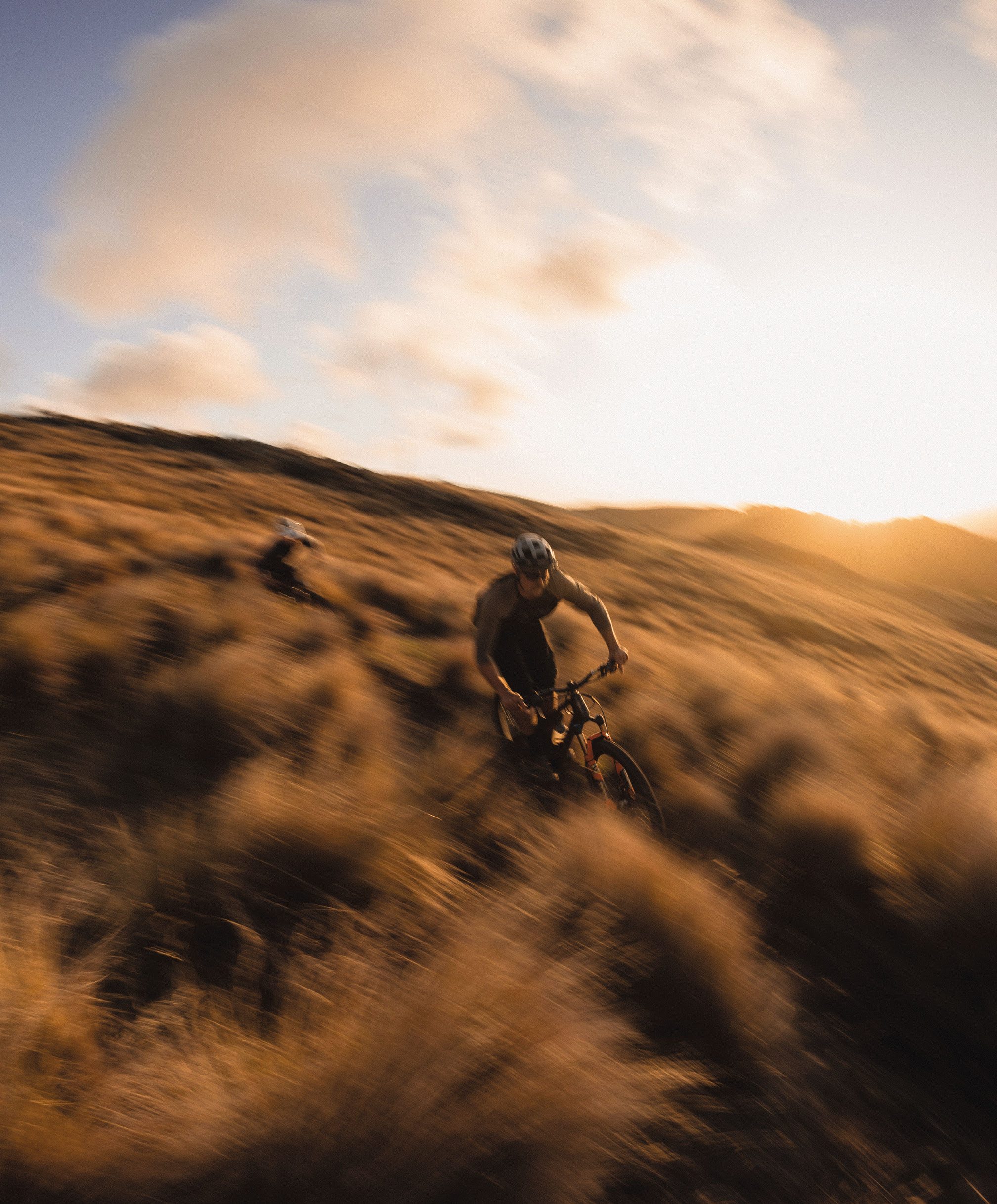
The vintage days of Iron Horse Sundays and Foes Mono’s slapping corners may be a distant memory but the trails that founded my froth are still here. The likes of Lava Flow and Huntsbury DH are still local favourites and with rapid descents and epic vistas these are ‘must rides’! It’s best on a sunset so ensure you pedal up in the evening light to see and capture it.
Accessing the park is a breeze – the evolution of drivetrains and wide range cassettes make climbing the fire roads a far more enjoyable affair. The park also has many access points. If you like a challenge, park up at the head of Bowenvale Valley and sweat your way up the 4WD road – see if you can clear the pinches without dabbing! Personally, I find the park best experienced when accessed with a classic Rapaki track climb. Pair that with a pedal west across the iconic traverse trail and you have an iconic loop!
The traverse trail itself is a must ride and is as Christchurch as it gets. The narrow tussock lined corridor leads riders from one side of the city to the other. A multi-direction trail, it offers both descending and climbing options and exceptional views from the Pacific Ocean right around to the Southern Alps.
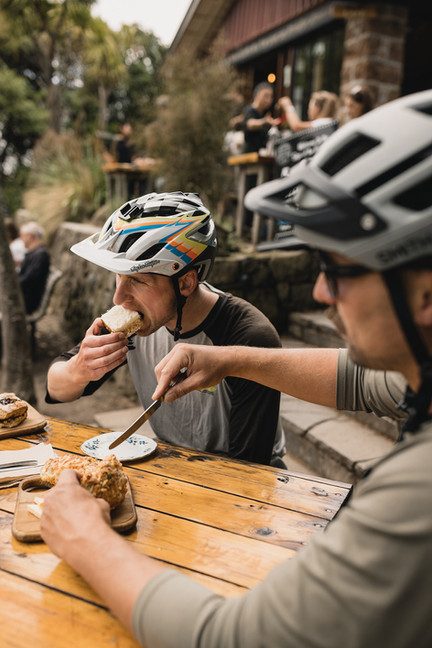
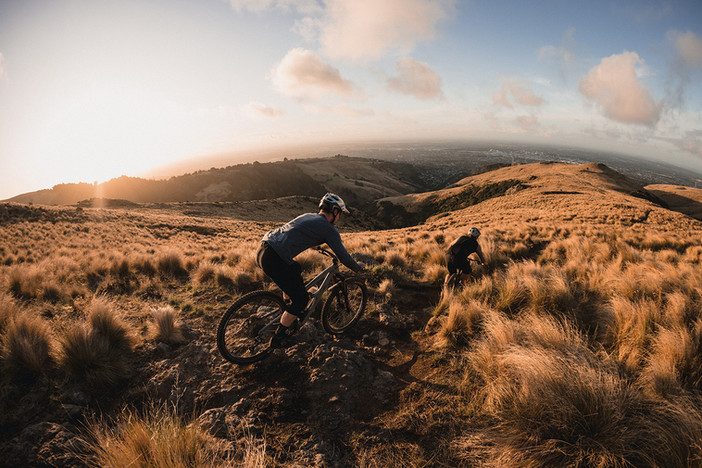
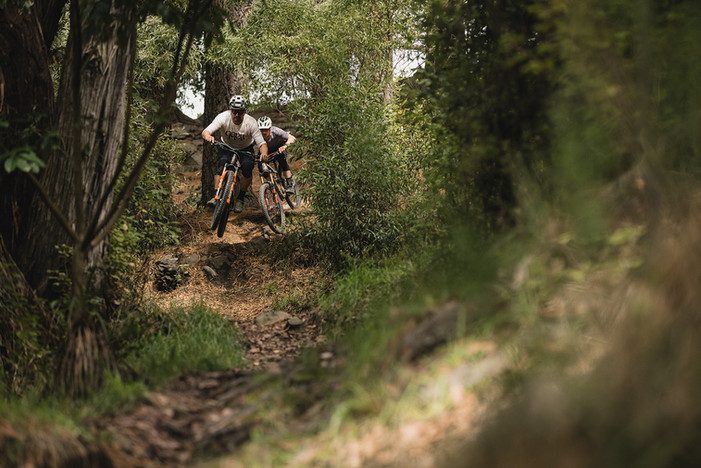
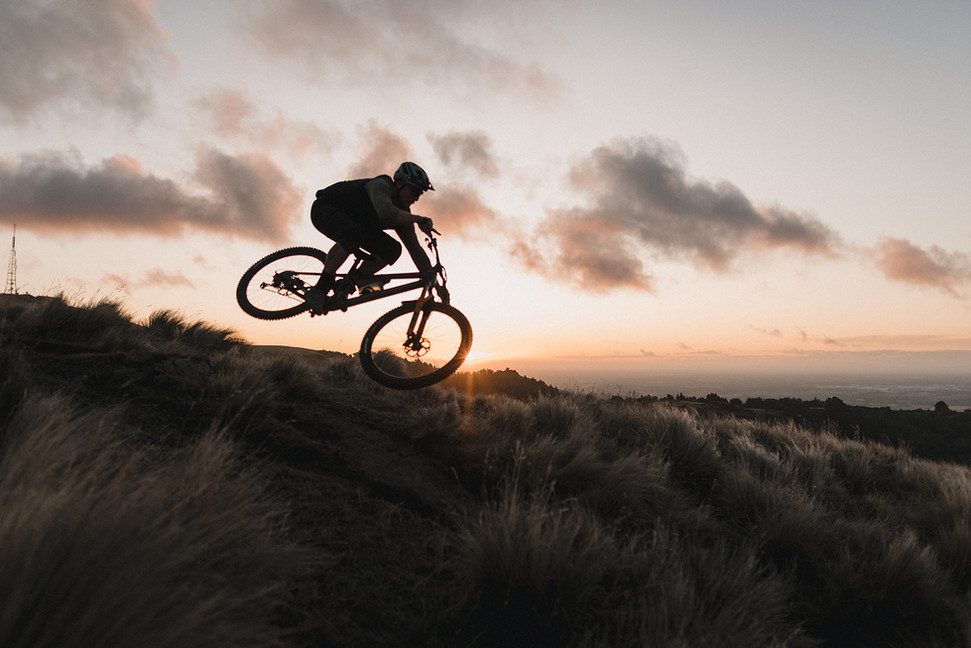
Trail Recommendation – Scenic Option
Rapaki – Traverse Trail – Brakefree – Sesame ST – Bike Park Connector
2000’s Flash Back Option
Tilted Sally – East Side Bush Track – Bridges
After-Ride Recommendation
Location: Moon Under Water
Snack: Fried Chicken Burger
Hydration: Alpha Juice
Accommodation
Rydges Latimer
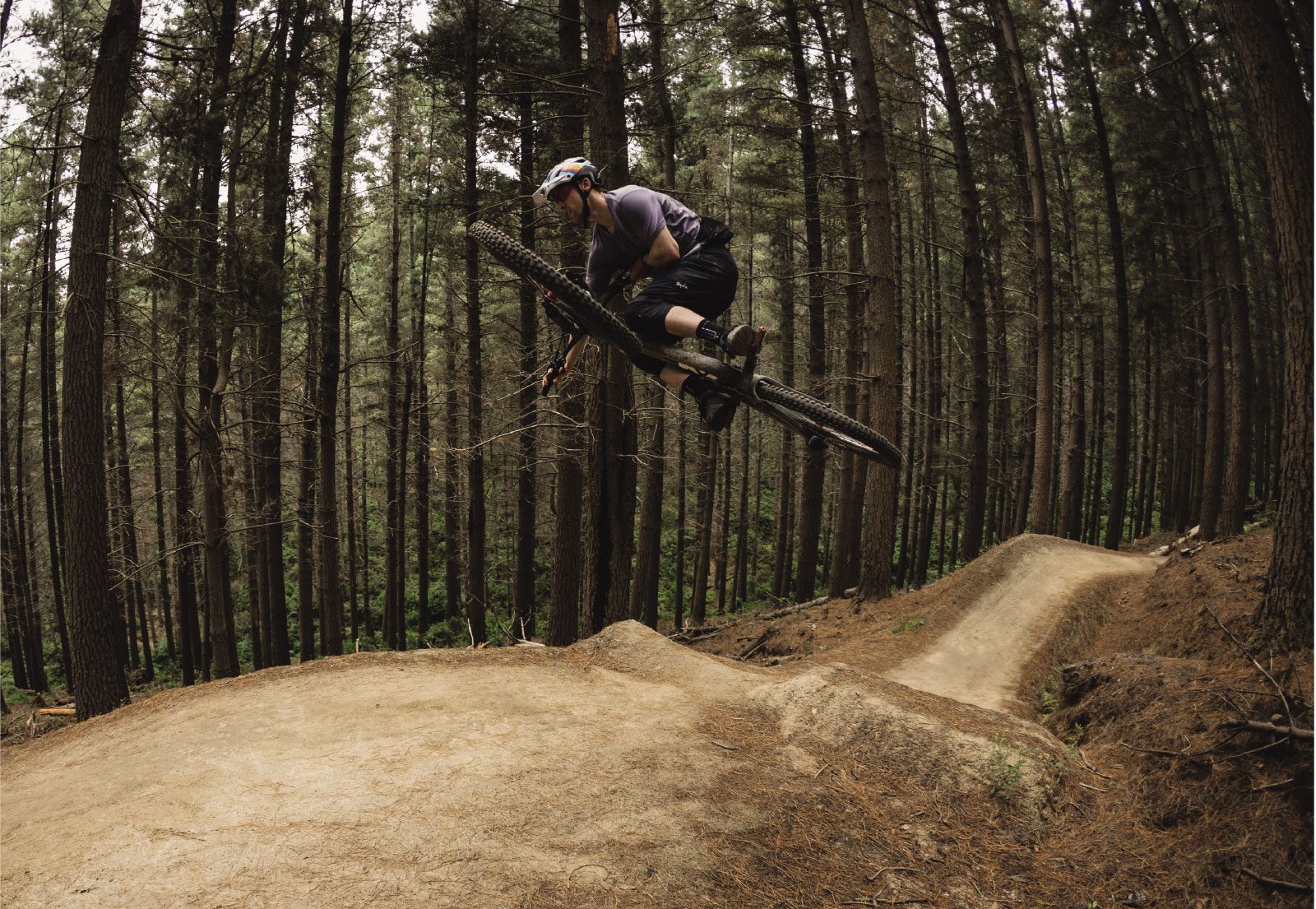
Location: Christchurch Adventure Park
Nestled in the shadow of Marley’s Hill lies the Christchurch Adventure Park. The park is a dream come true for local riders and offers a fully lift accessed mountain bike park as well as a zip line and numerous hiking trails.
The Christchurch Adventure Park (CAP) has risen like a phoenix from the ashes (hence the name of its annual Phoenix Enduro Race) after being badly damaged by the Port Hills fires, back in 2017. A strong effort from local volunteers and the trail crew at CAP meant no time was wasted in getting the park back into action.
I’ve found the park has been a great way to introduce new riders to mountain biking – the ease of lift access and variety of trails available ensures there are options for everyone. Getting your significant other involved in the sport has never been easier. Failing that, there’s always the bar at the bottom as a last resort, to reconcile any differences. Turns out, there’s only so many times someone wants to be told how to go around a corner before my instructions grow thin….
The park sits just to the west of Victoria Park, meaning an easy traverse back and forth between the two can open up an even wider network of trails, all easily accessed from the ease of a chairlift ride. I personally like to use the lift to save my legs, and every now and sneak my way over to Victoria Park for the ultimate combo of park and tech fun!
In true Park Rat style, my favourite haunts are Askins and Gung Ho, two blue trails that loved to be lapped. Gung Ho being a technical blue trail, rapid and fun at high speed, and Askins is a blue jump trail. Both I find are pretty forgiving – the kind of trail that, when you’re on one, you can fully unleash and feel like a pro – but, in contrast, also the kind of trail you could head down when you’ve got that one mate who’s convinced they were almost pro once but can’t seem to stay upright on a bike now. You’ll both still have fun.
Really, my true favourite haunt at the Christchurch Adventure Park is the café and bar – the home of hot food and cold beer! The deck here is a great spot to watch riders with more skill then myself fly over the ‘Mulch’ jump and pull shapes most gymnasts would be happy with.
After the realisation that the skills you thought were once there are definitely now gone, make sure you swing into the skills area on your ride out. An area loaded with progressive jumps, corners and drops, a few sessions there and you’ll be on the ‘Mulchie’ in no time.
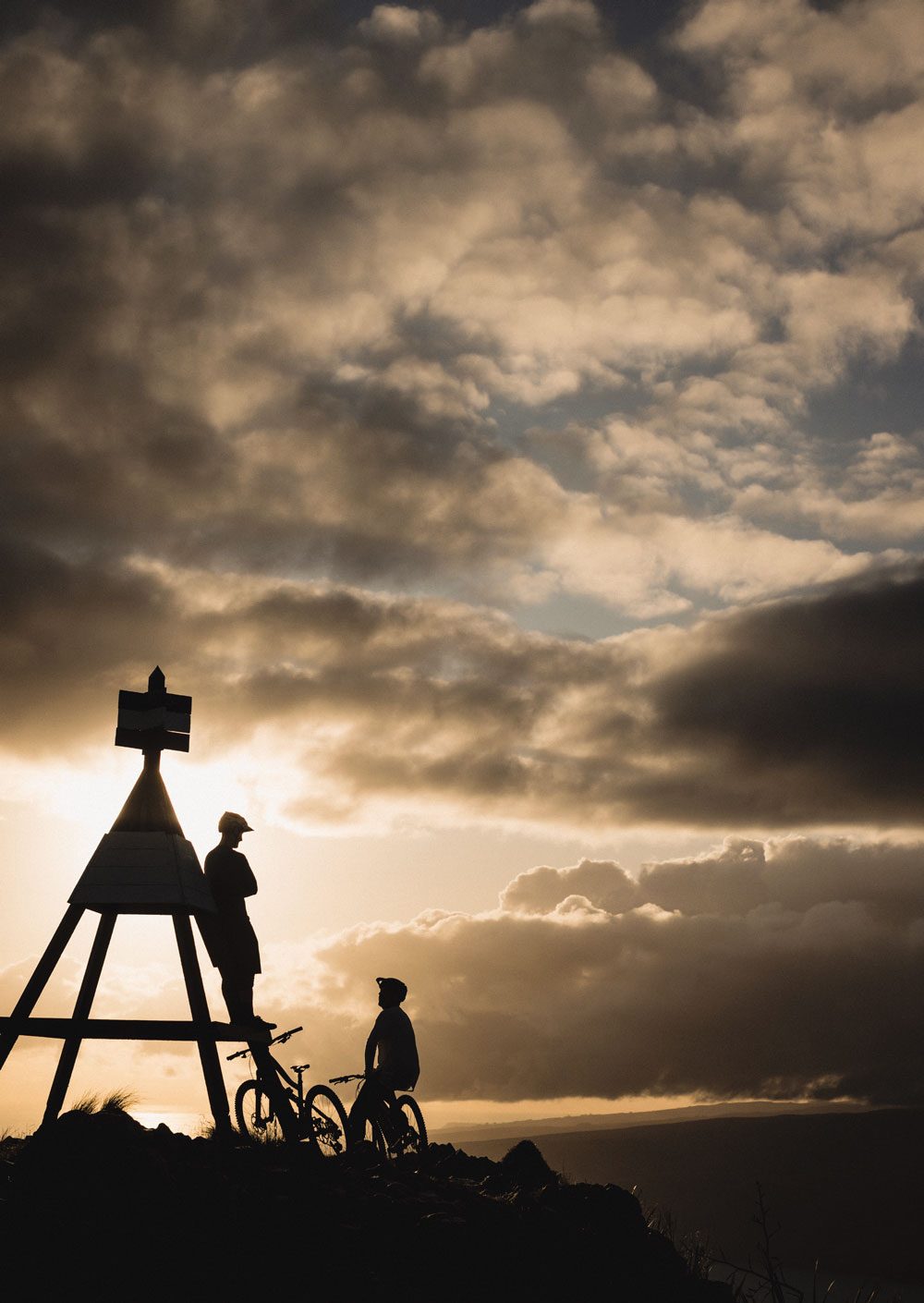
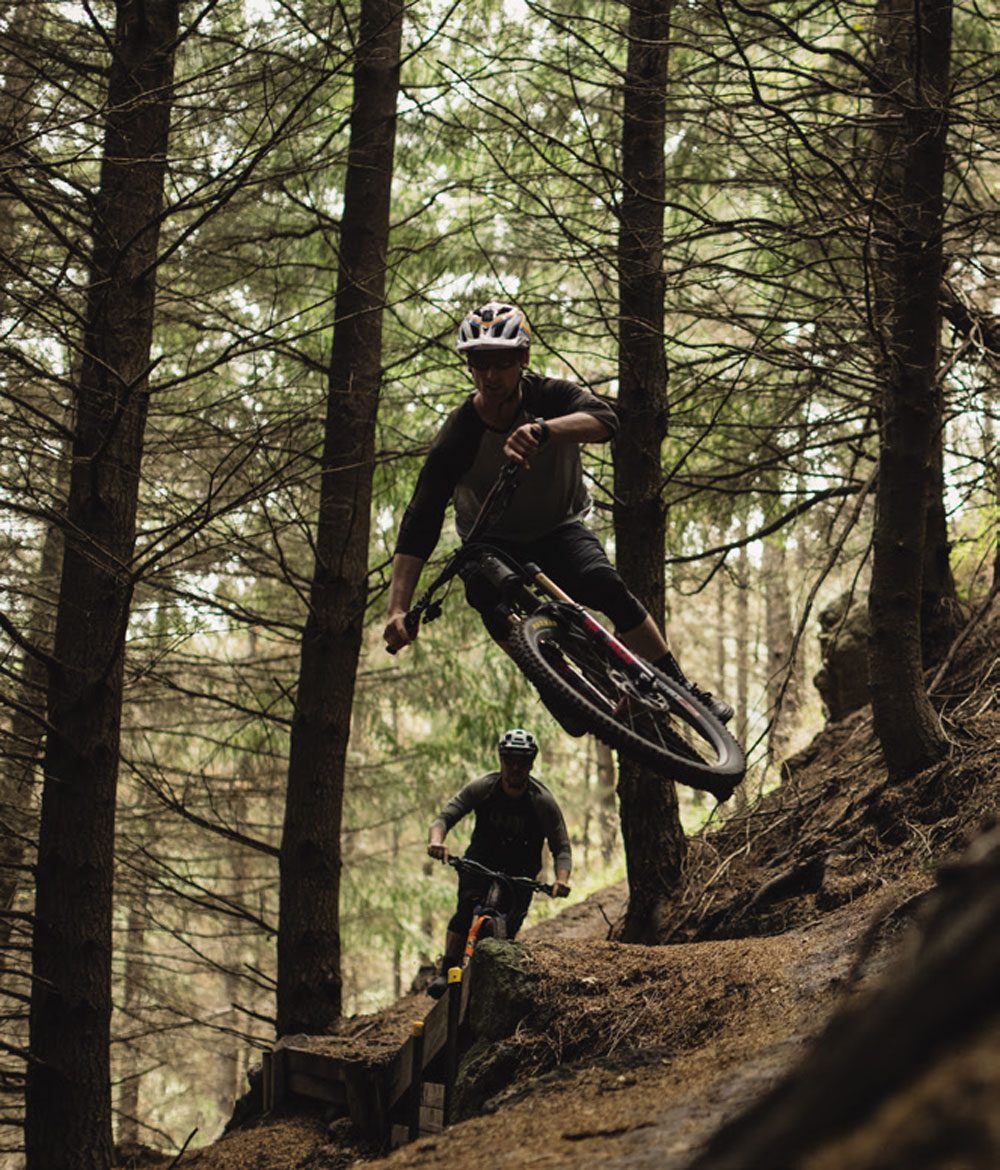
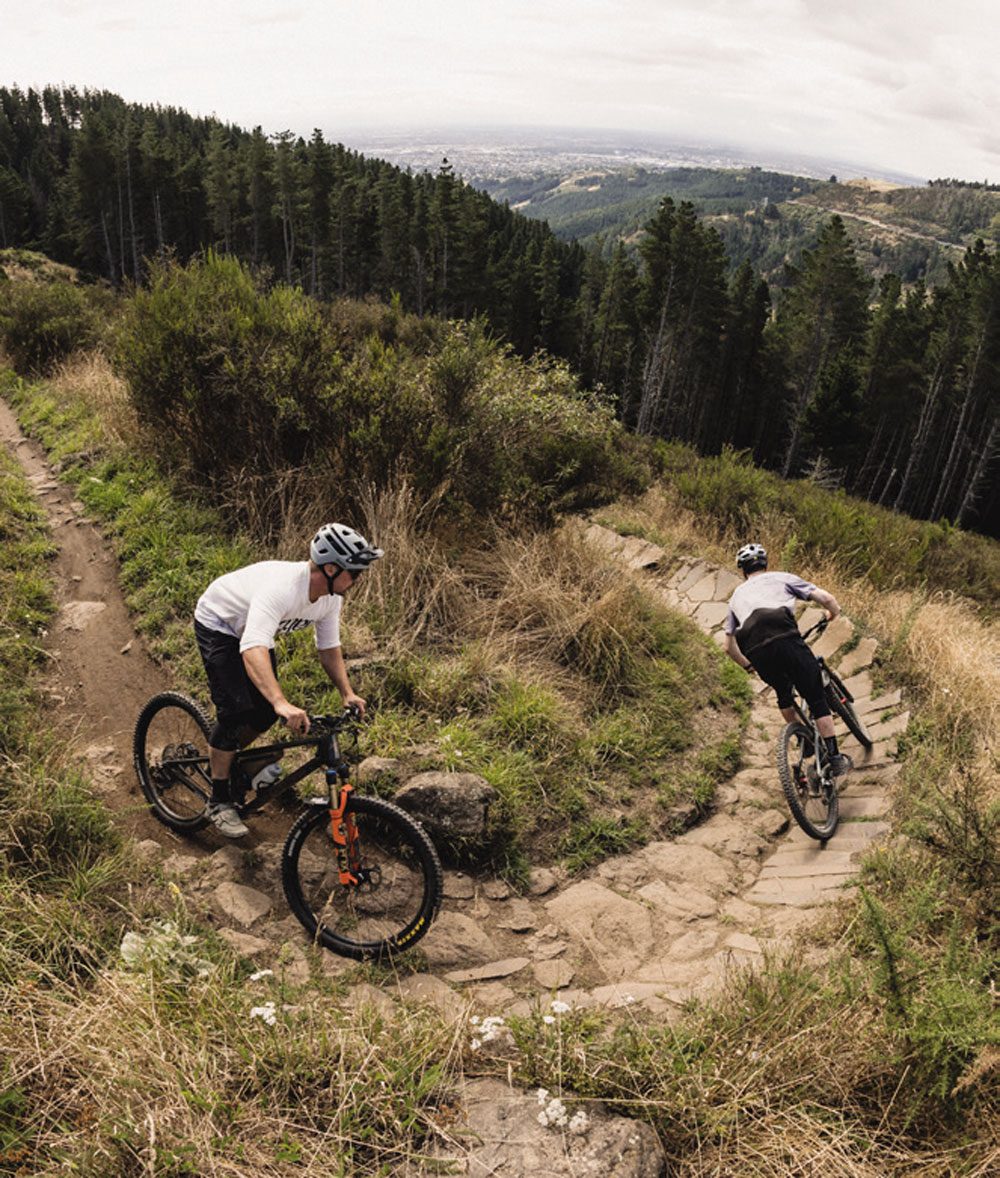
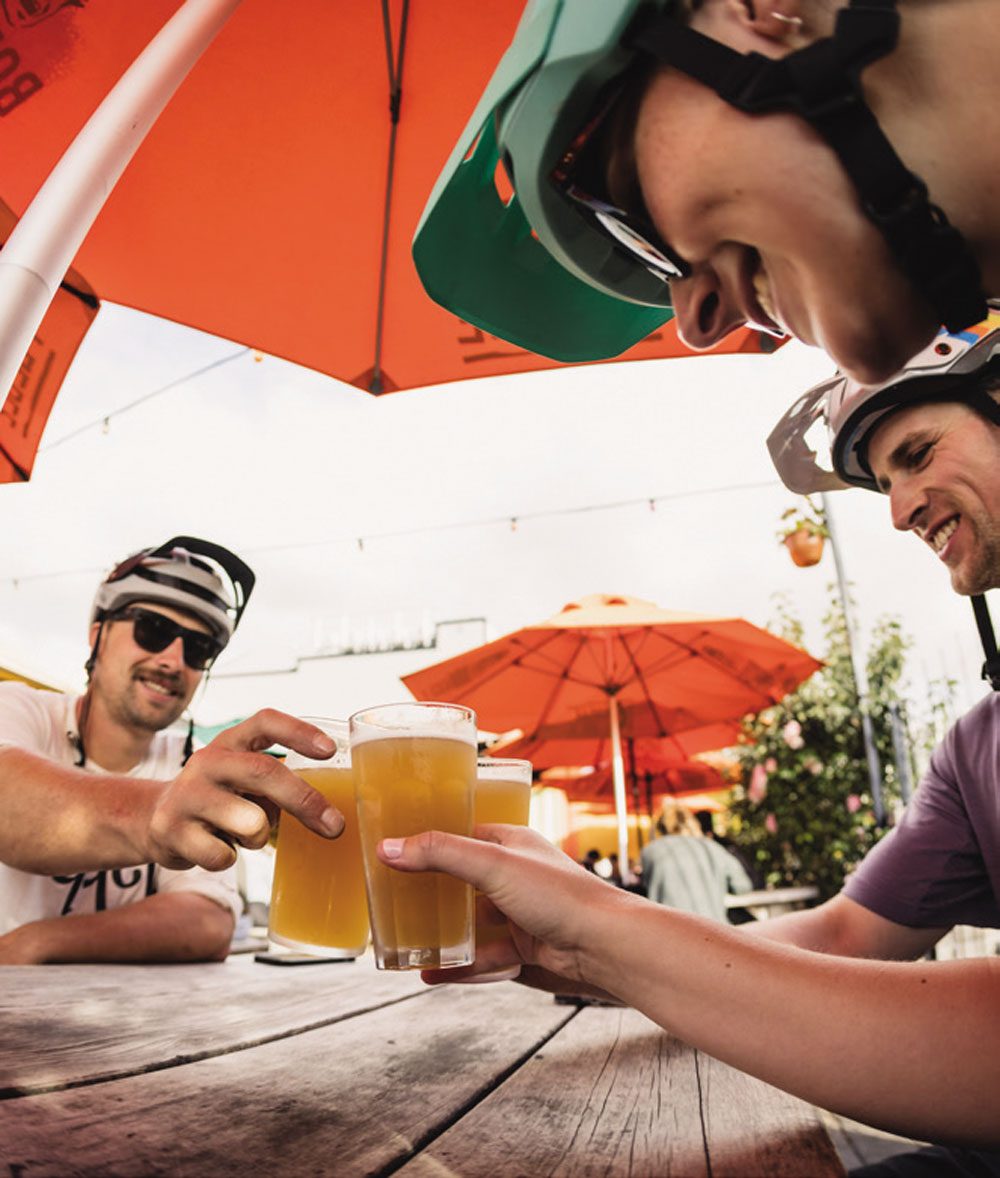
Trail Recommendation
Summit Connector – Flying Nun – Choir Boy – Gung Ho
After-Ride Recommendation
Location: Adventure Park Café & Bar
Snack: Karaage Chicken Sushi Bowl
Hydration: Cassles Nectron IPA
Accommodation
Cathedral Square Novotel
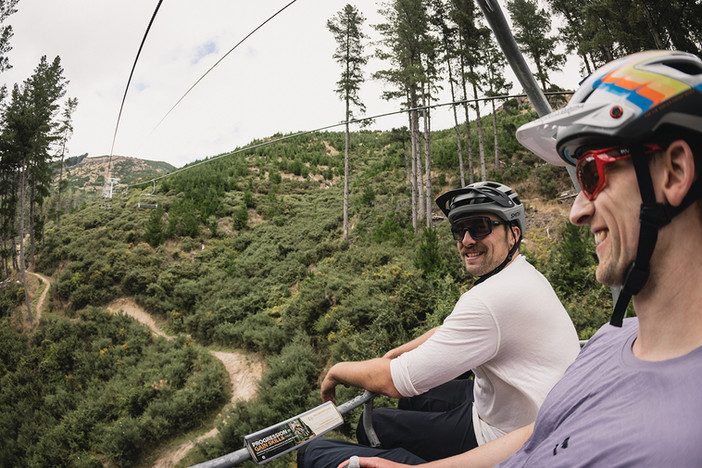
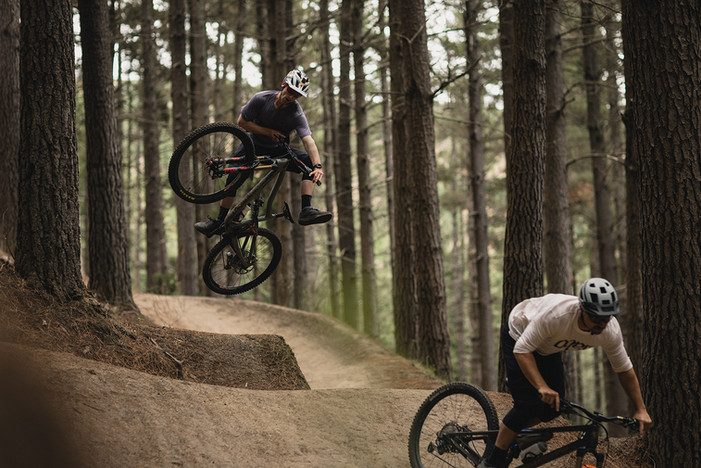

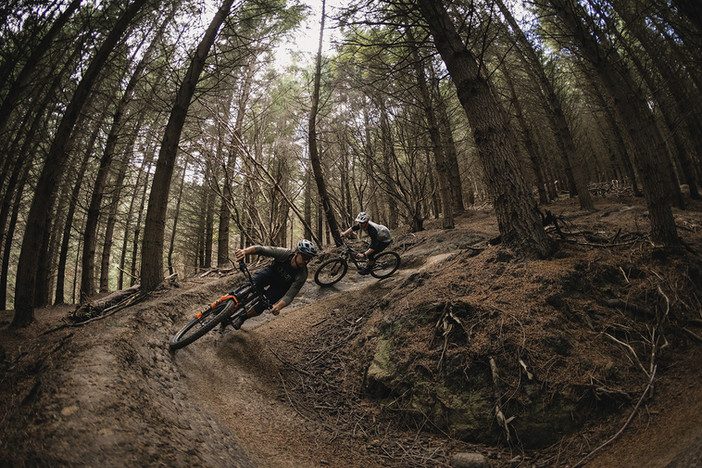
The riding gems are many within Ōtautahi’s city borders. Being predominantly flat and surrounded by hills means that whenever you descend a trail, you can easily get to your crib or digs. It’s also very easy to navigate and, in this modern age, a device will help direct you anyway. The intersection of unique city flair mixed with vibrant outdoor culture makes it shine. You can easily ride flow or technical trails and then be immersed in a café, city bar or restaurant for provisions and replenishment before heading back to the hills or calling it a day. The cycling culture is everywhere you look – people are on bikes! From commuters and roadies to gravel riders and, most often, mountain bikes – especially when you get close to the Port Hills. The riders range from young groms right through to old dogs and pretty much everyone in between.
Ōtautahi has a vibe, it’s going places and there’s a heap going on. The riding here just gets better and better, and you can see why world-class riders reside here. With riding in such close proximity to the city, with epic spots all around, this location is not to be missed.





